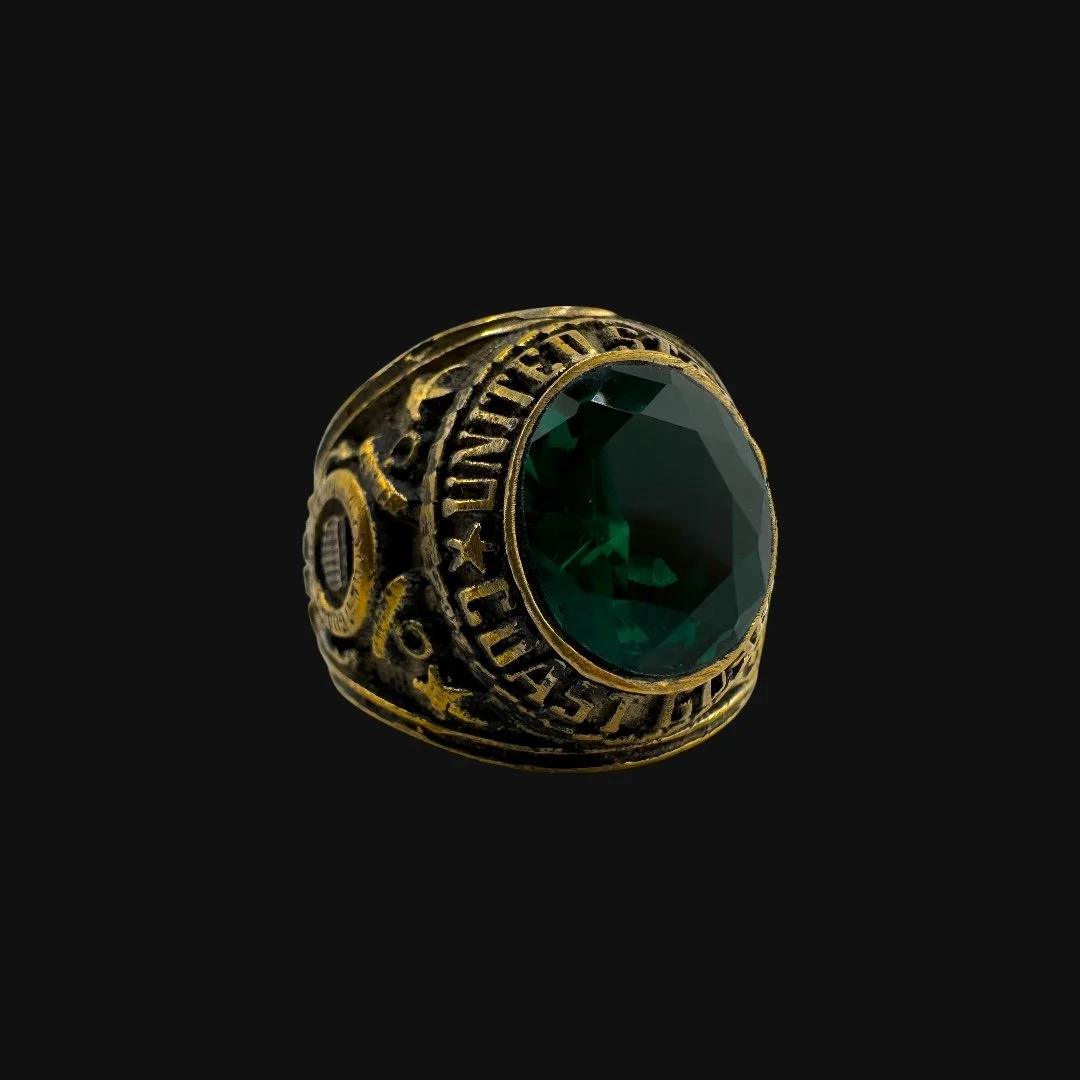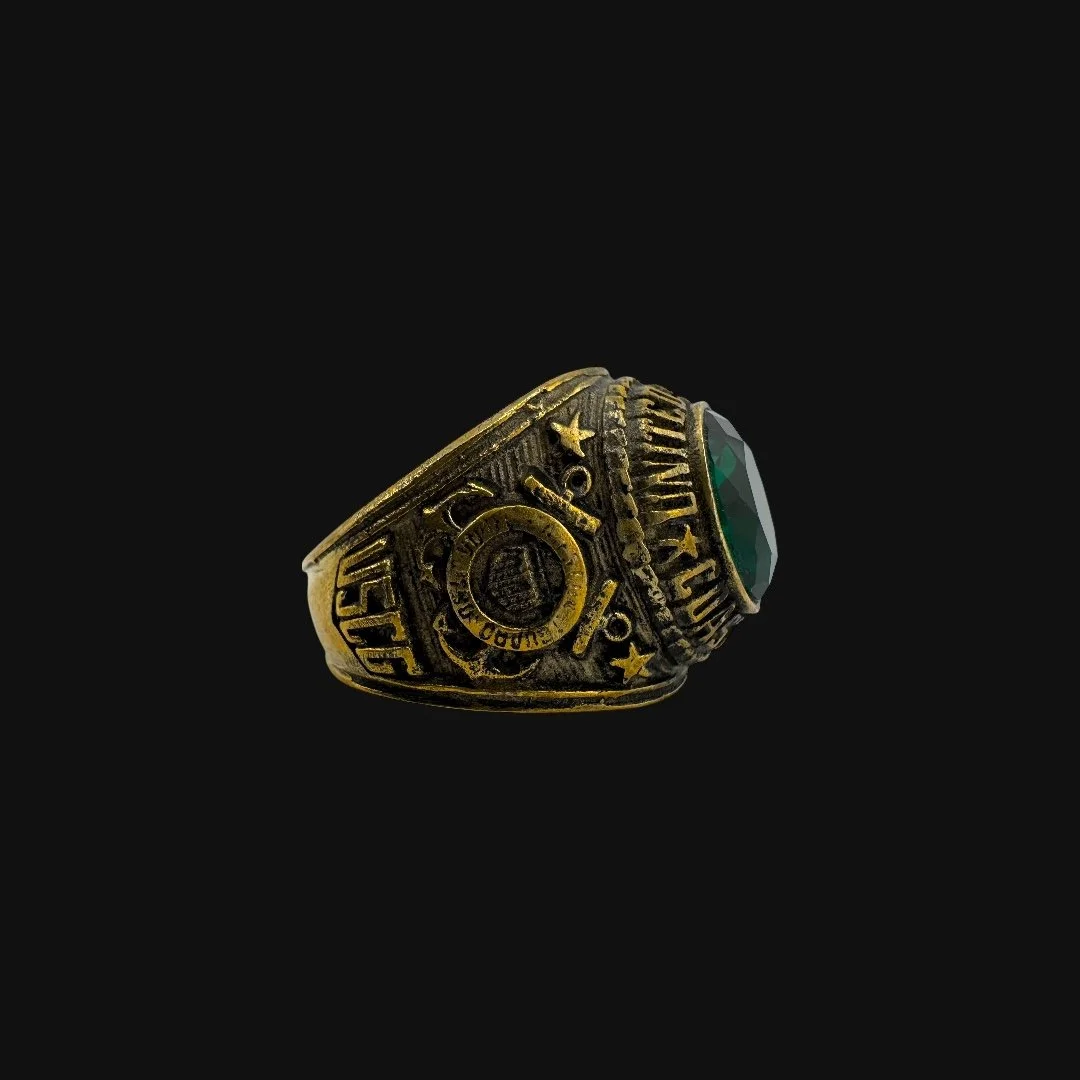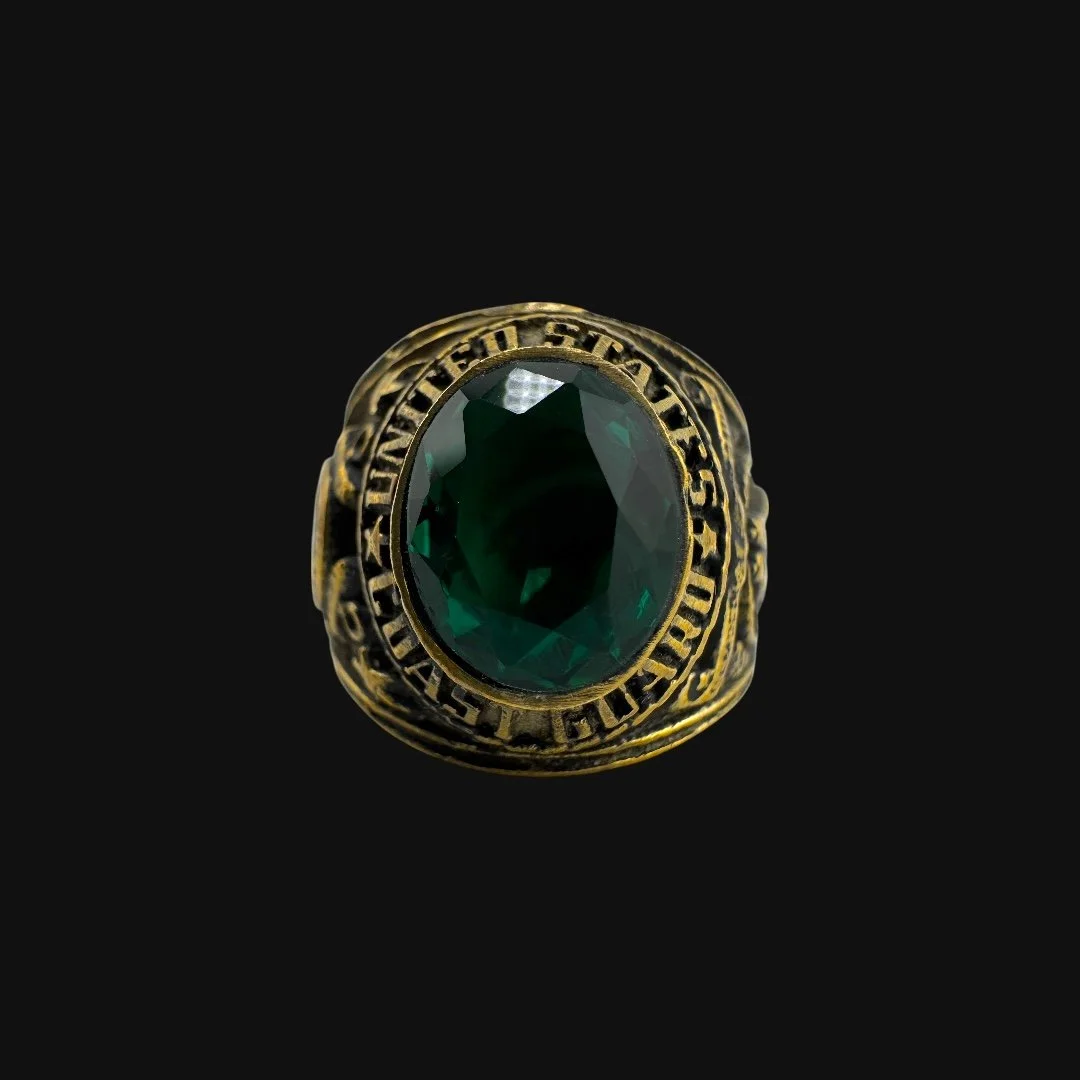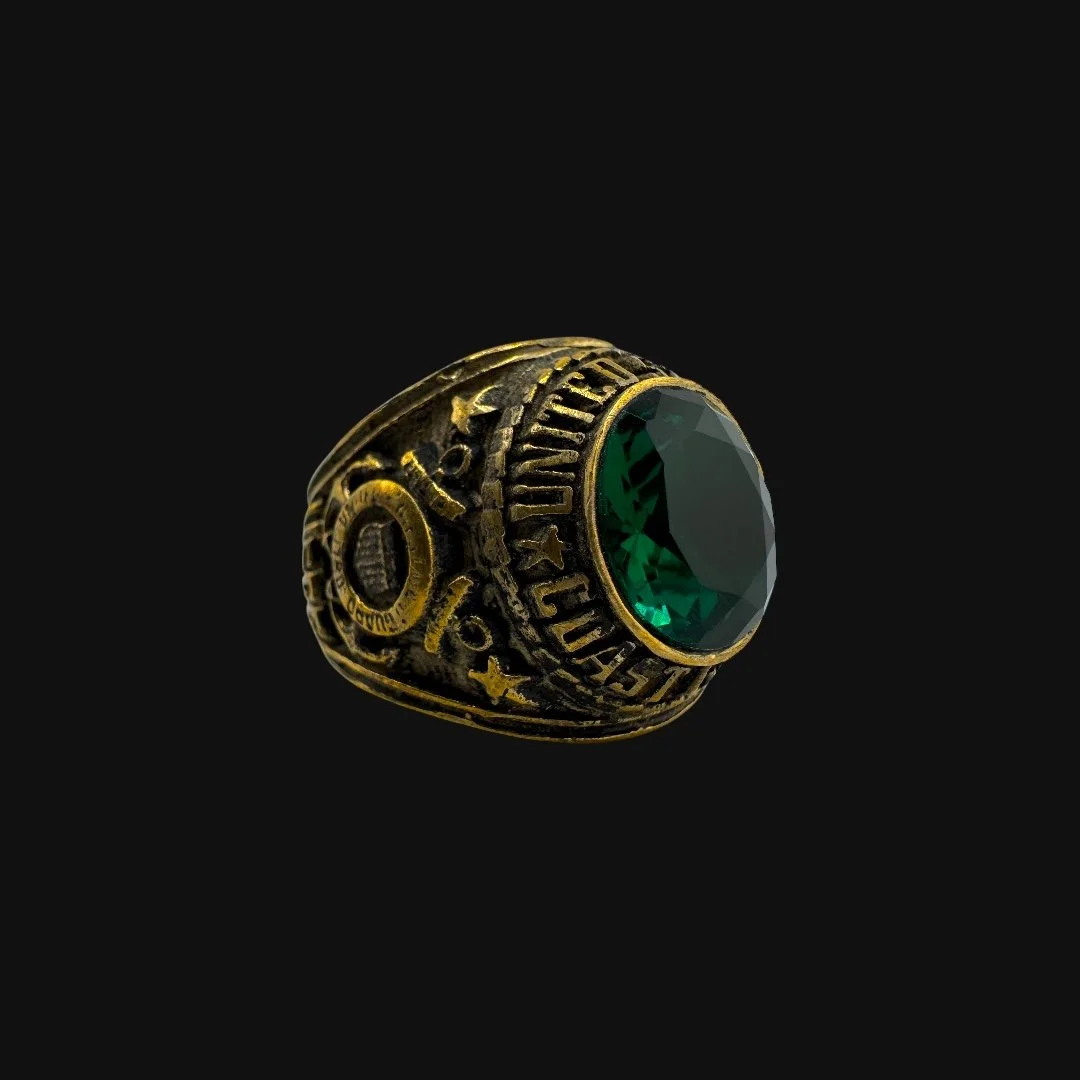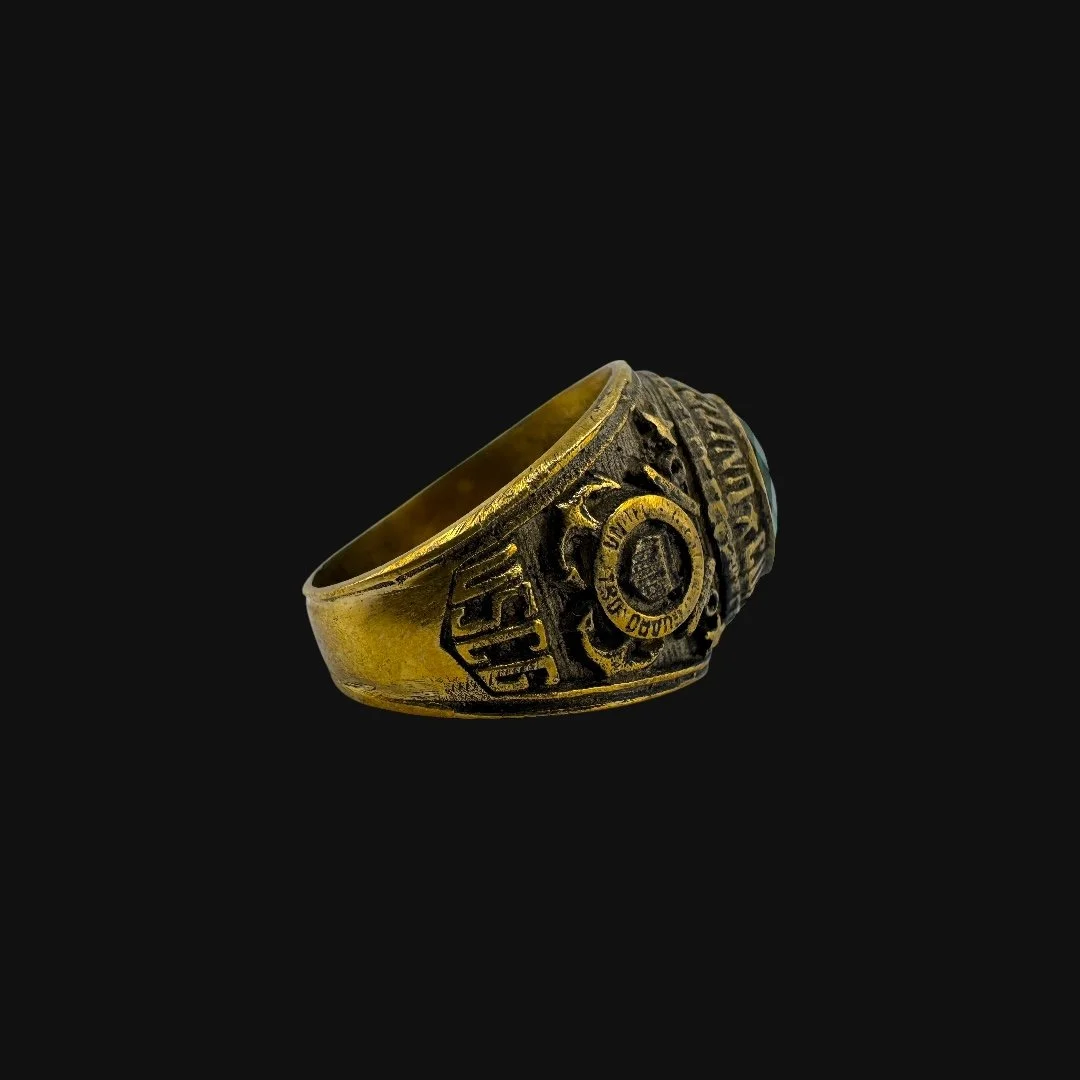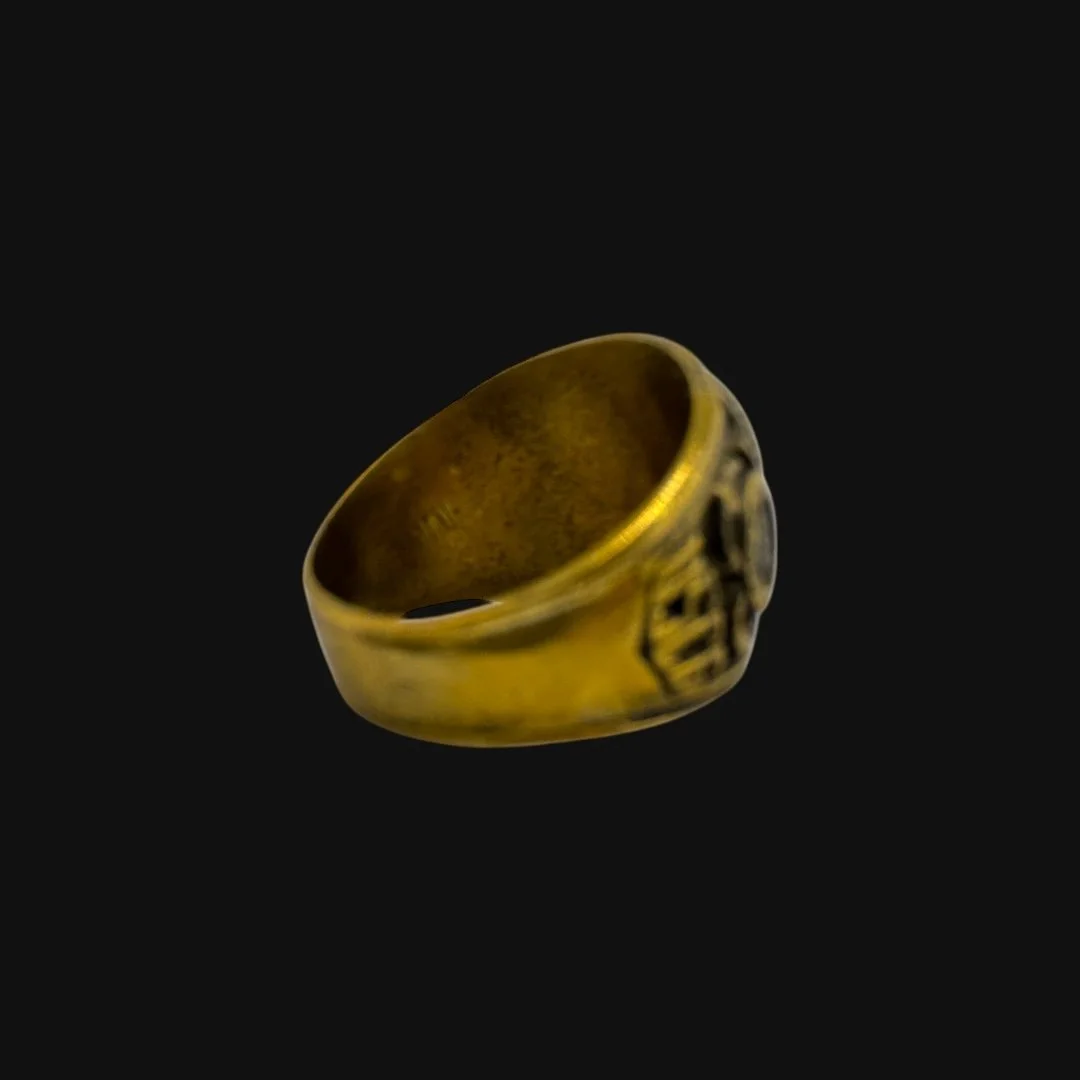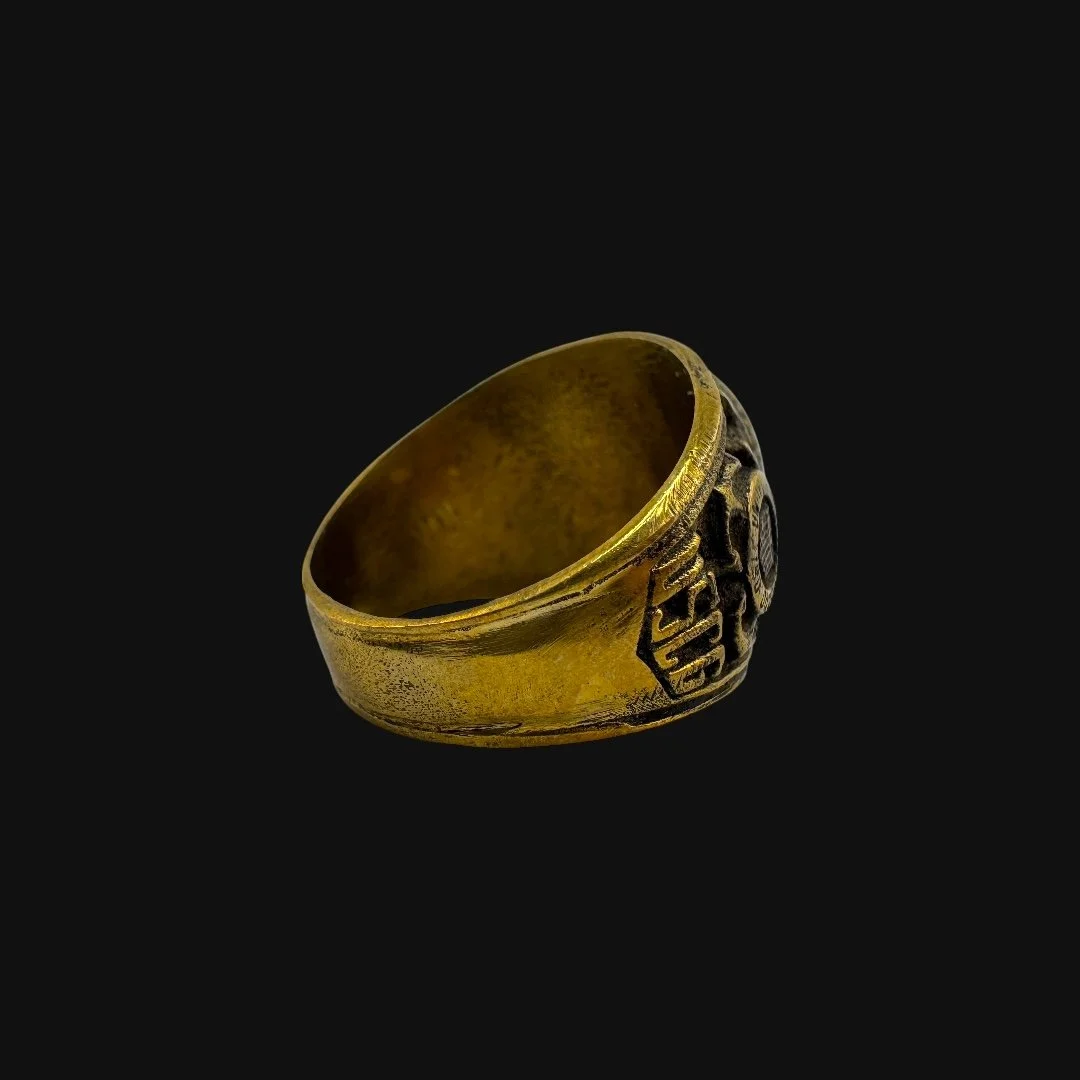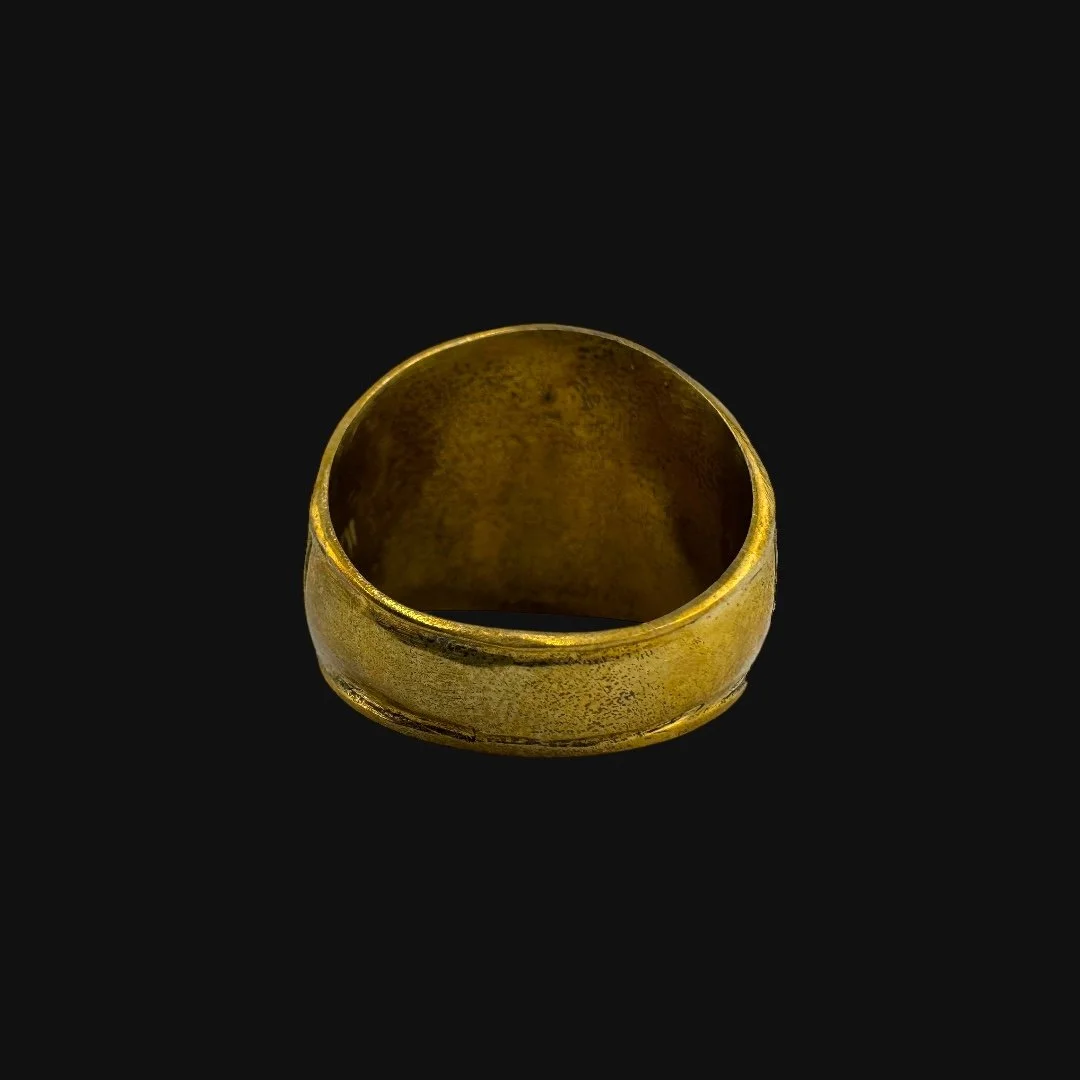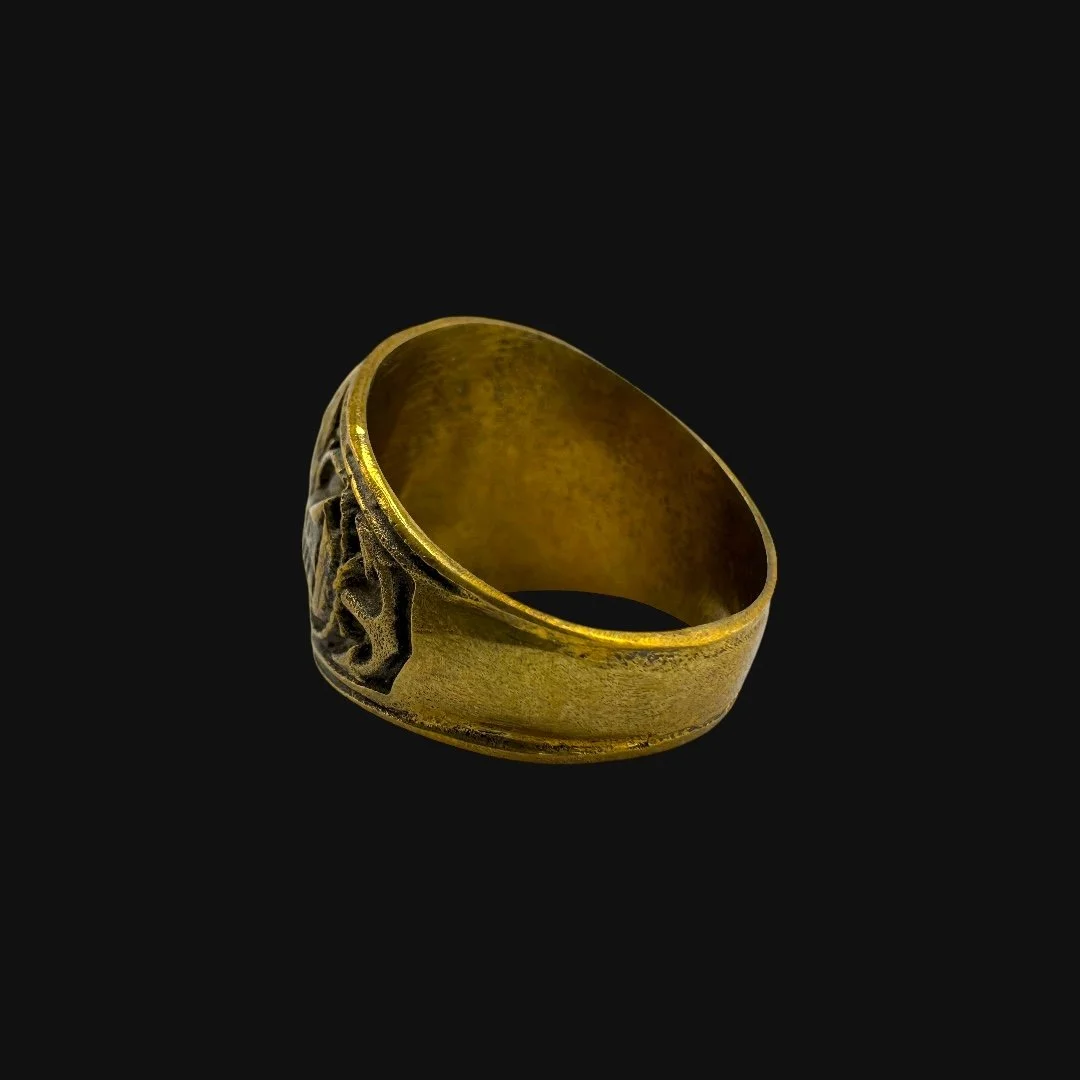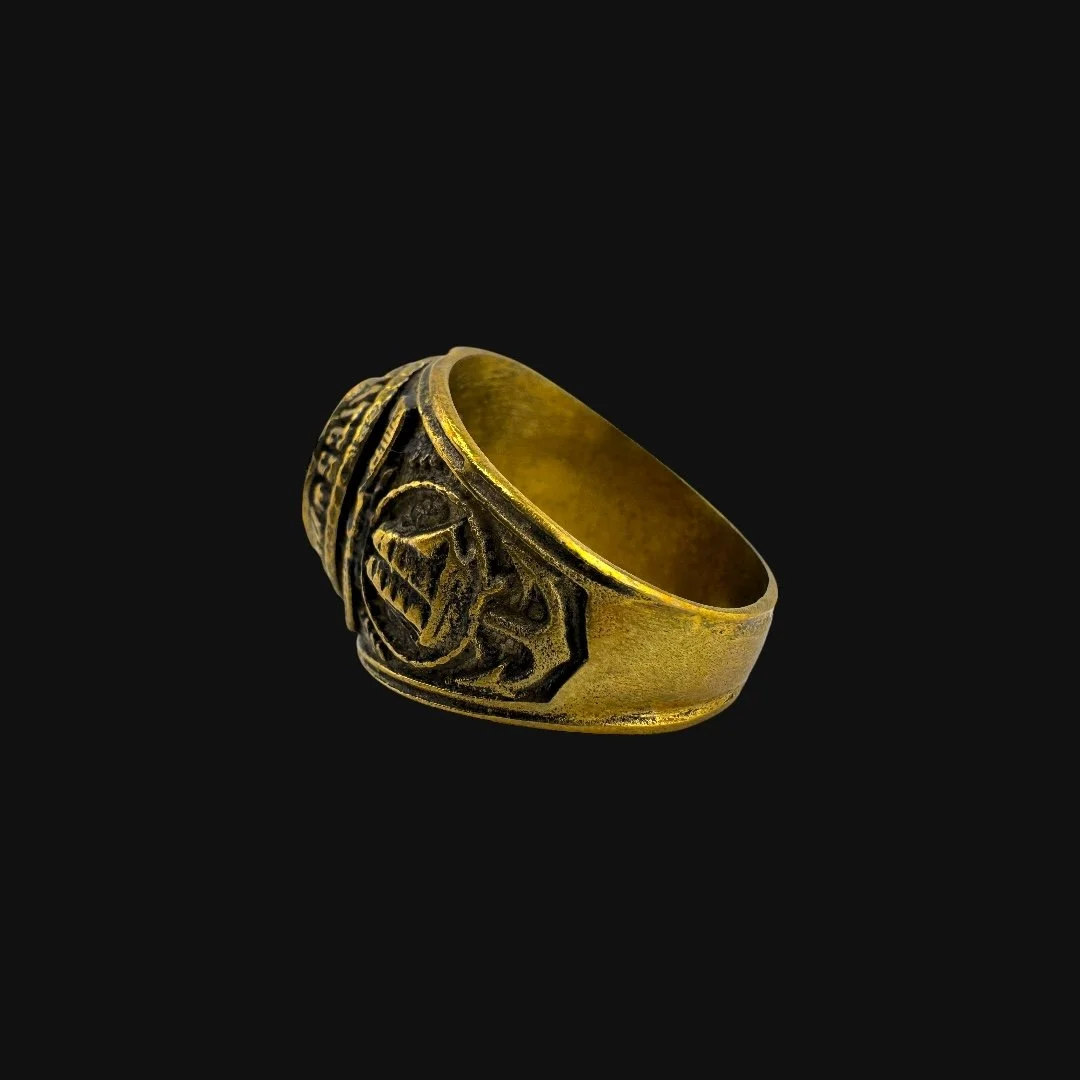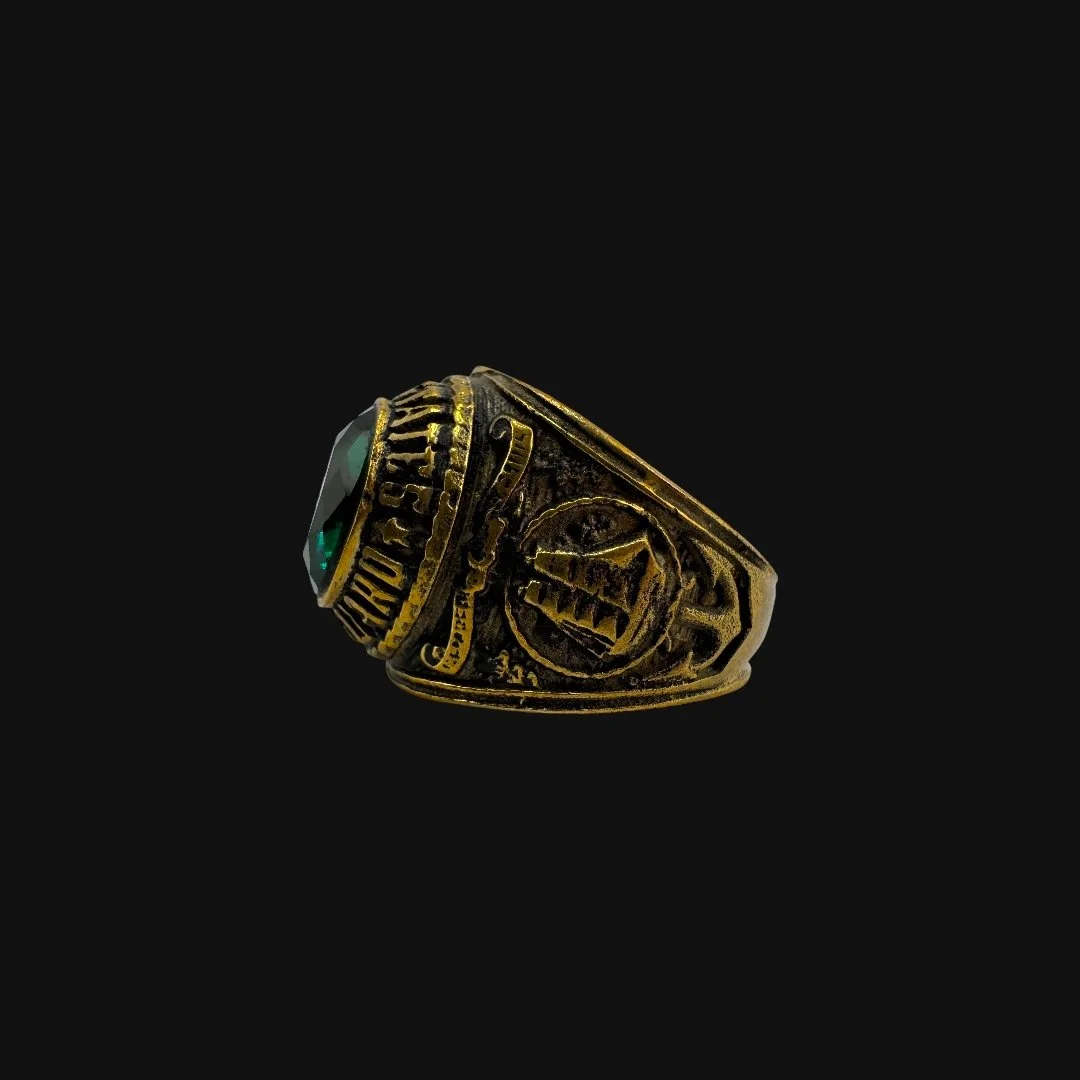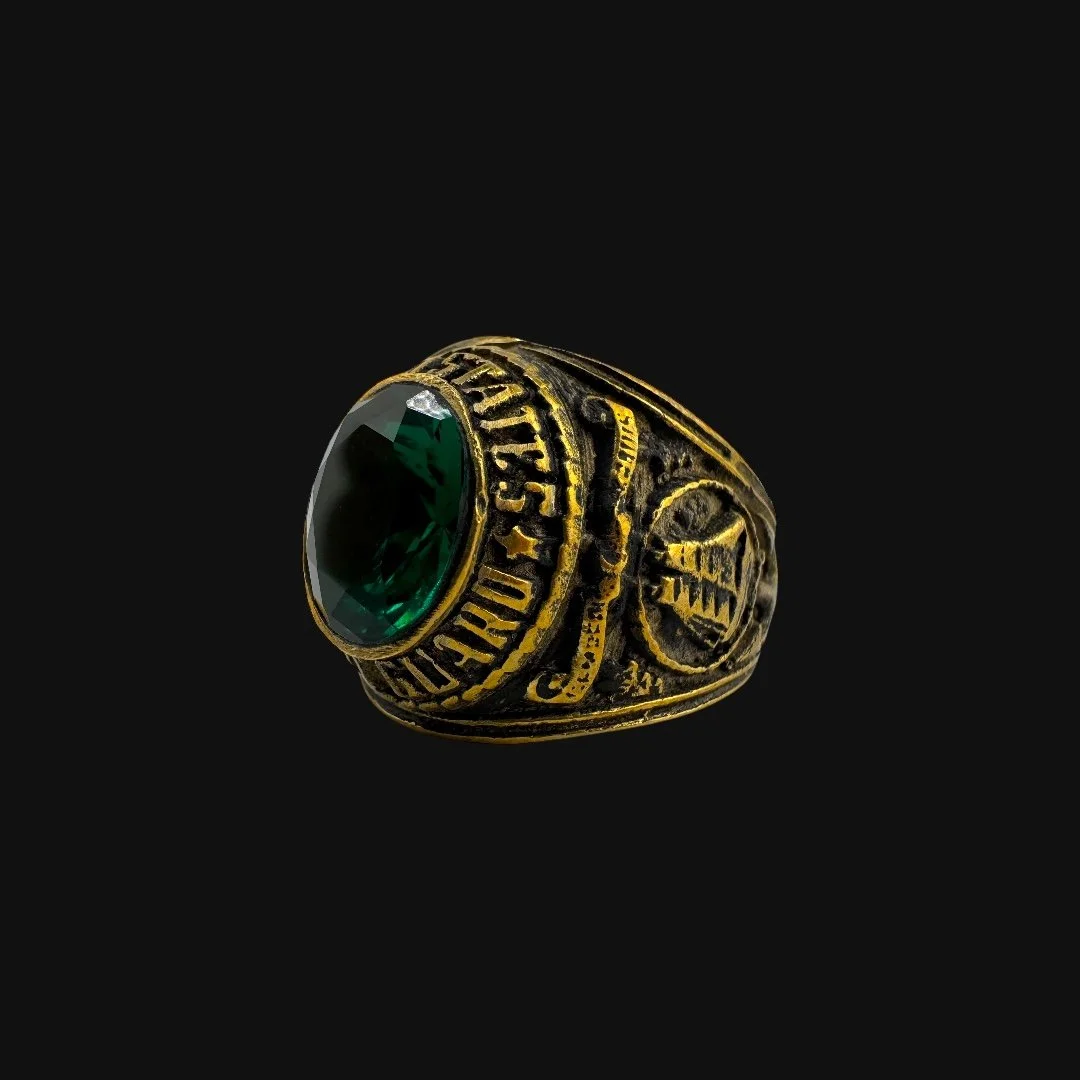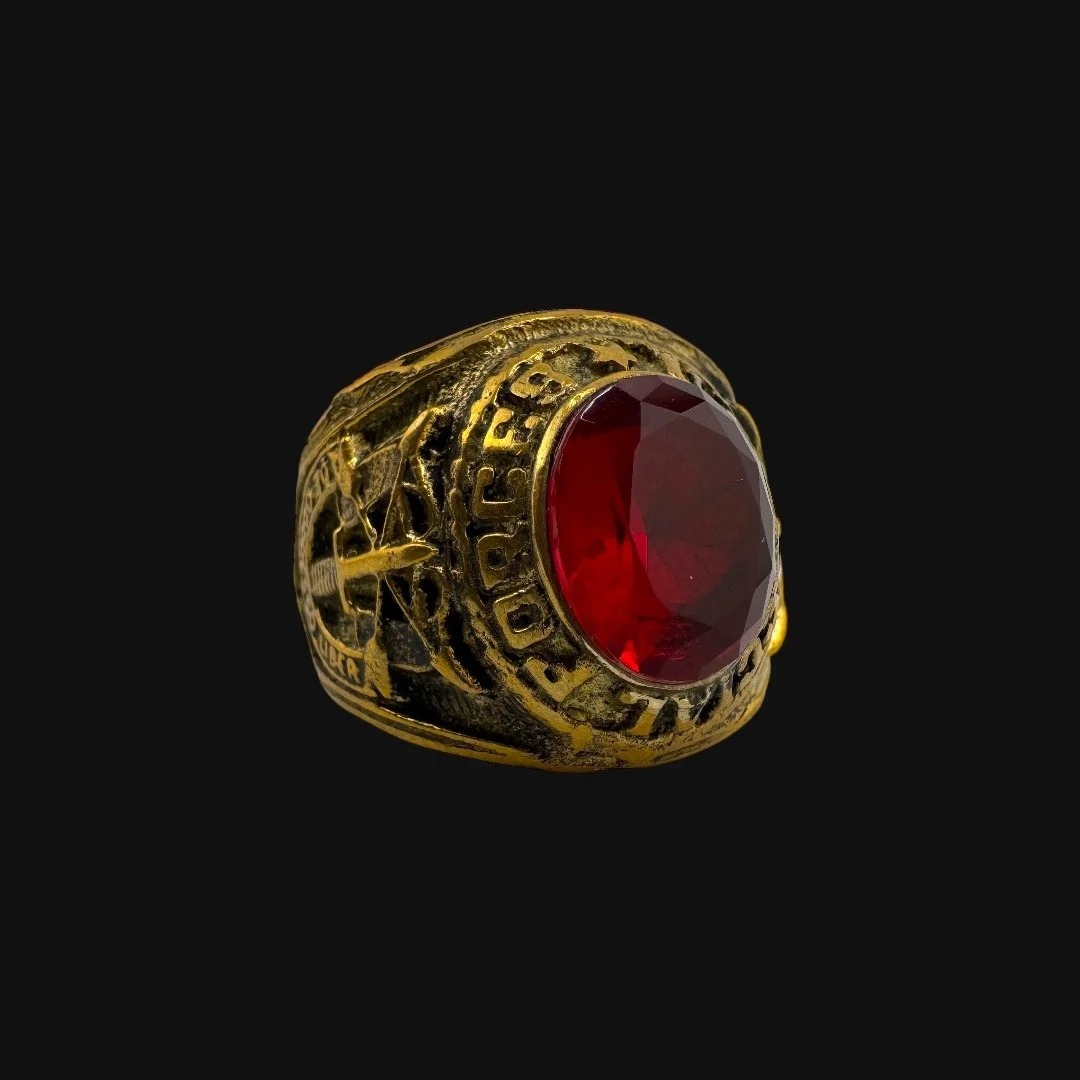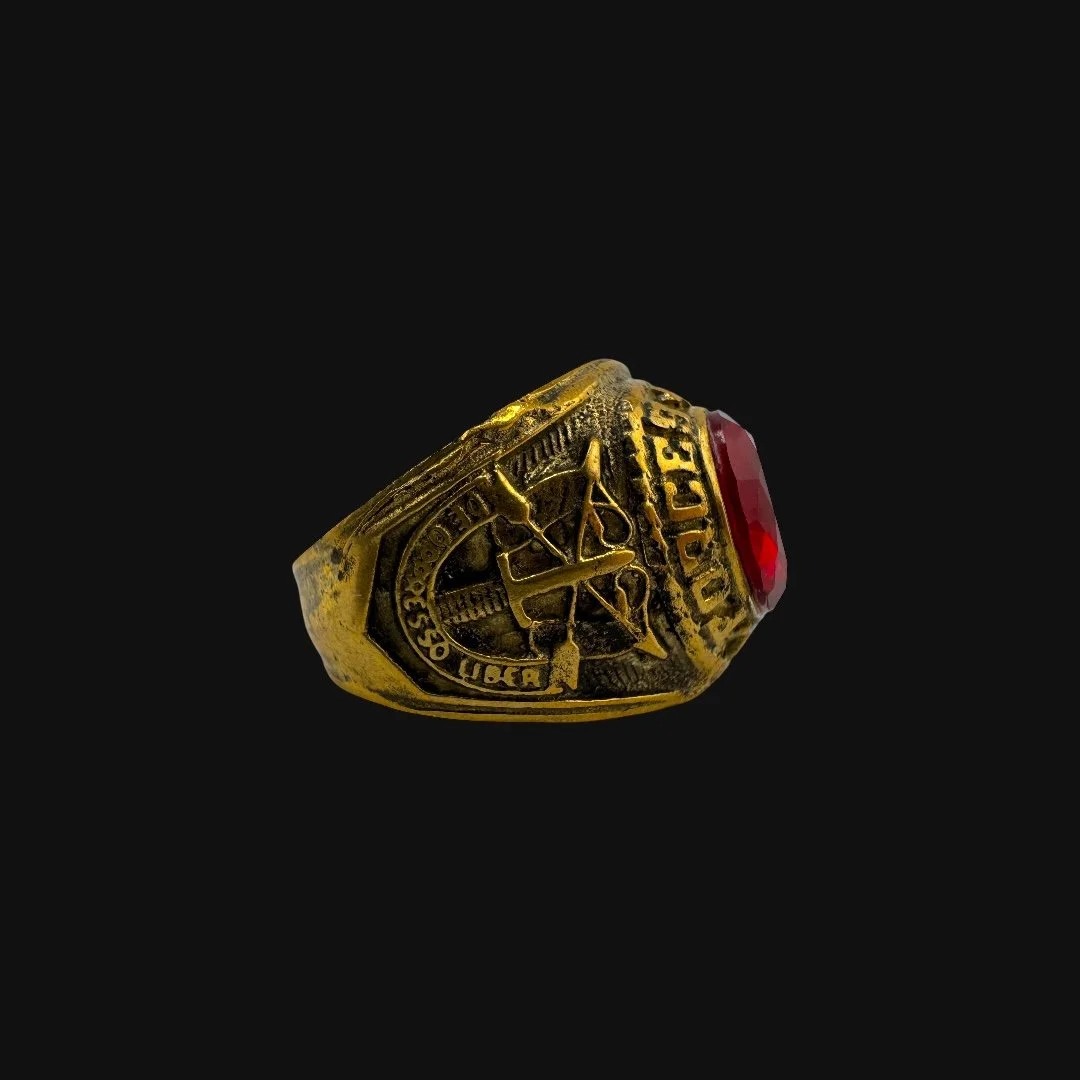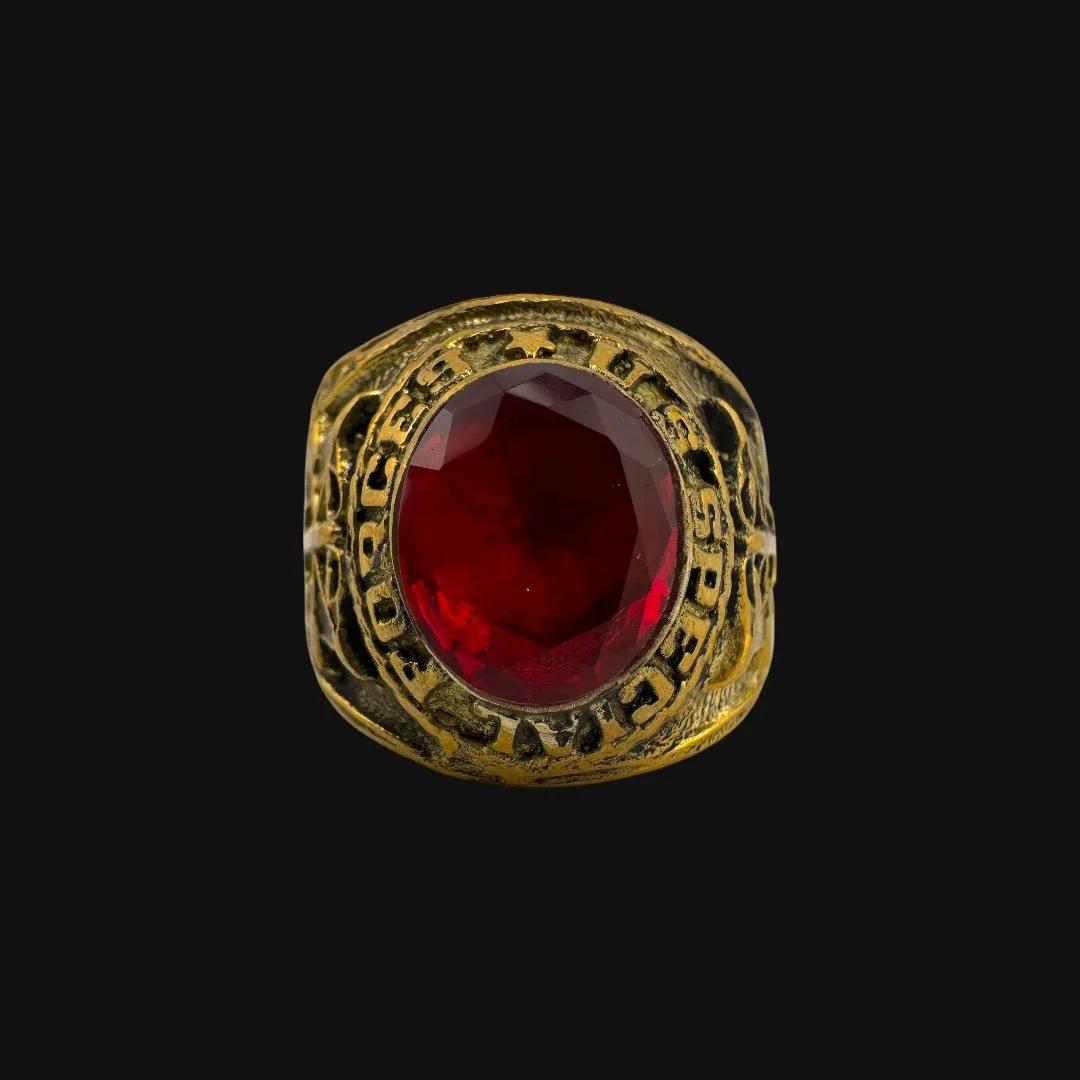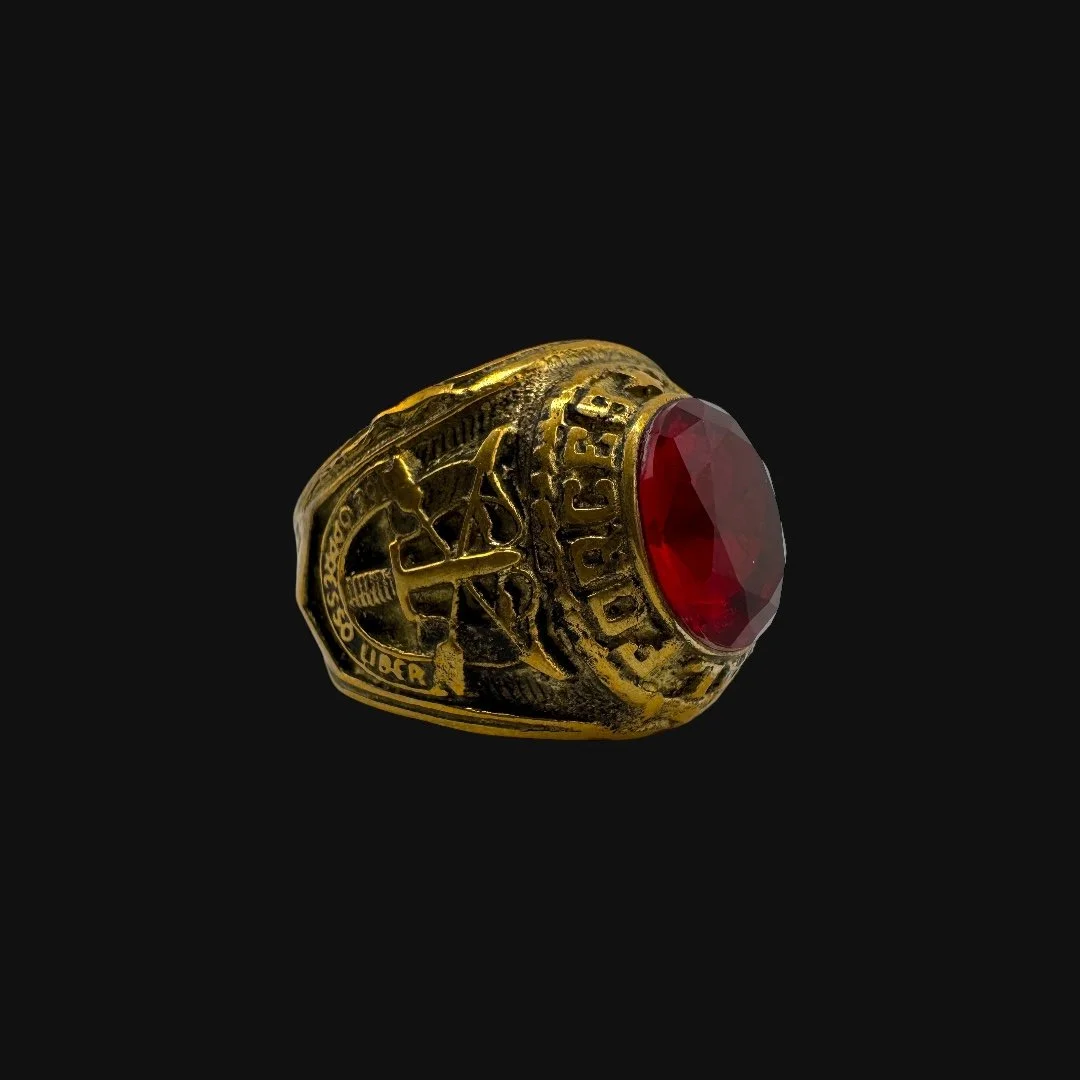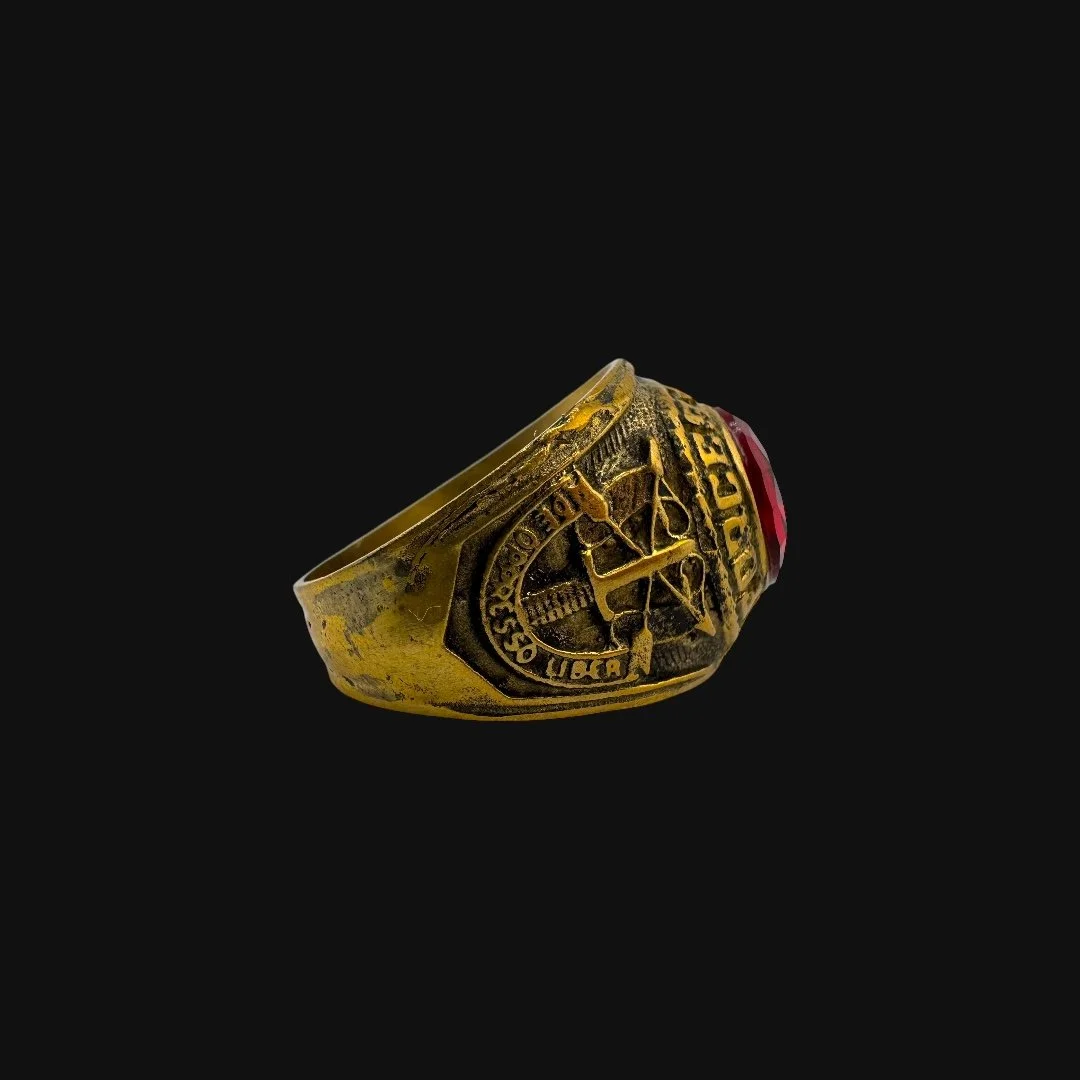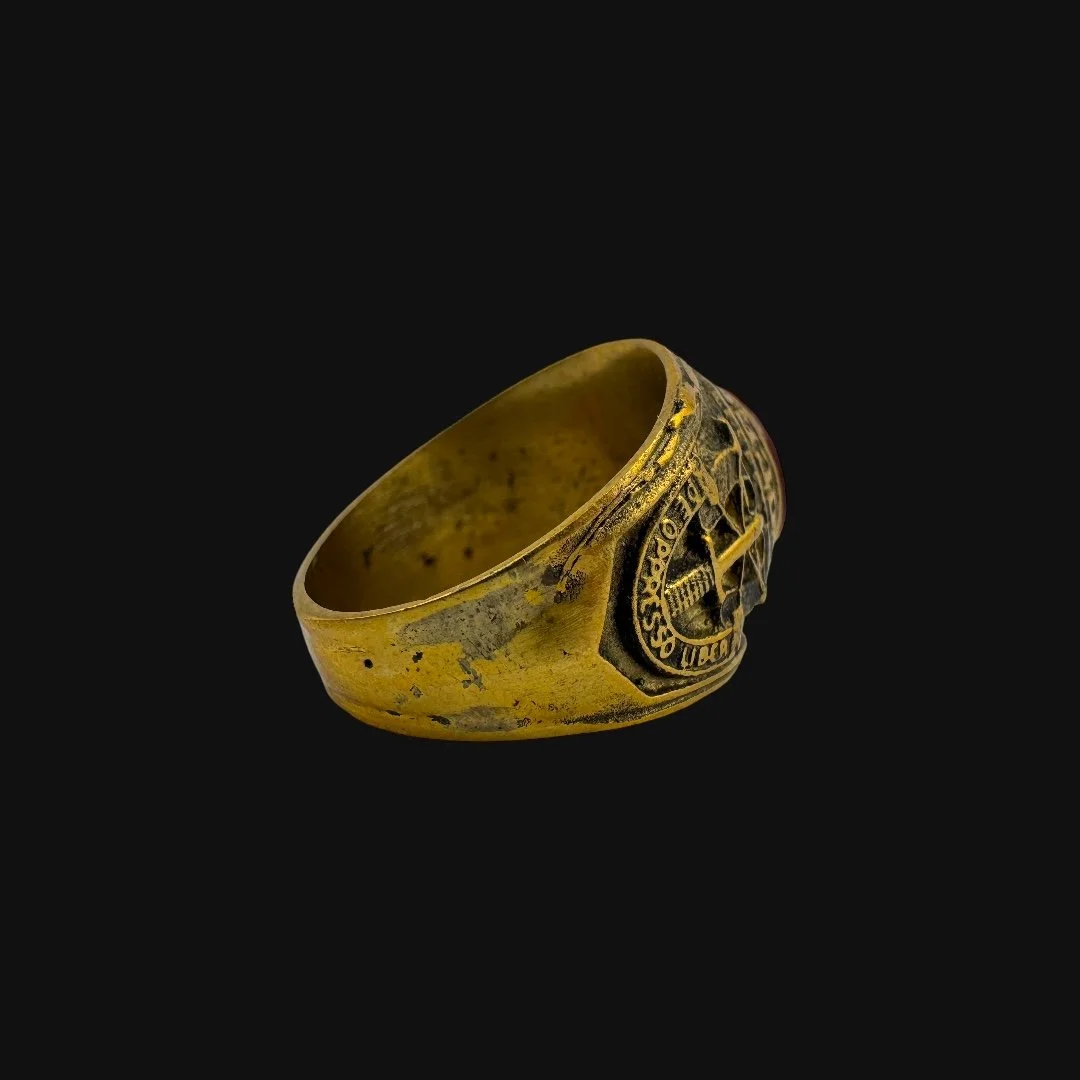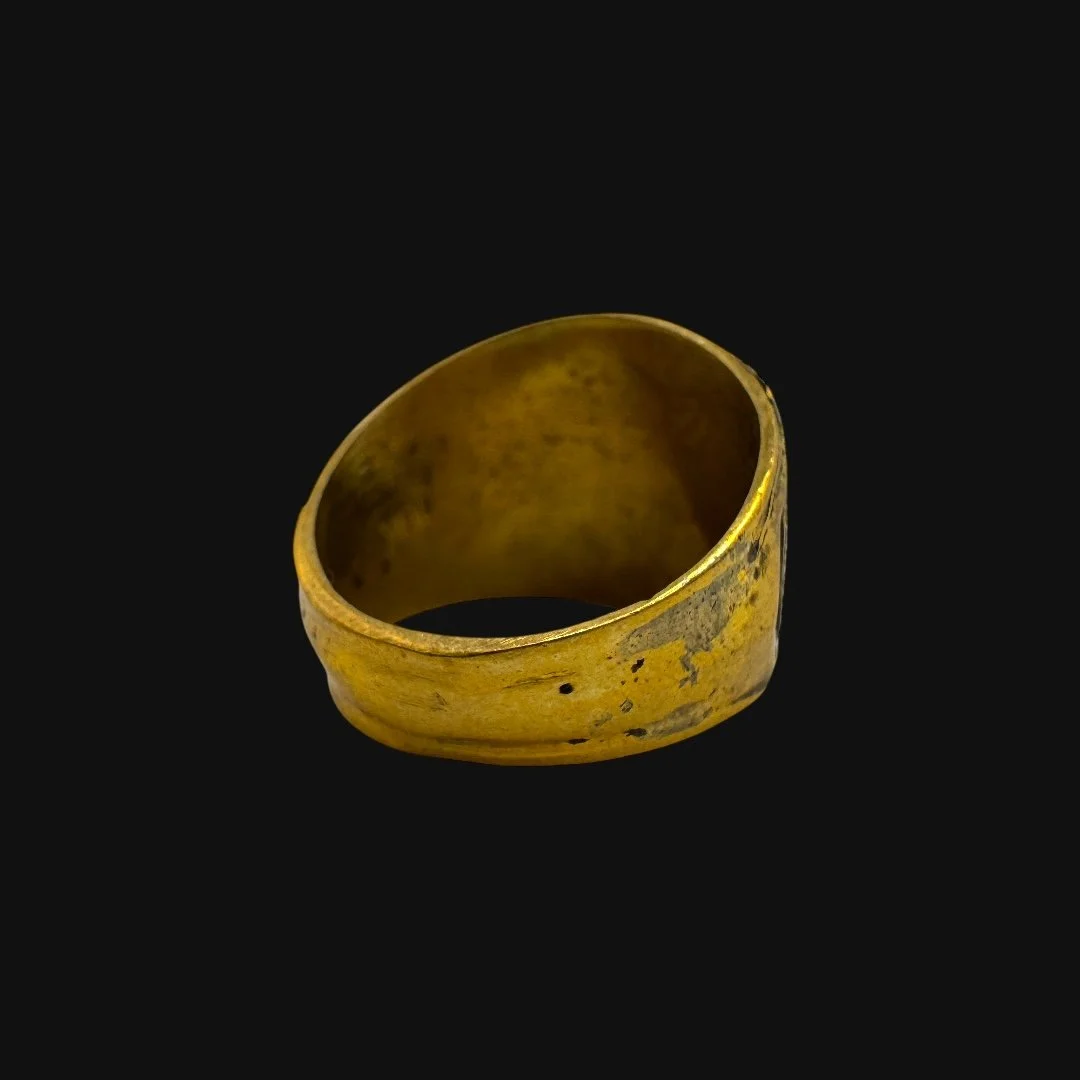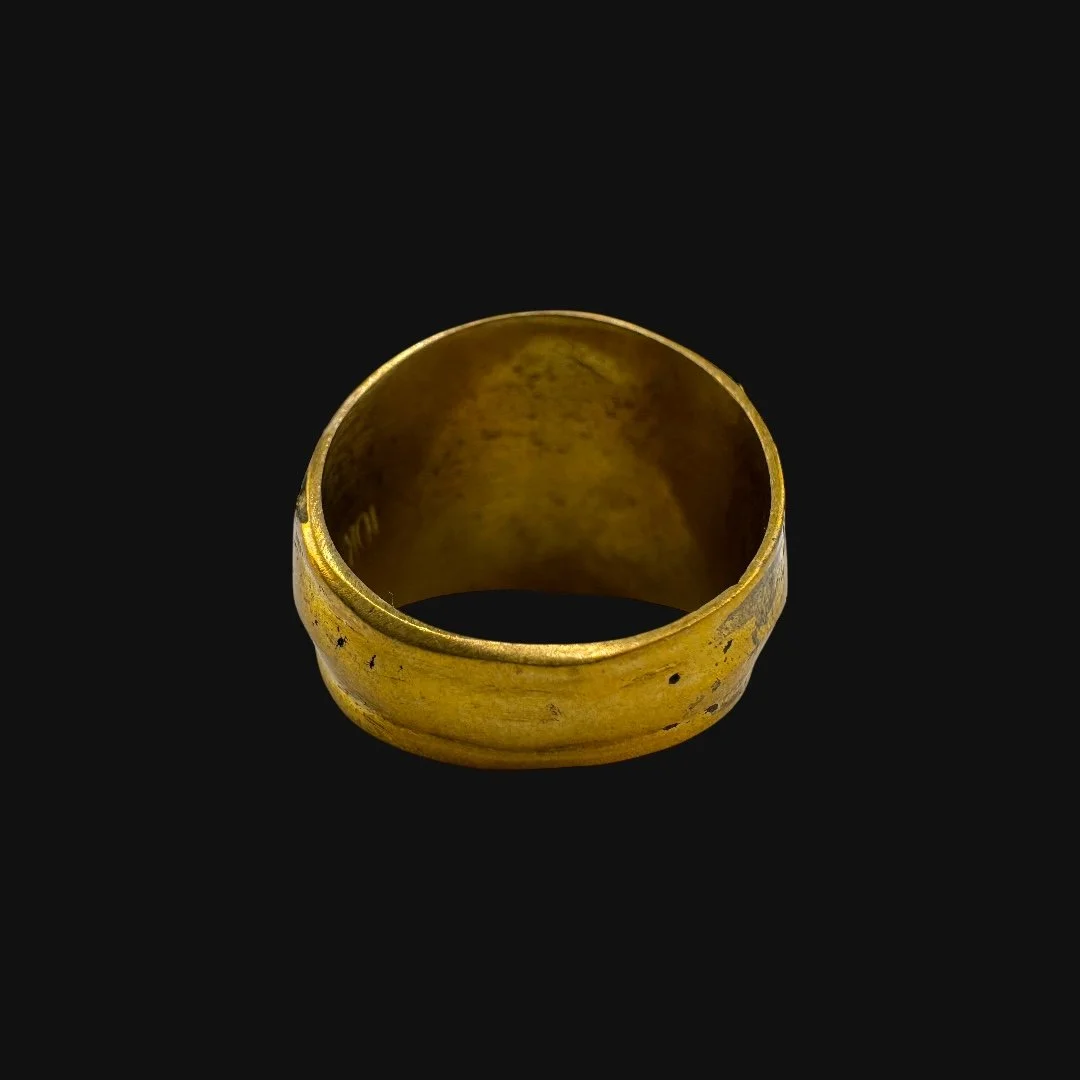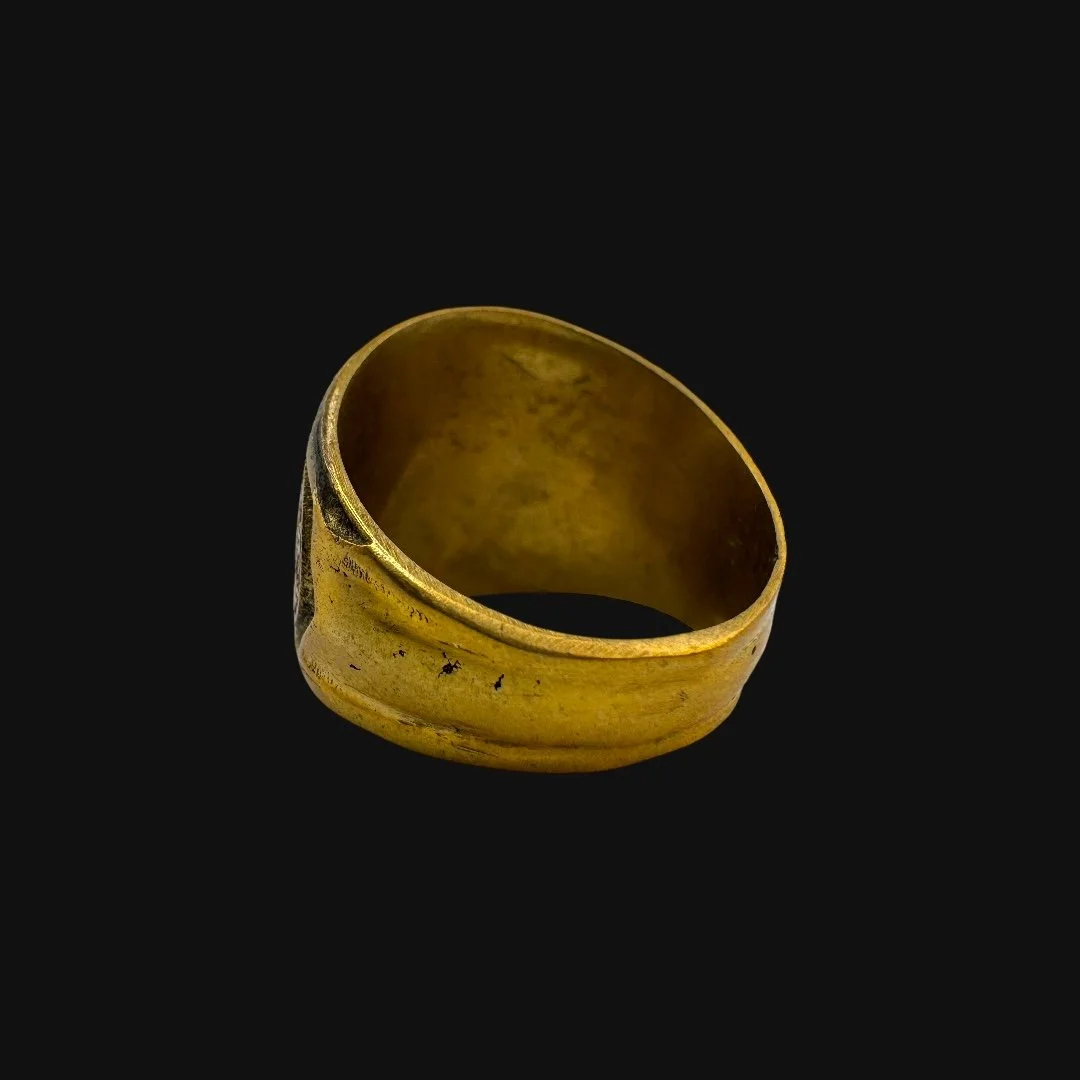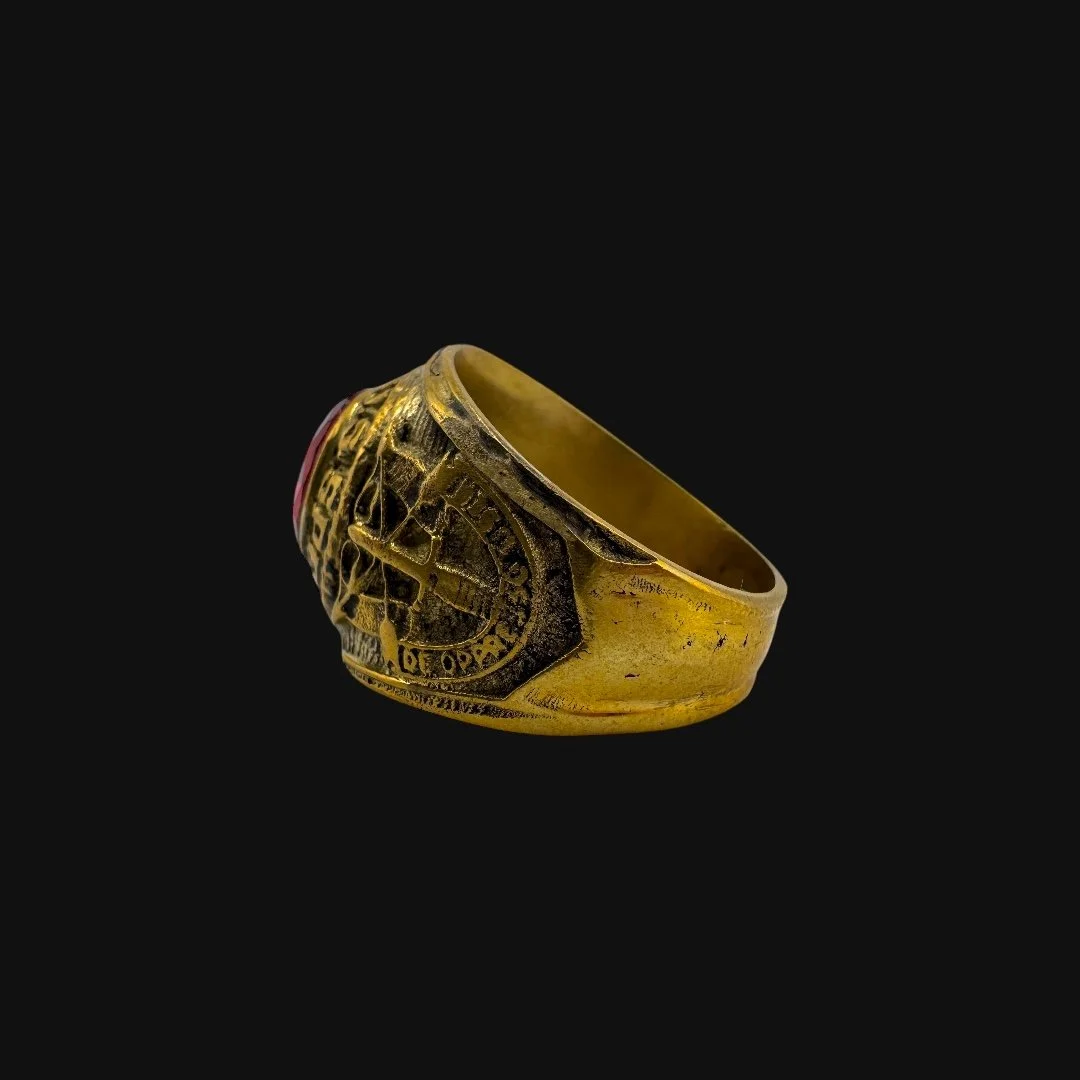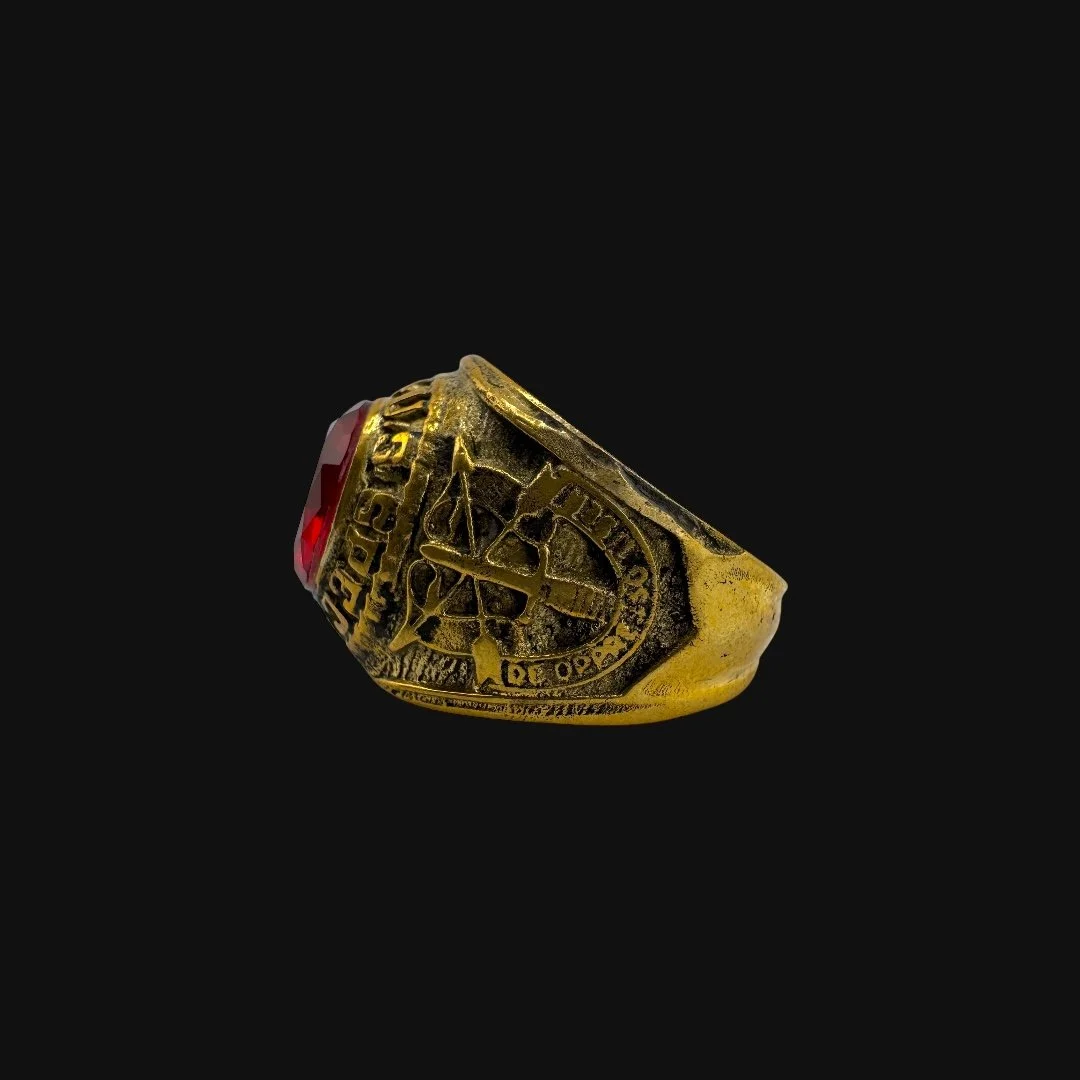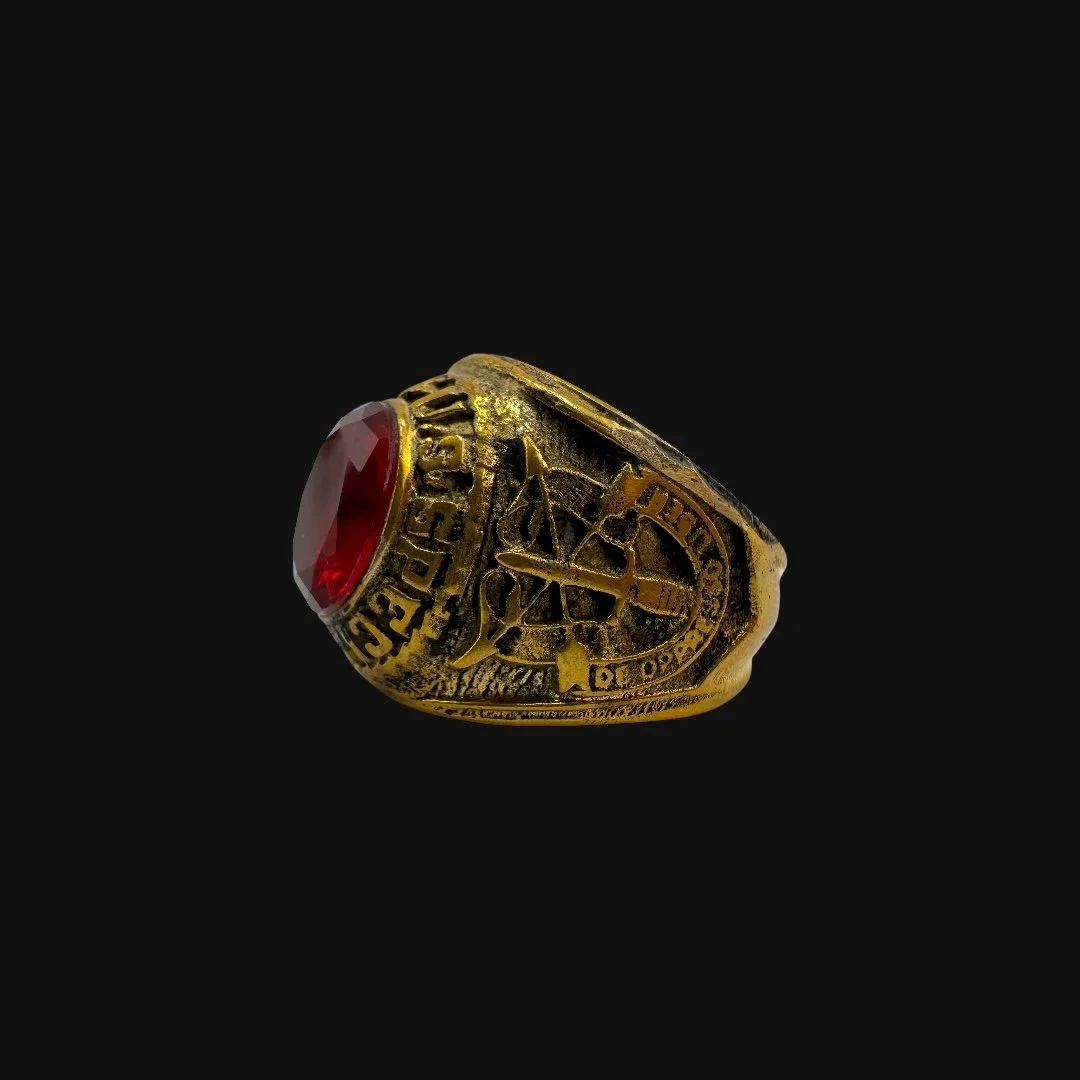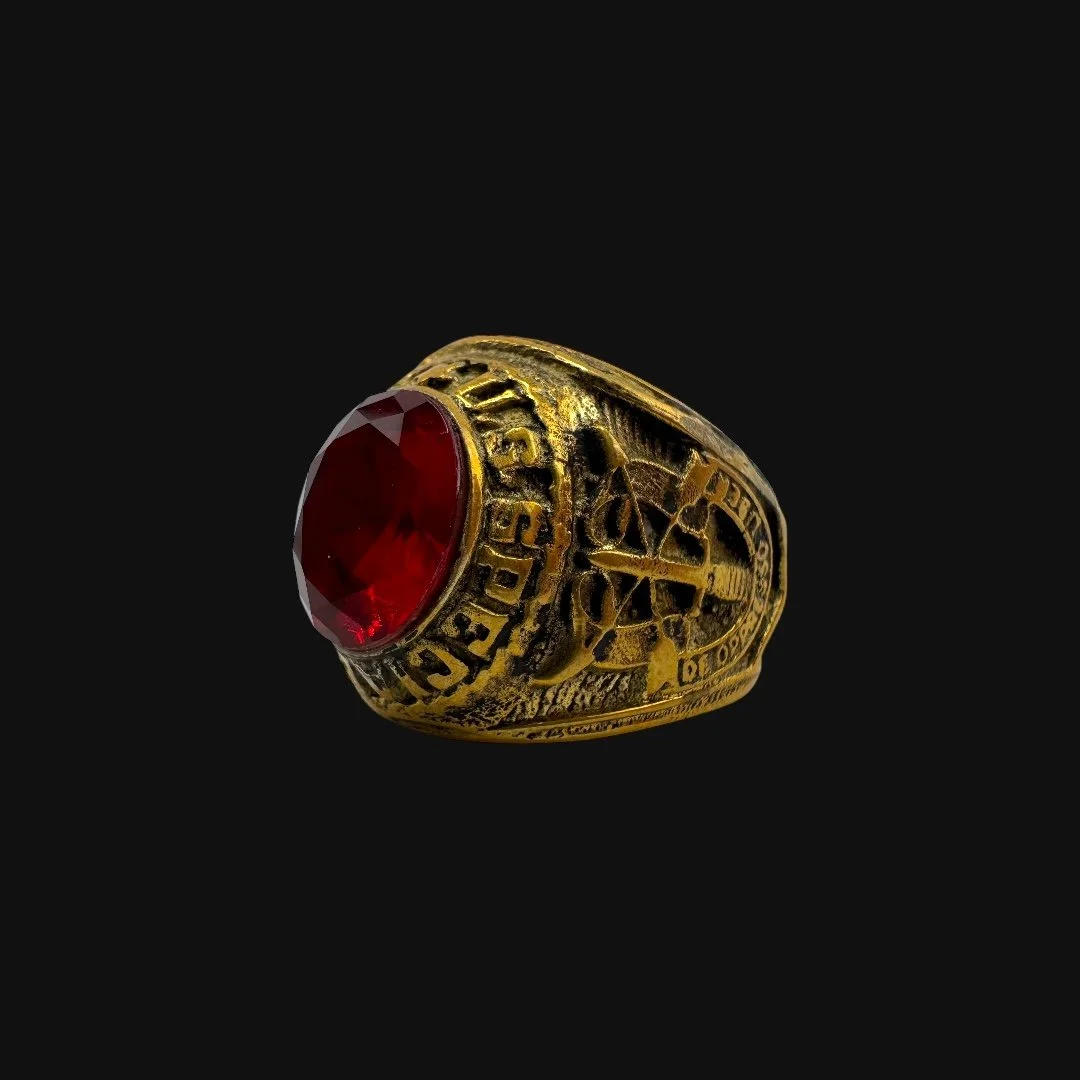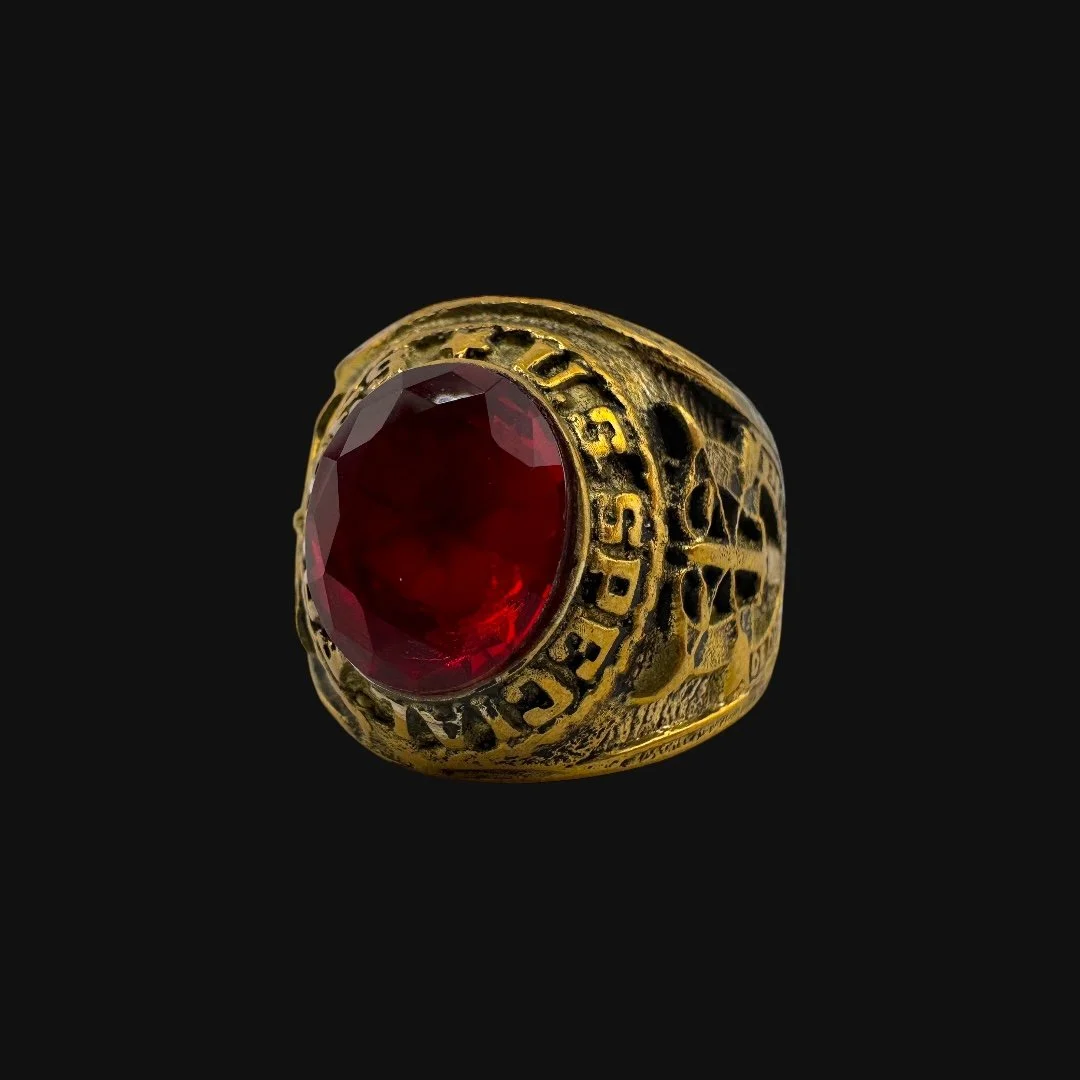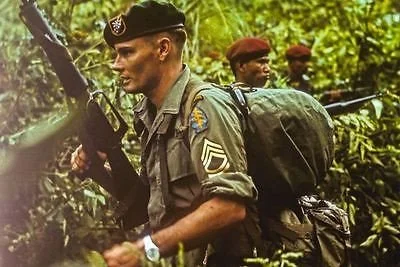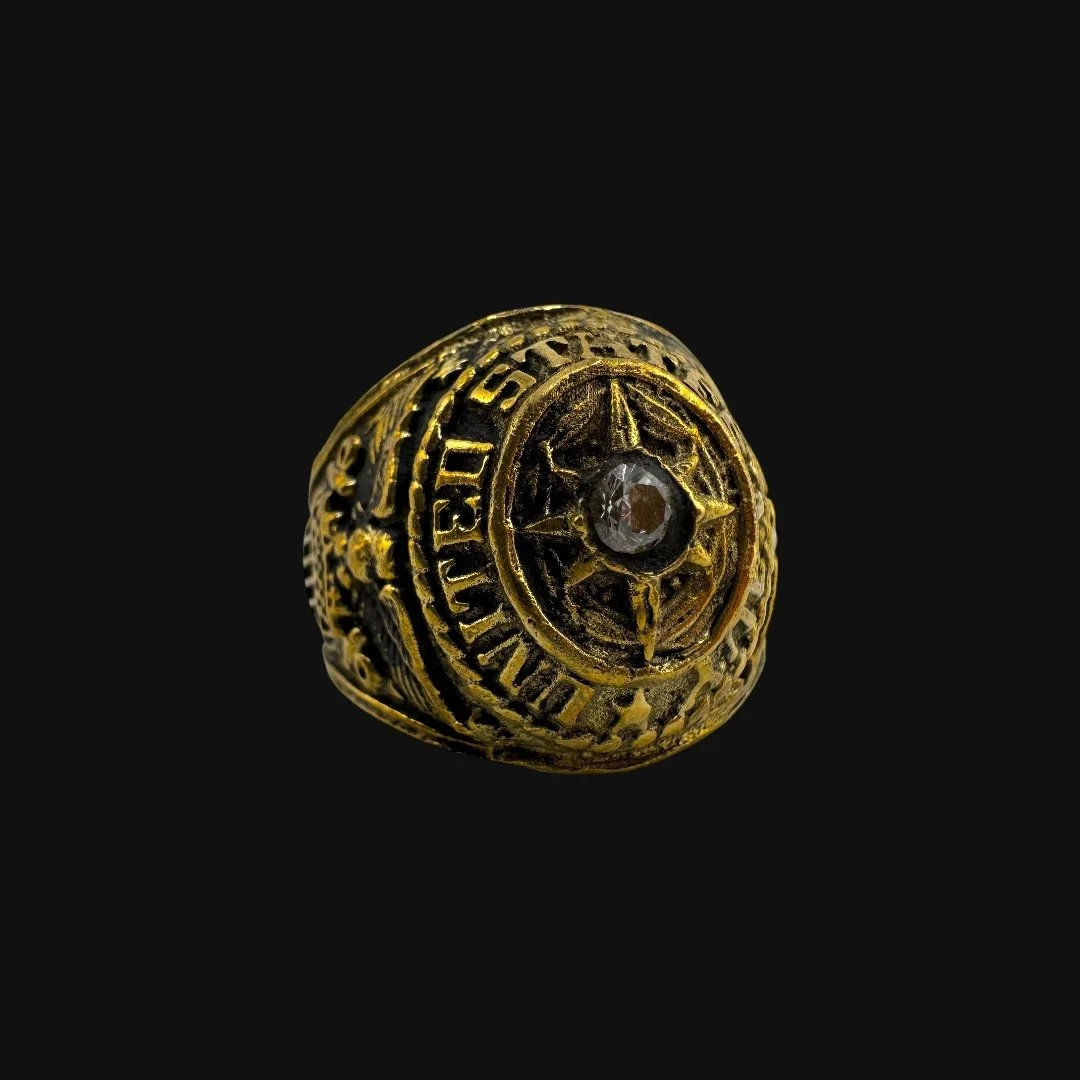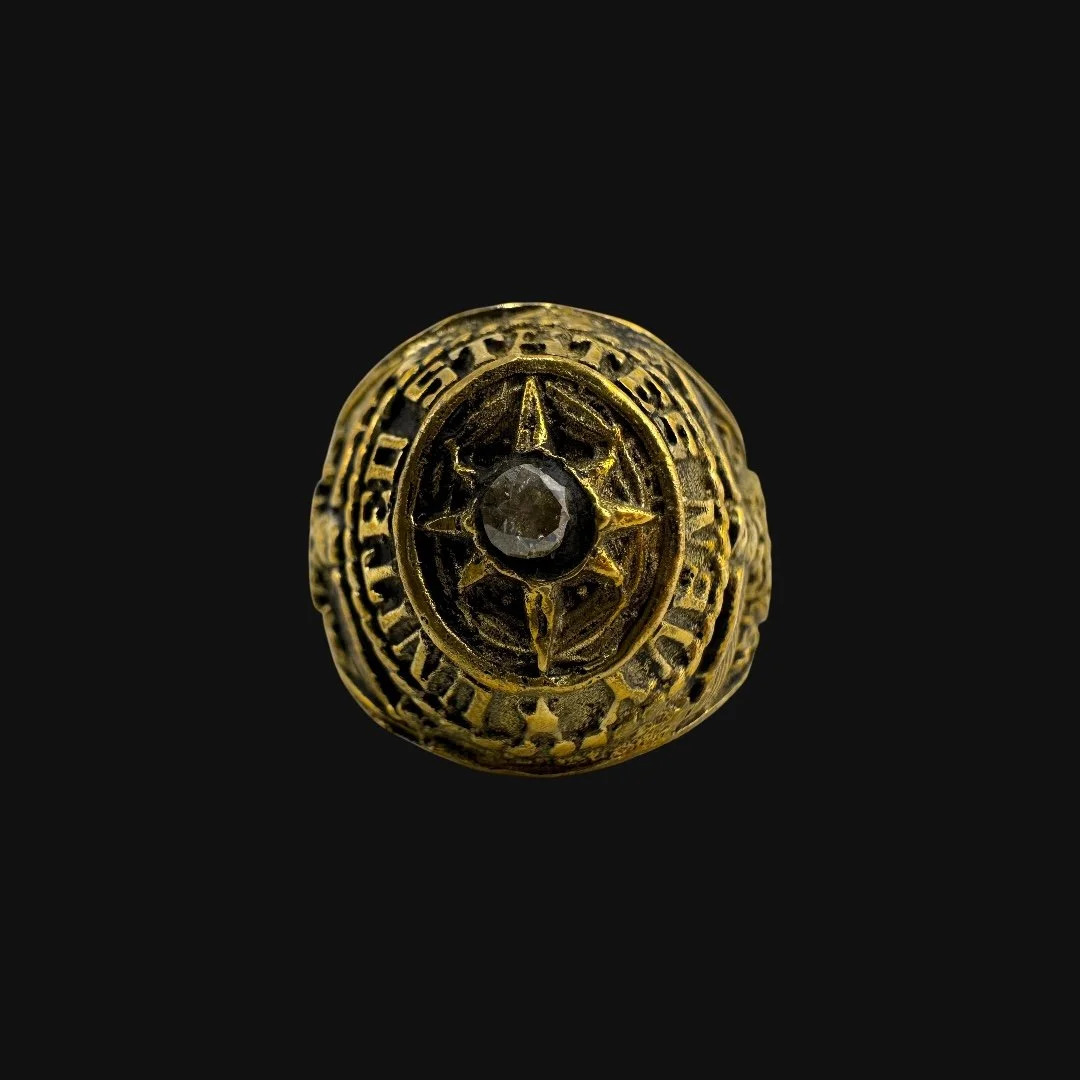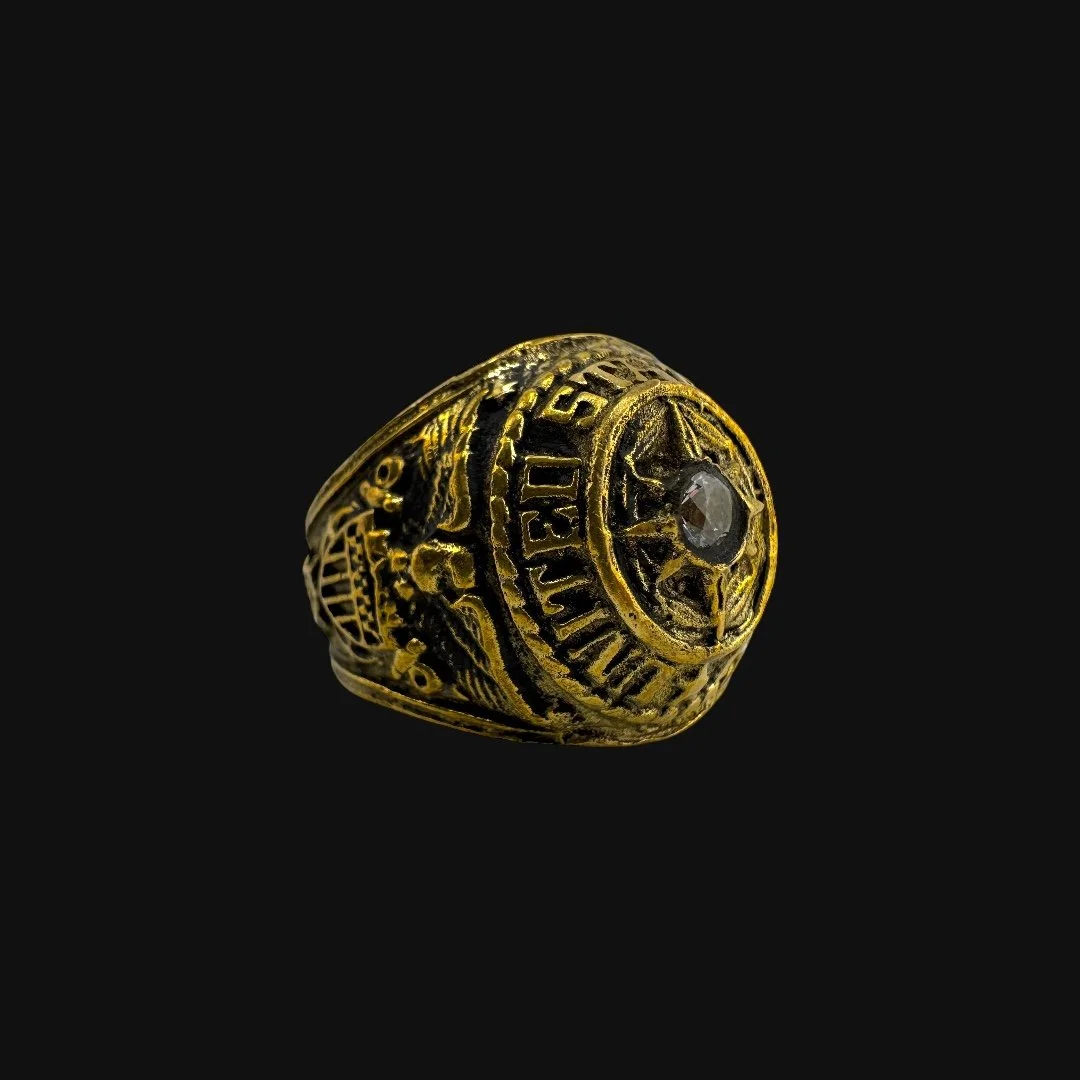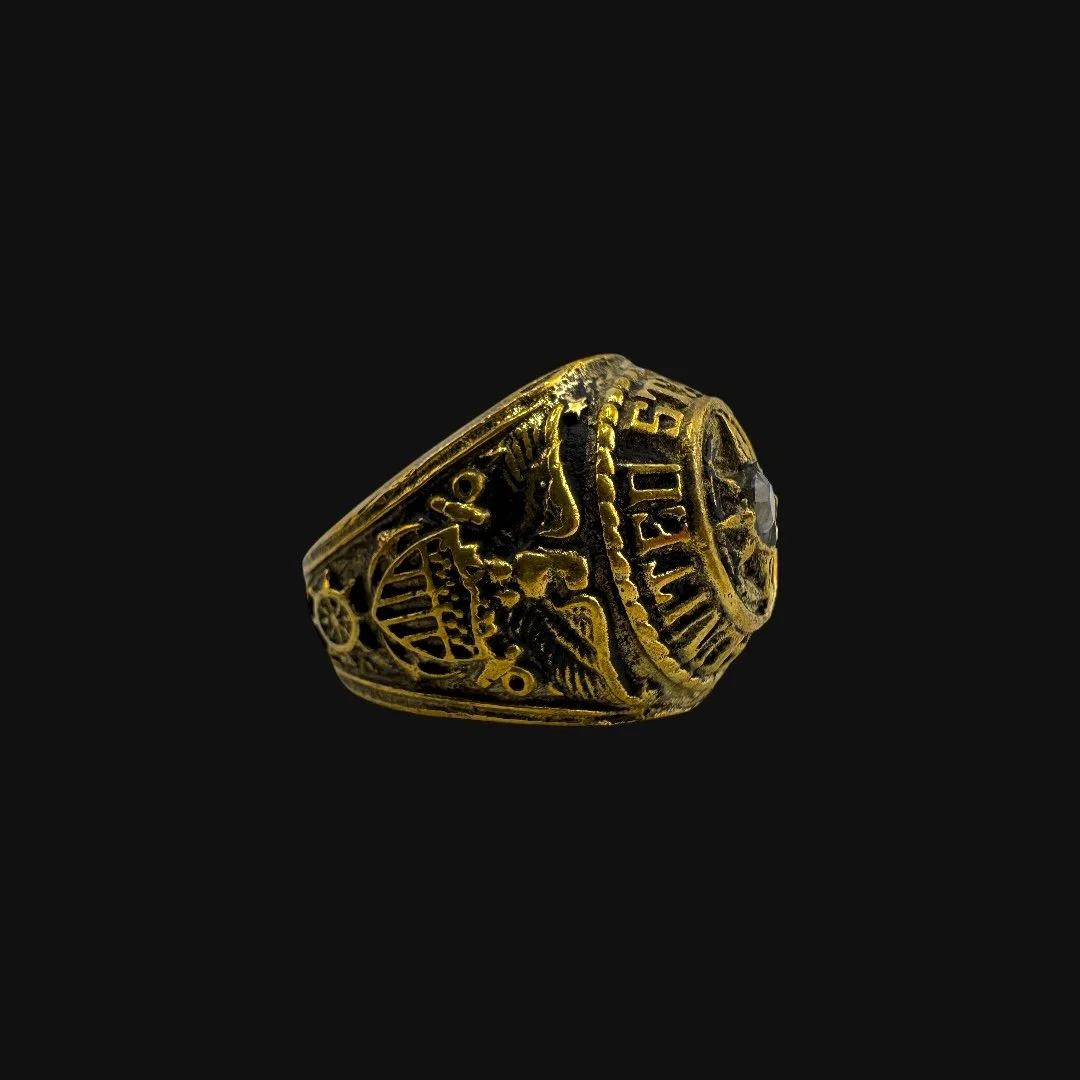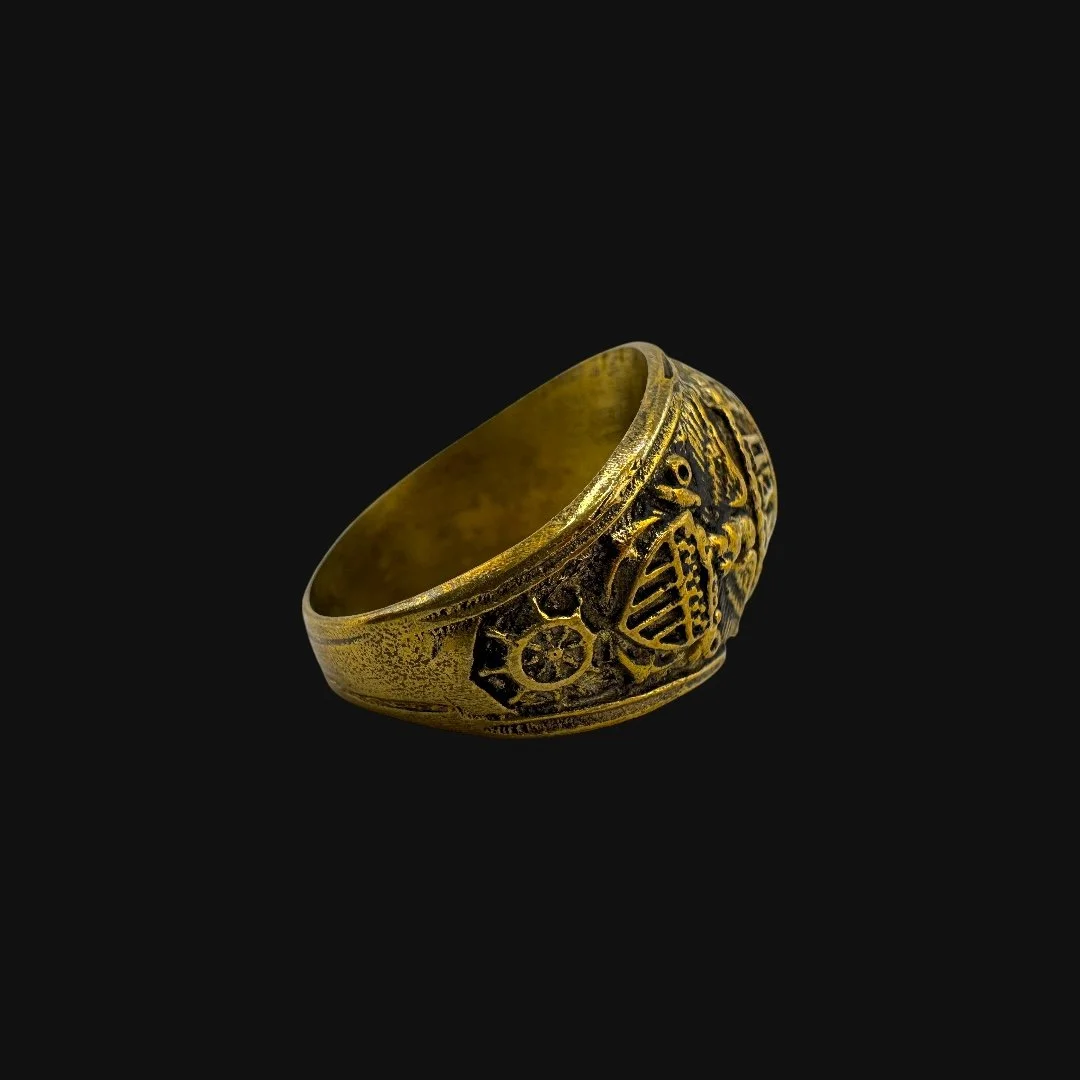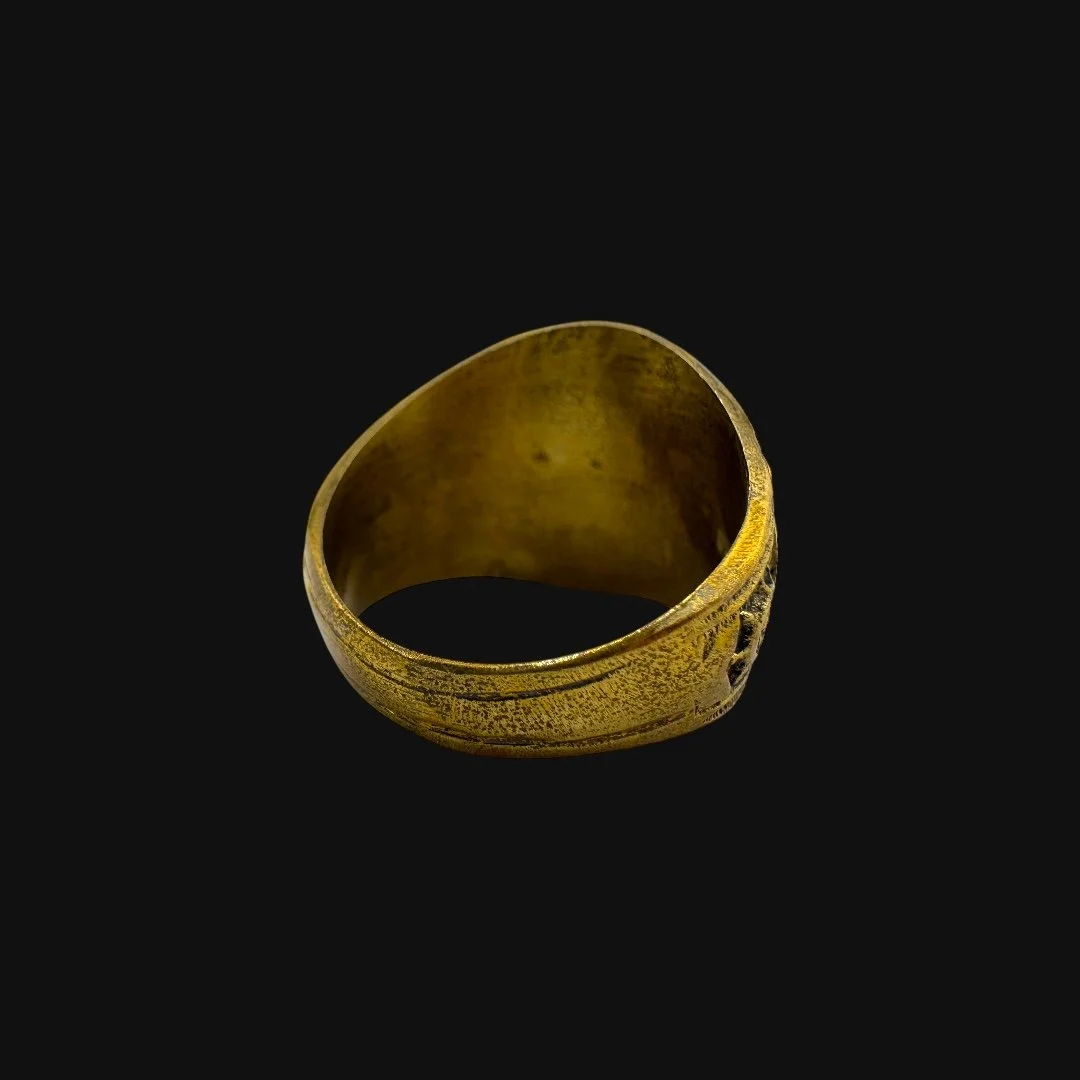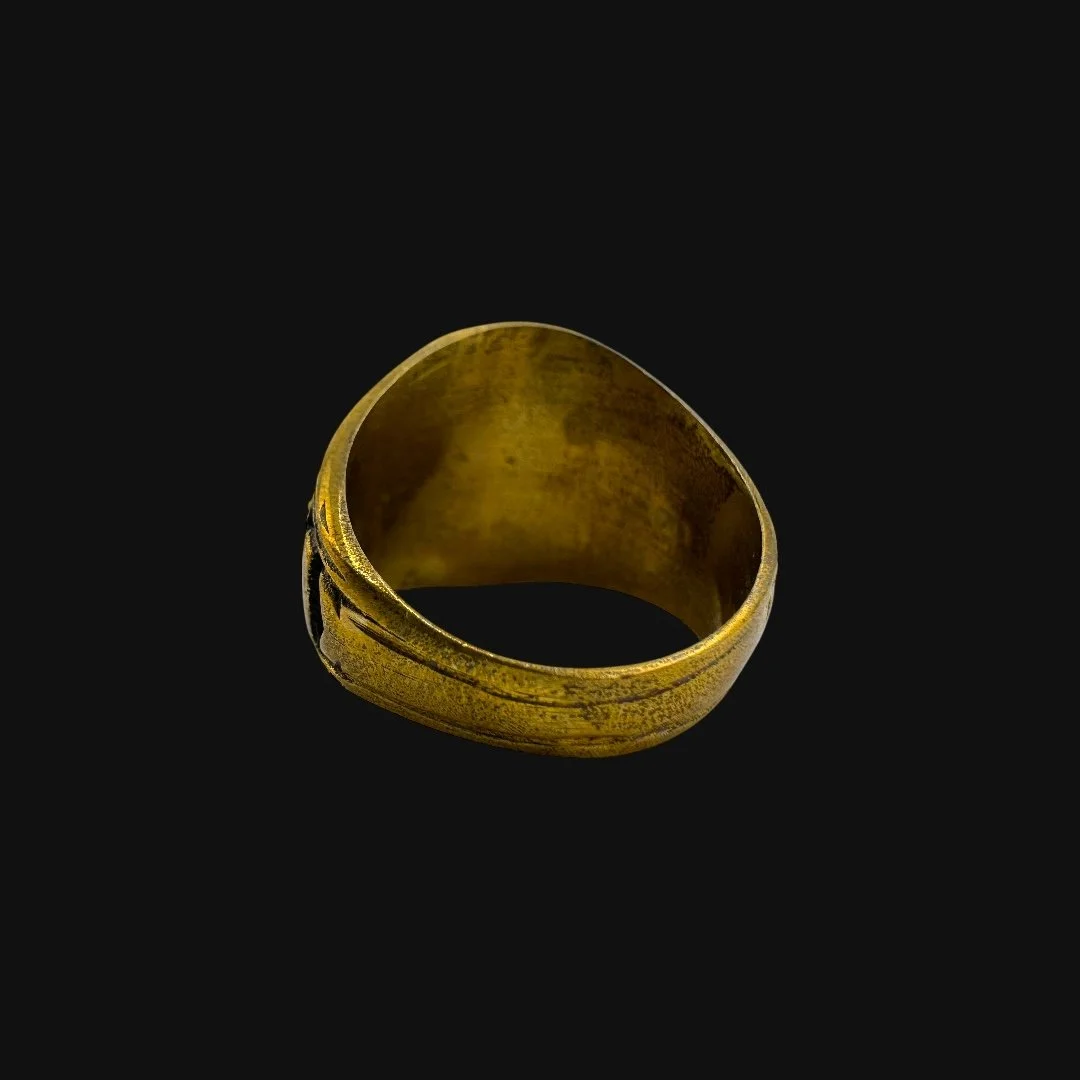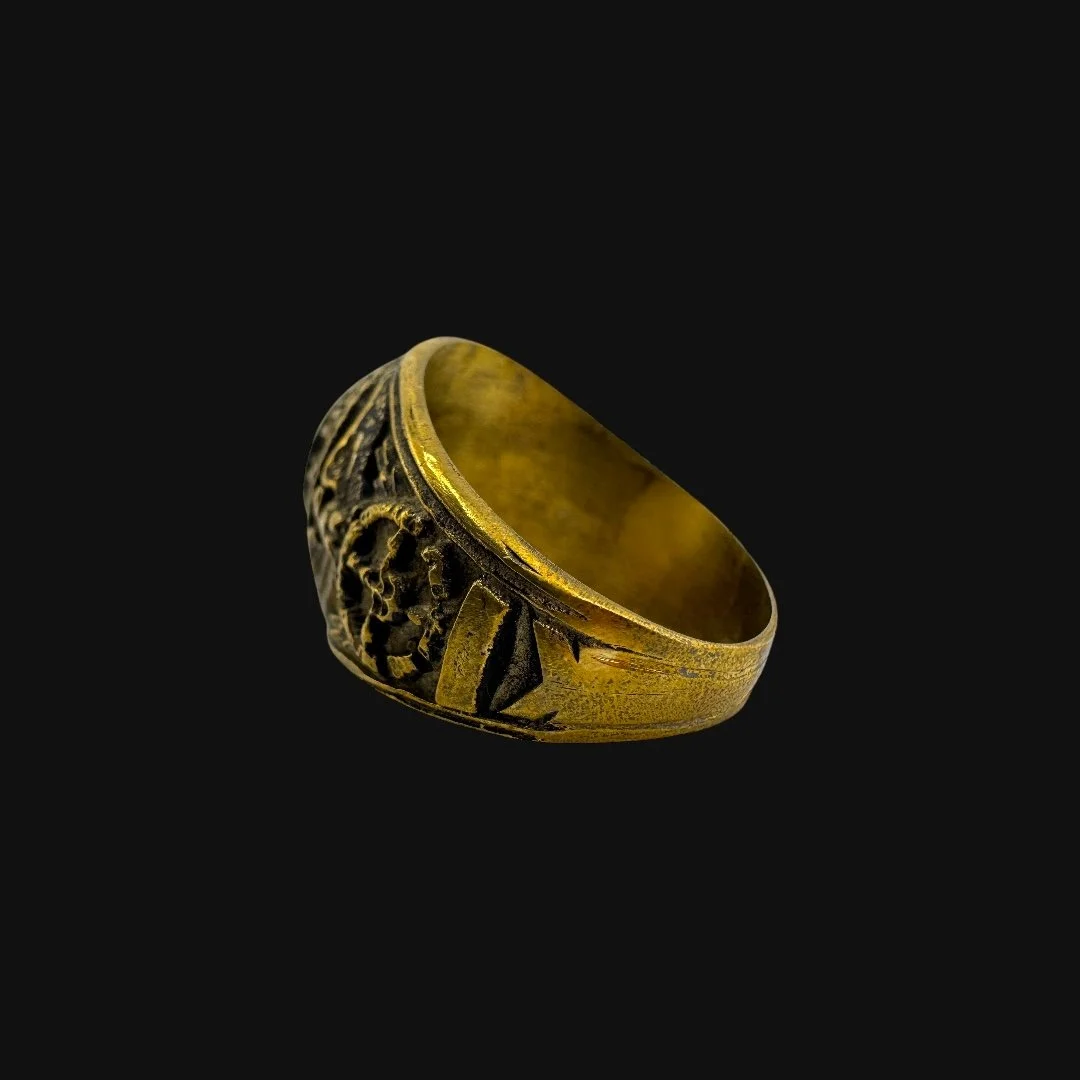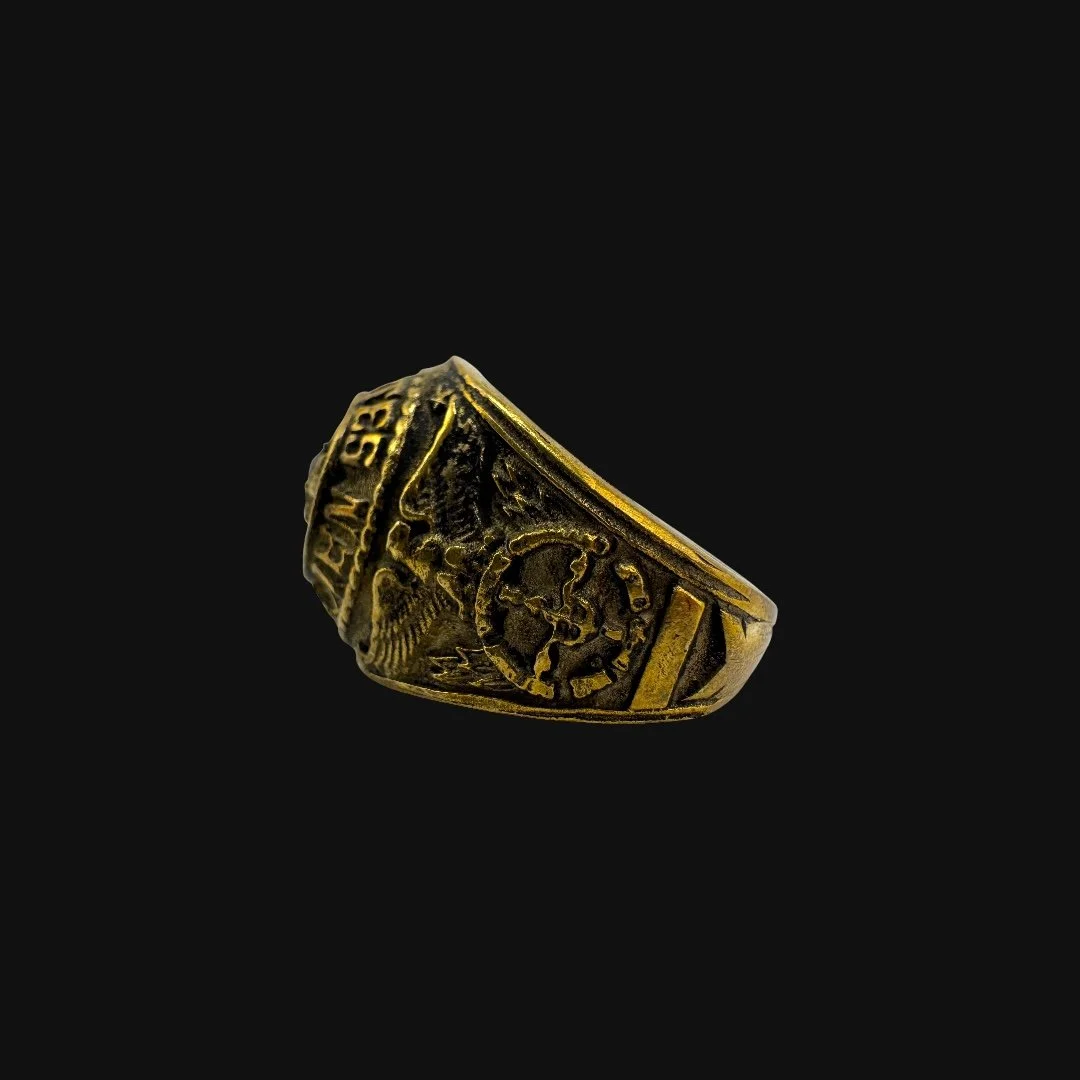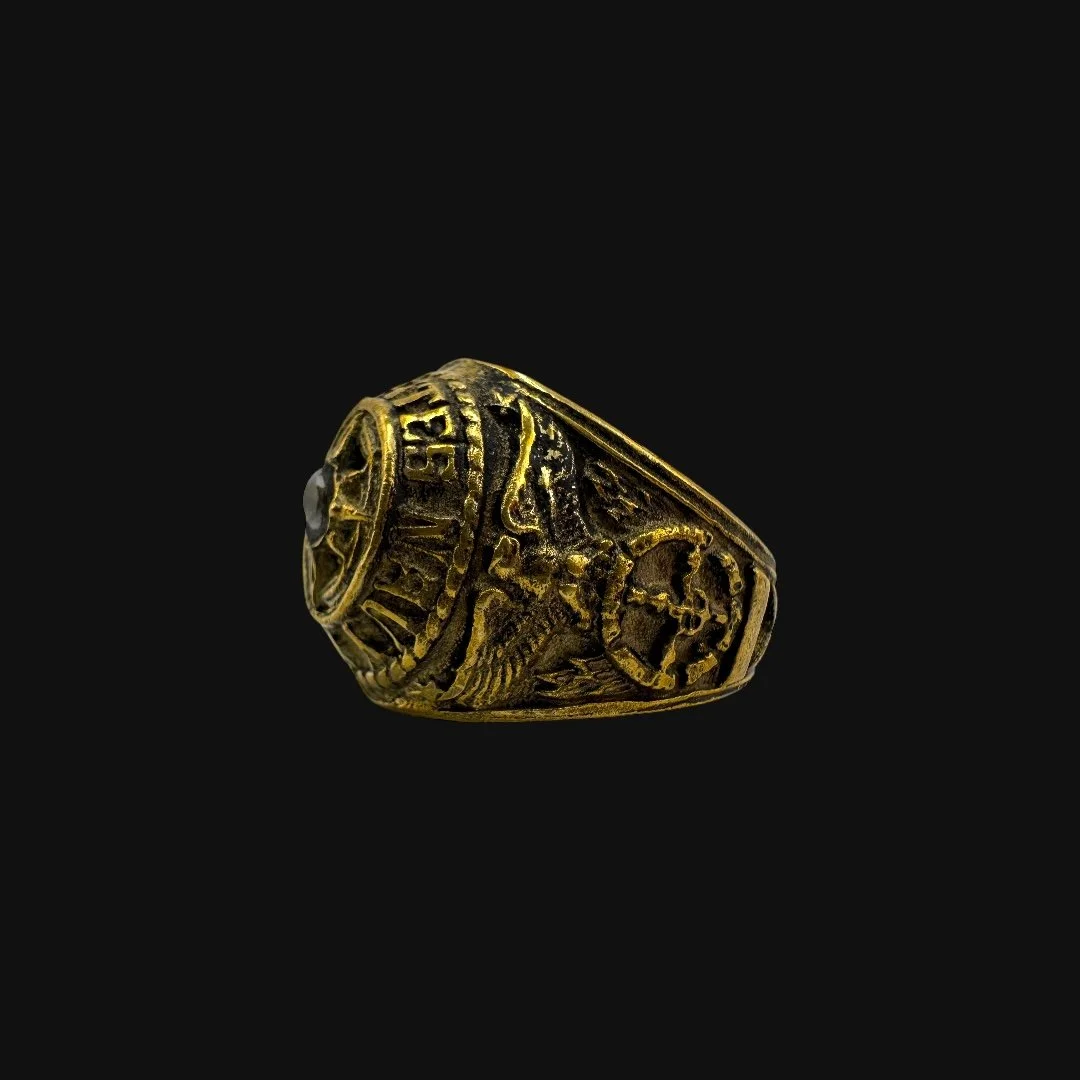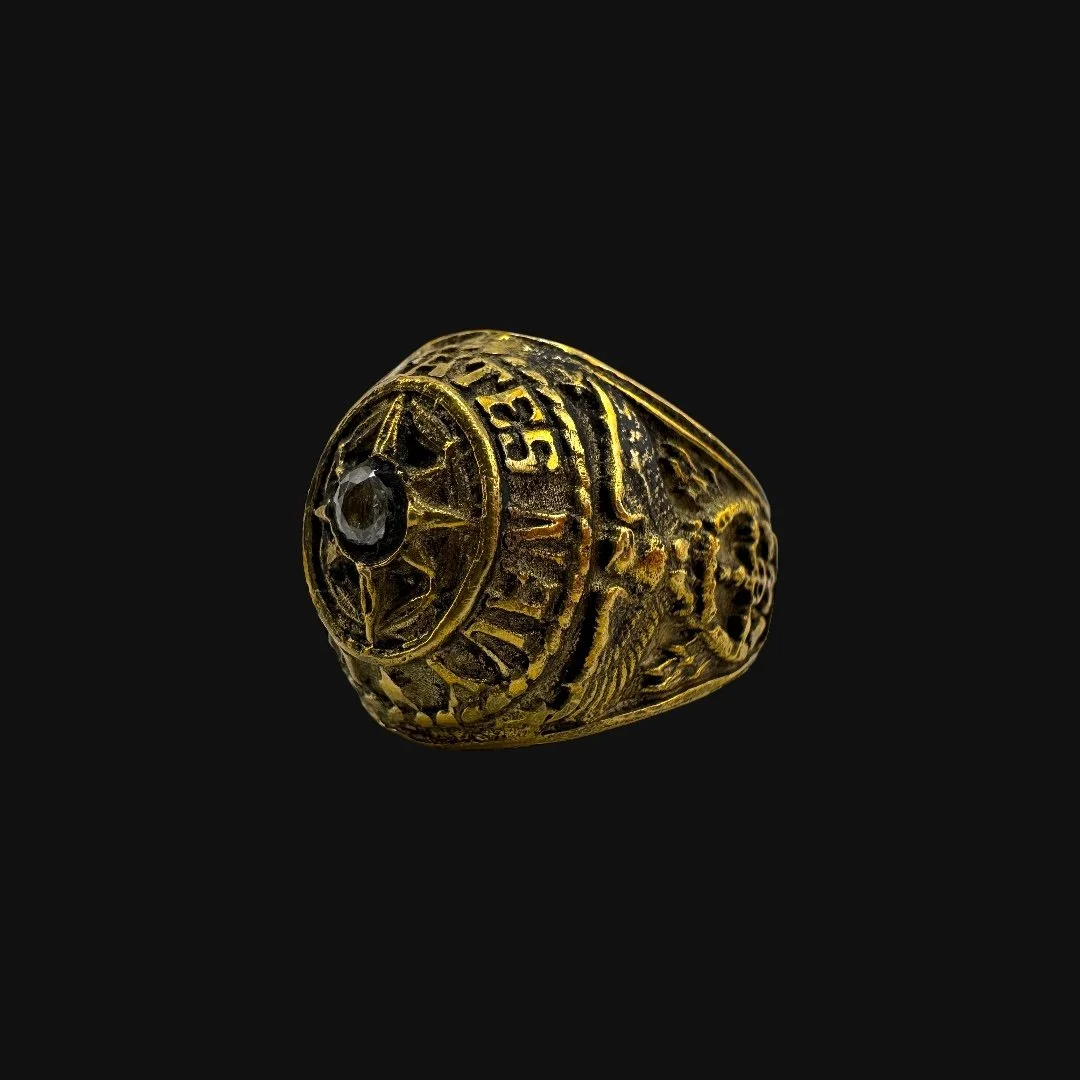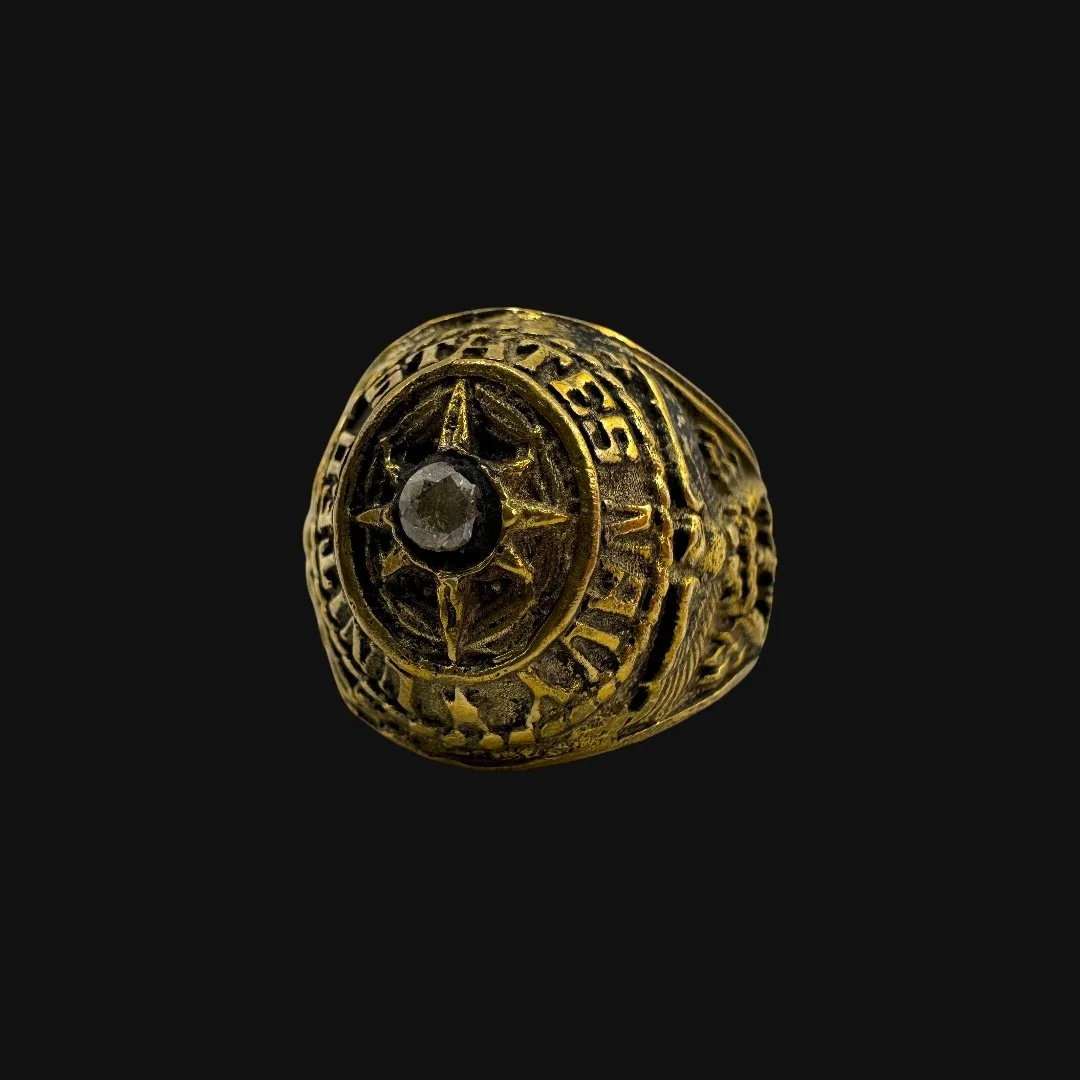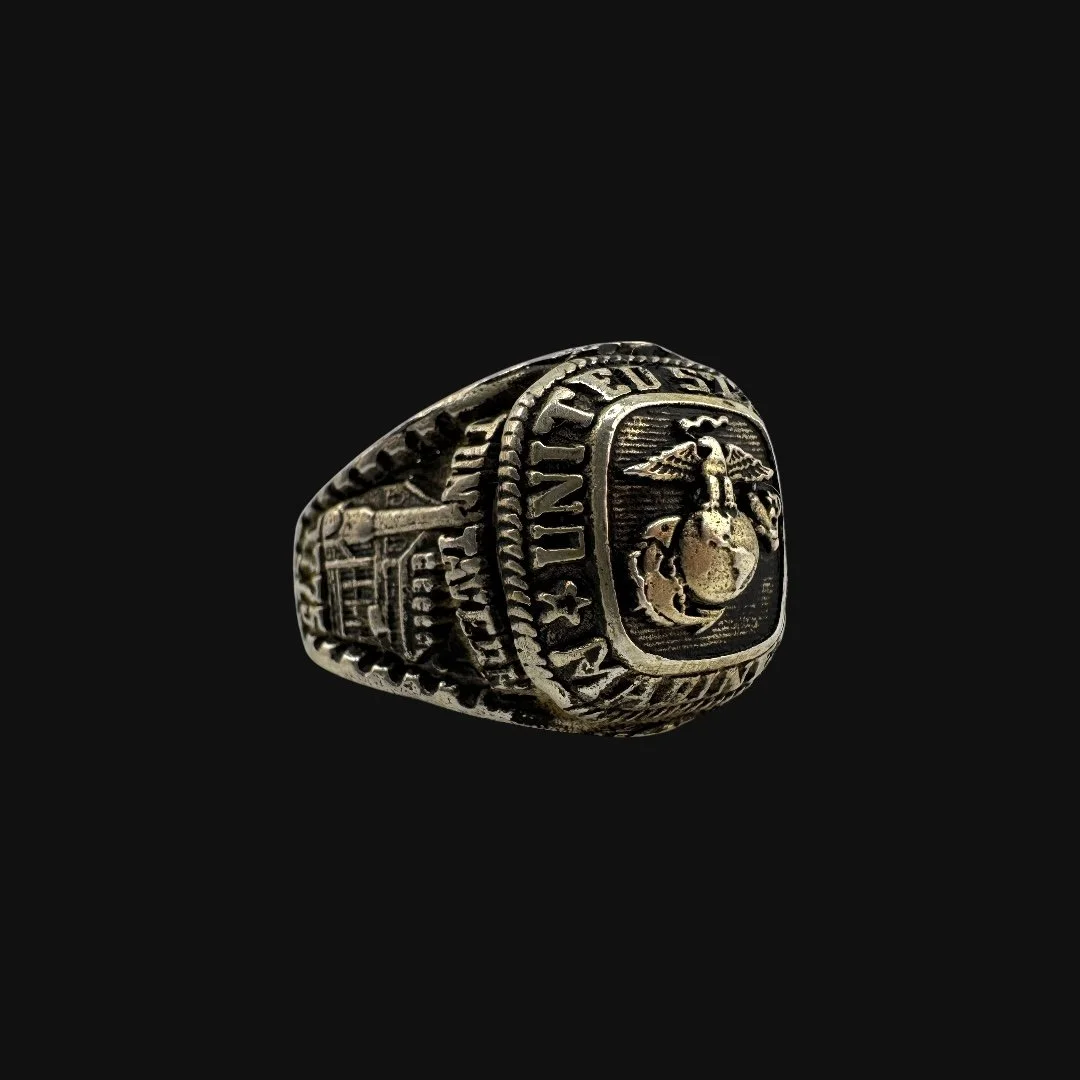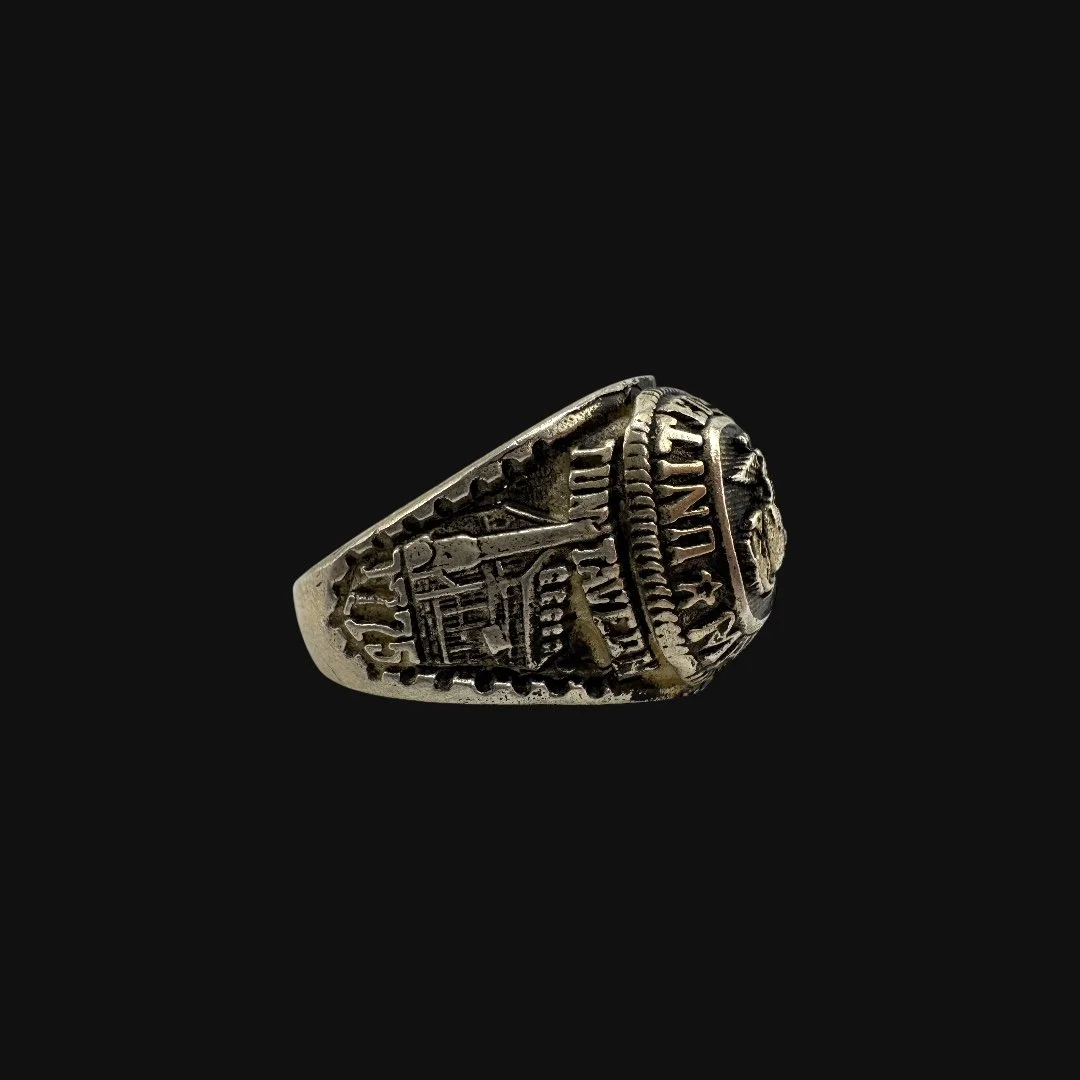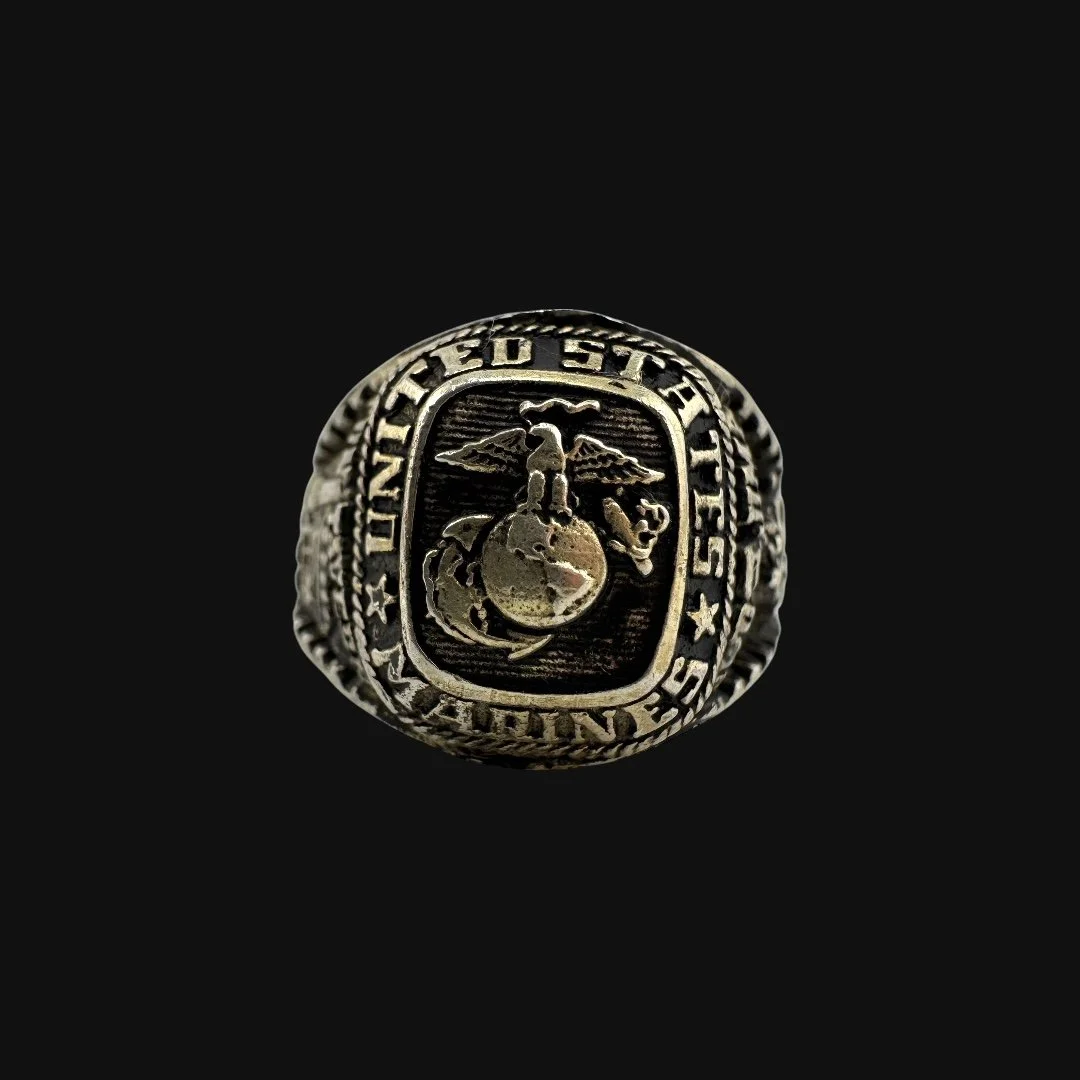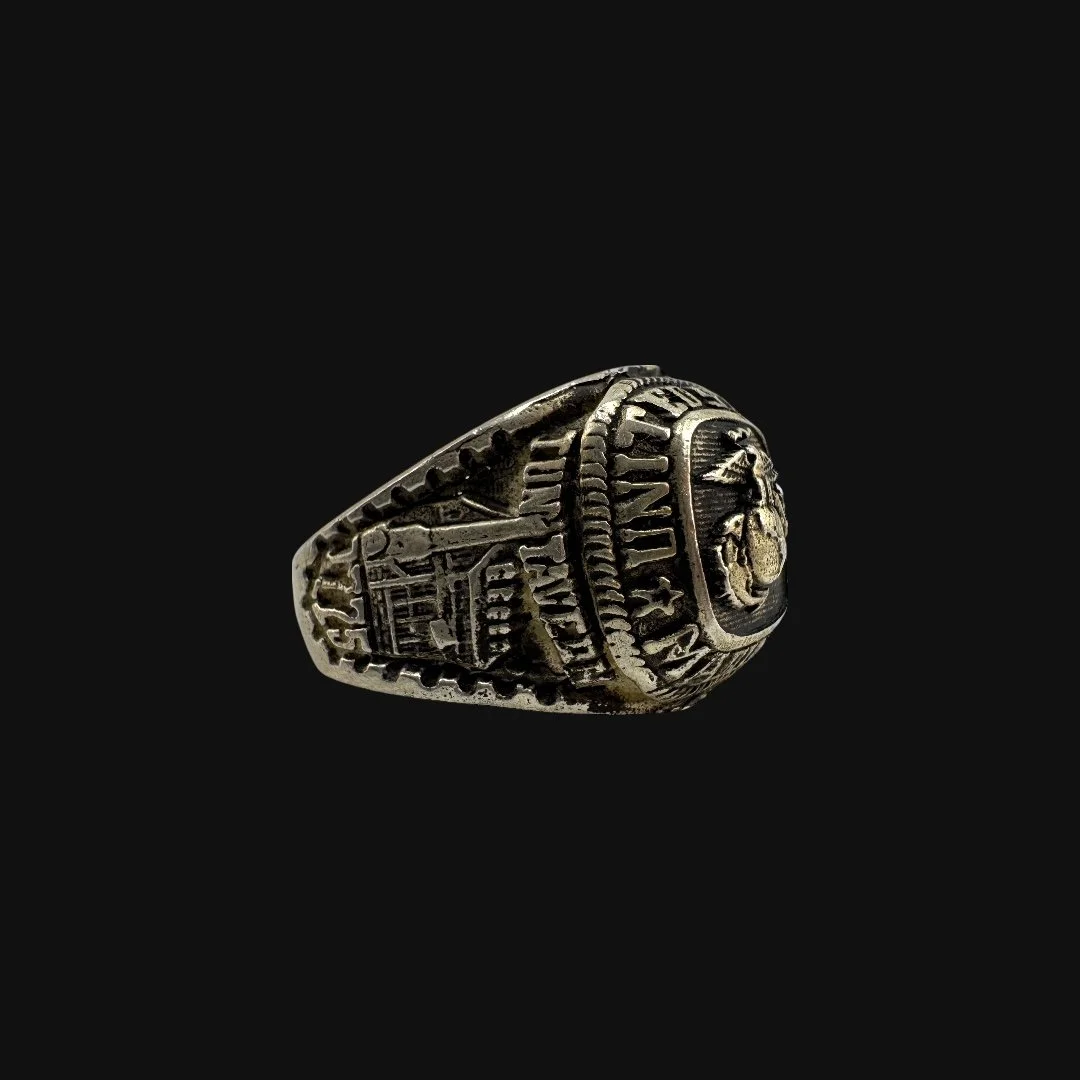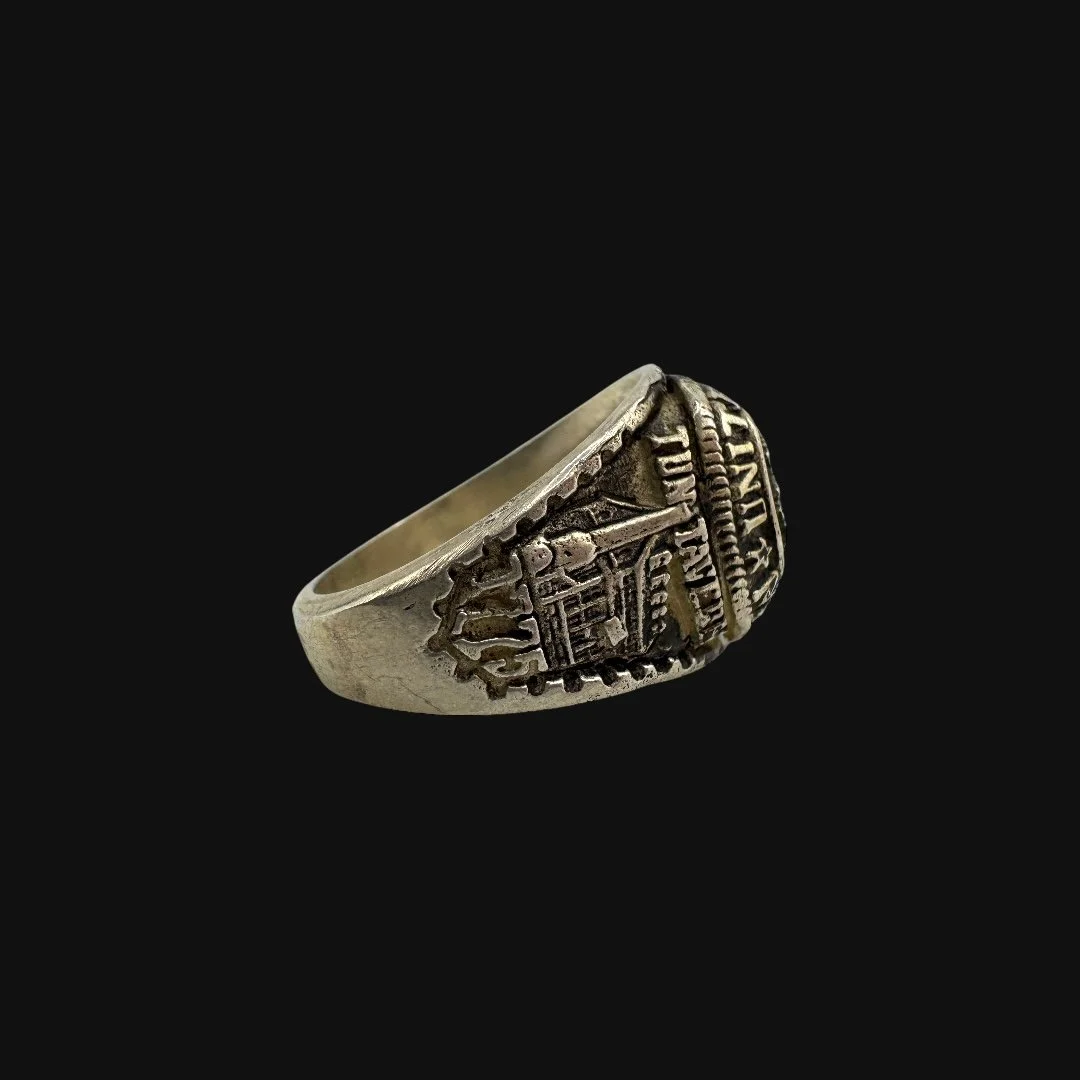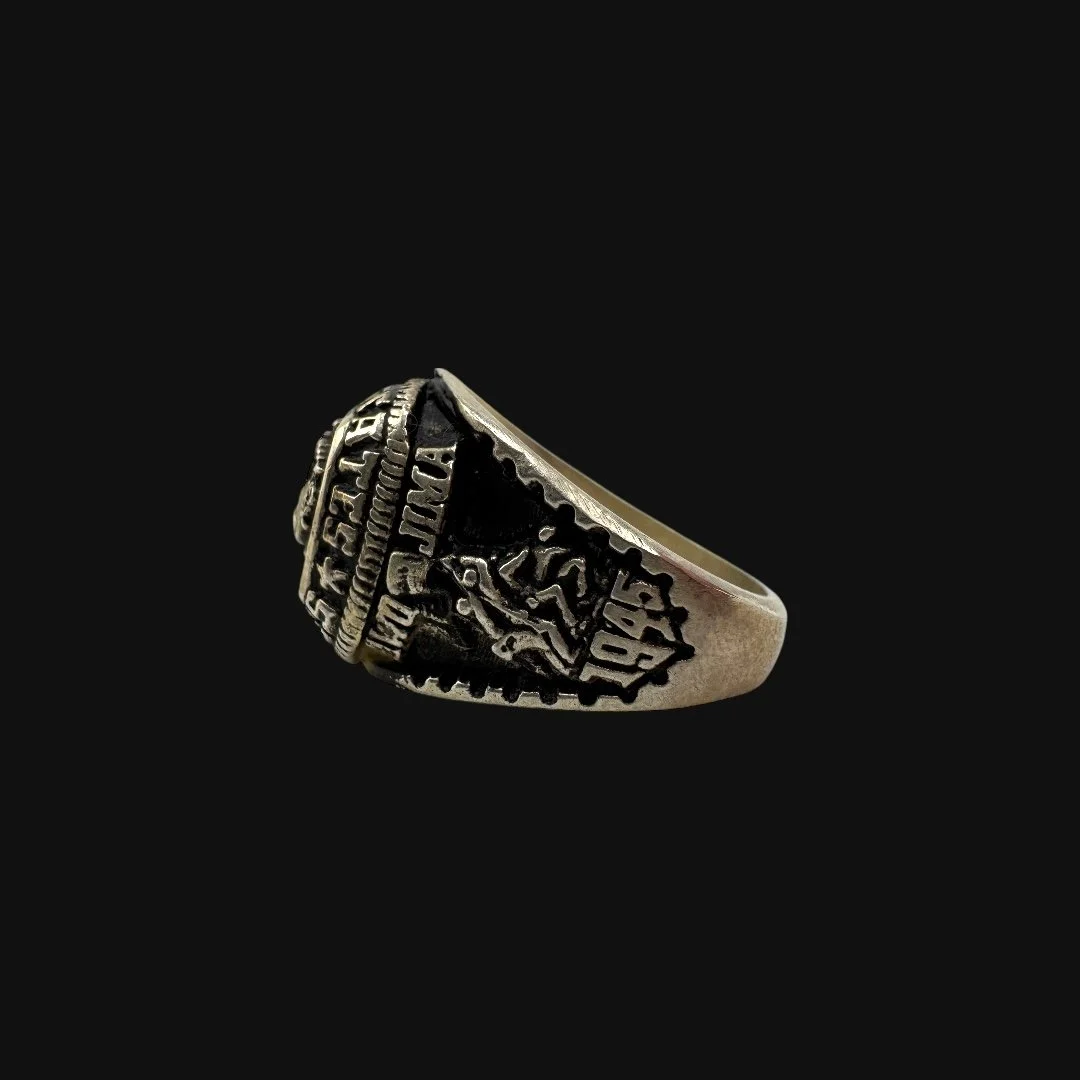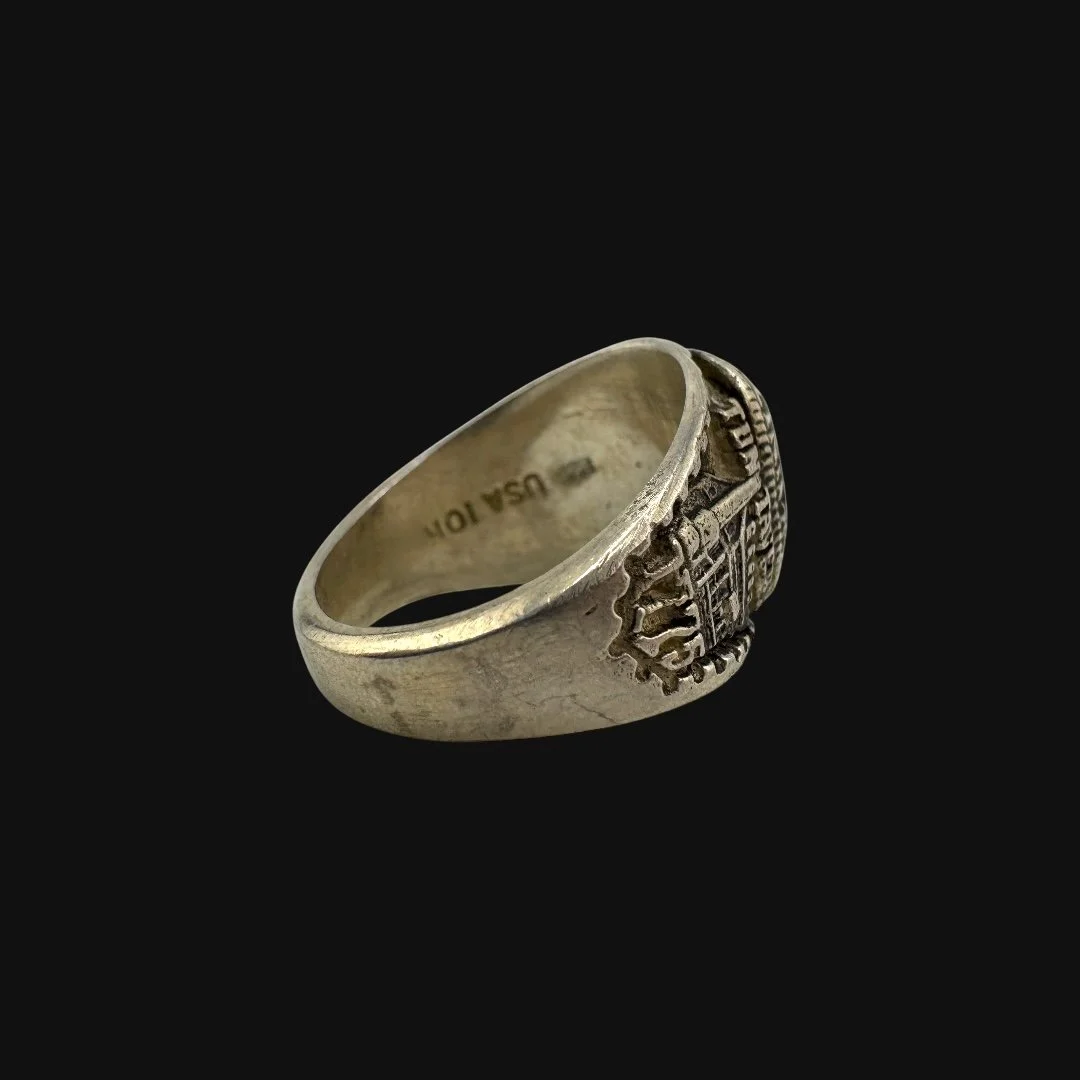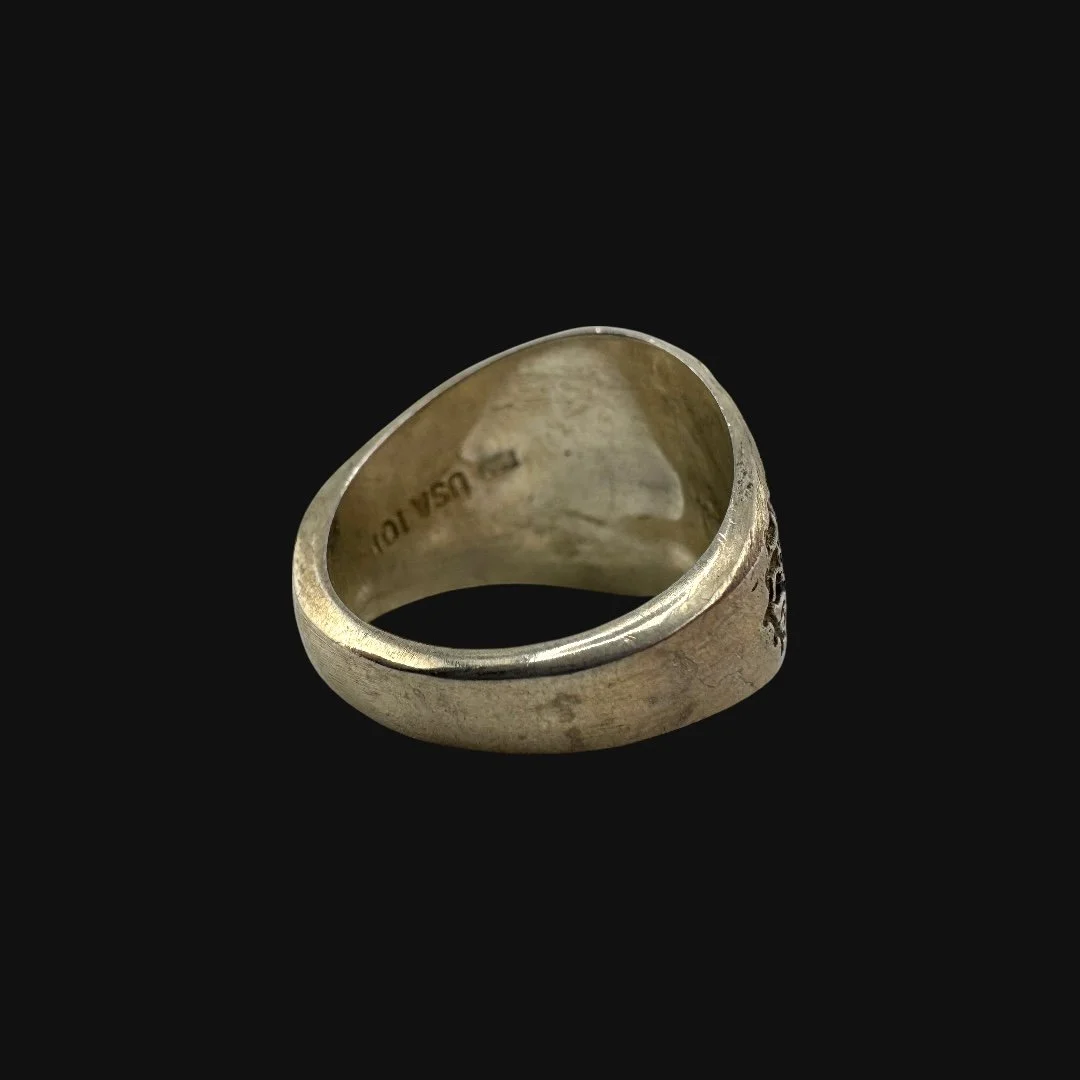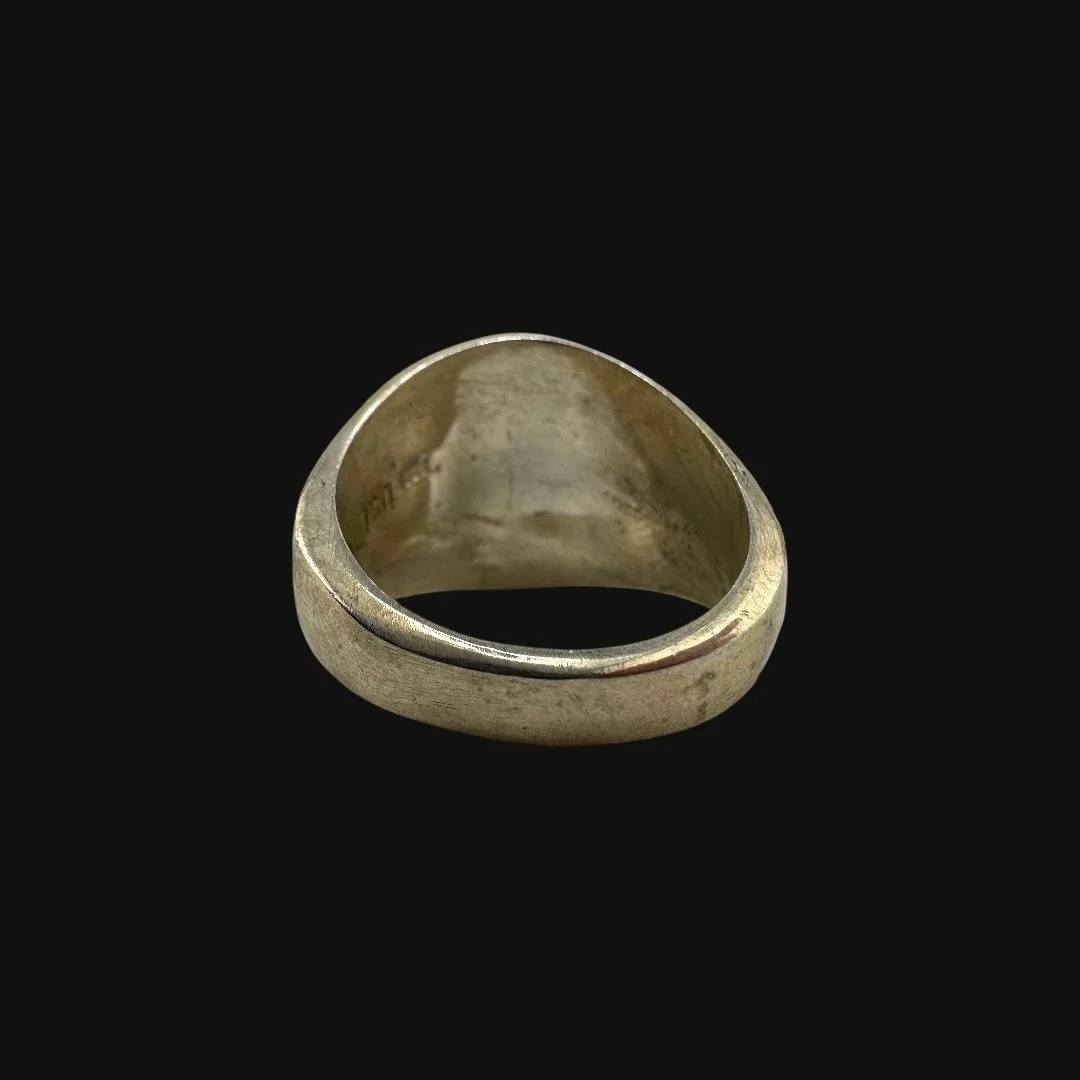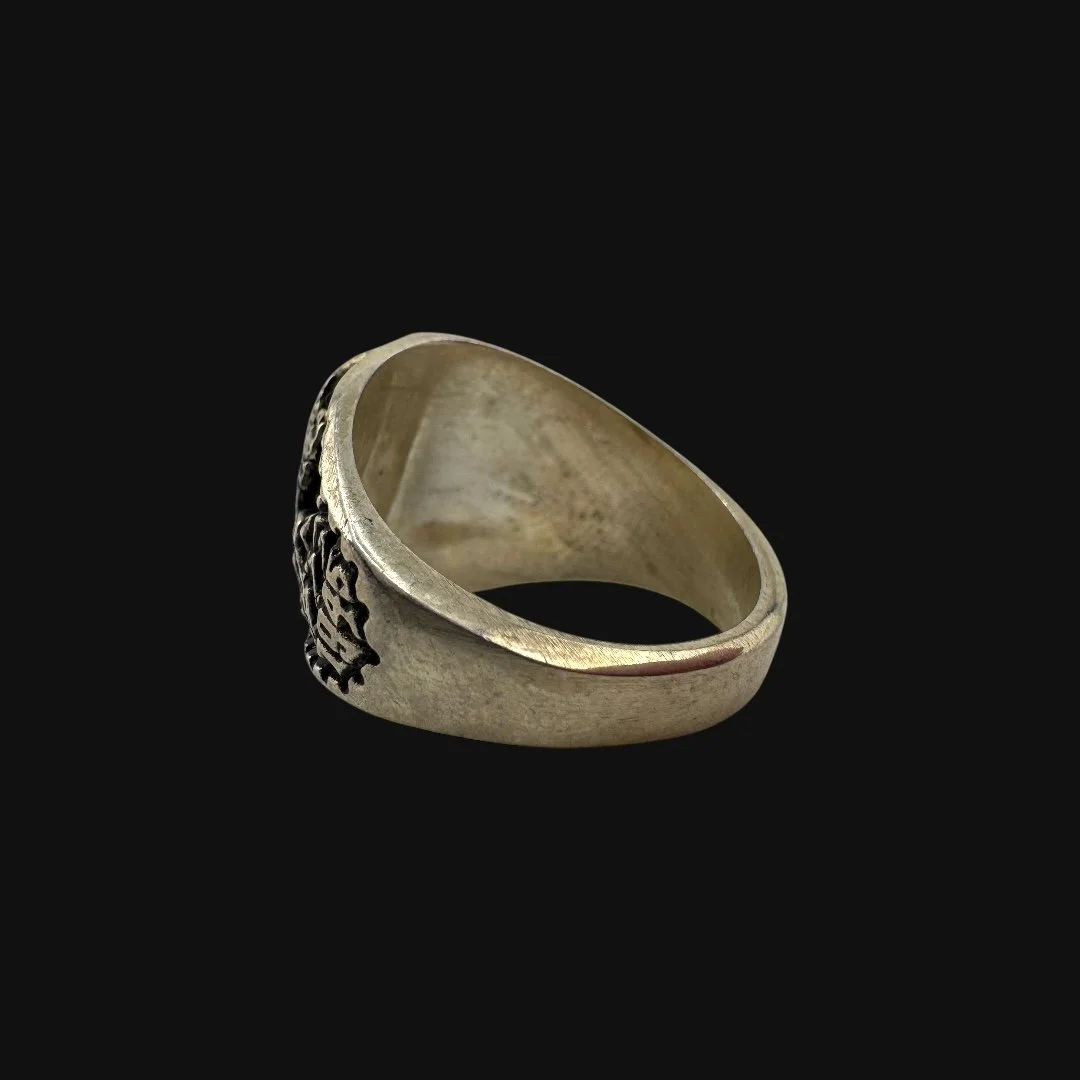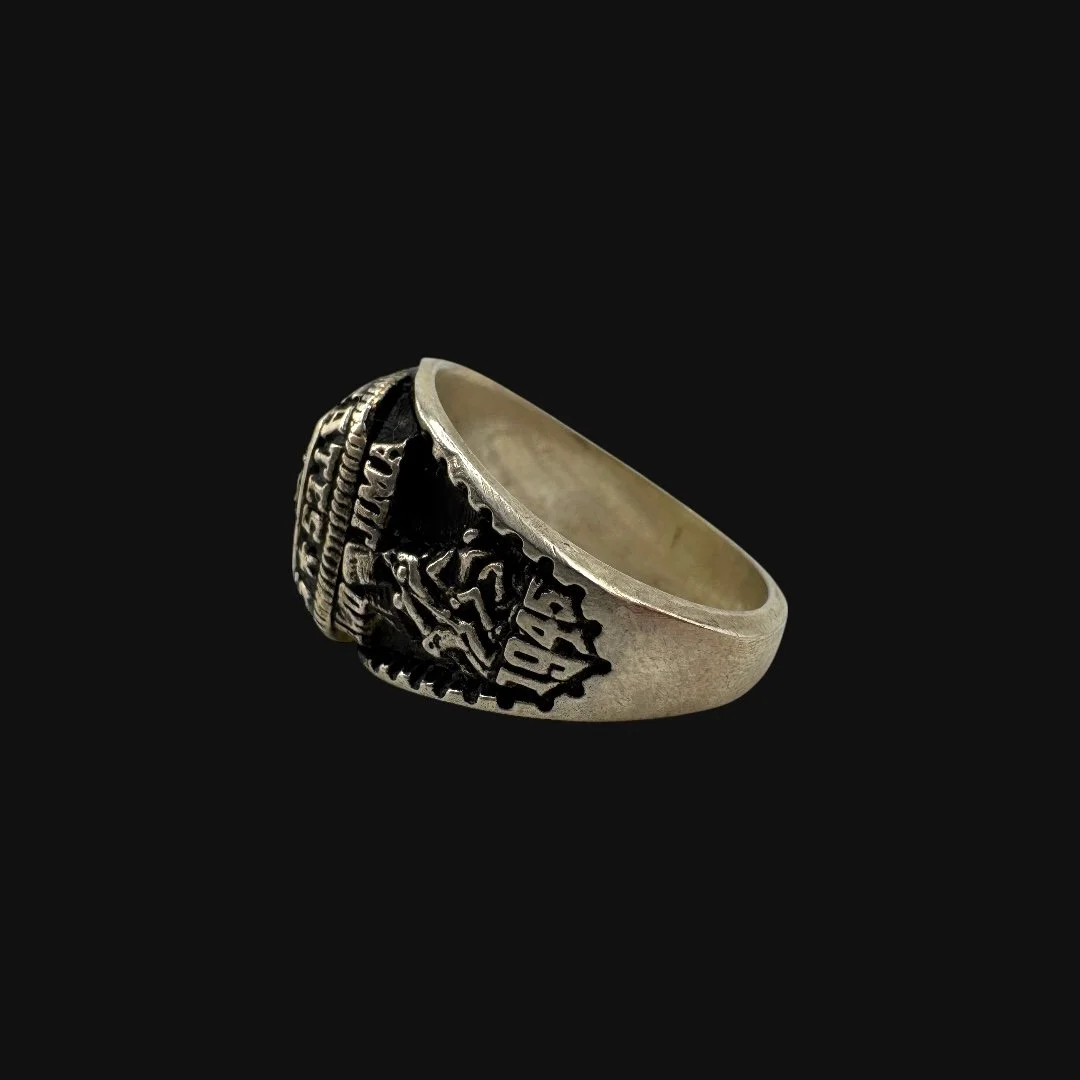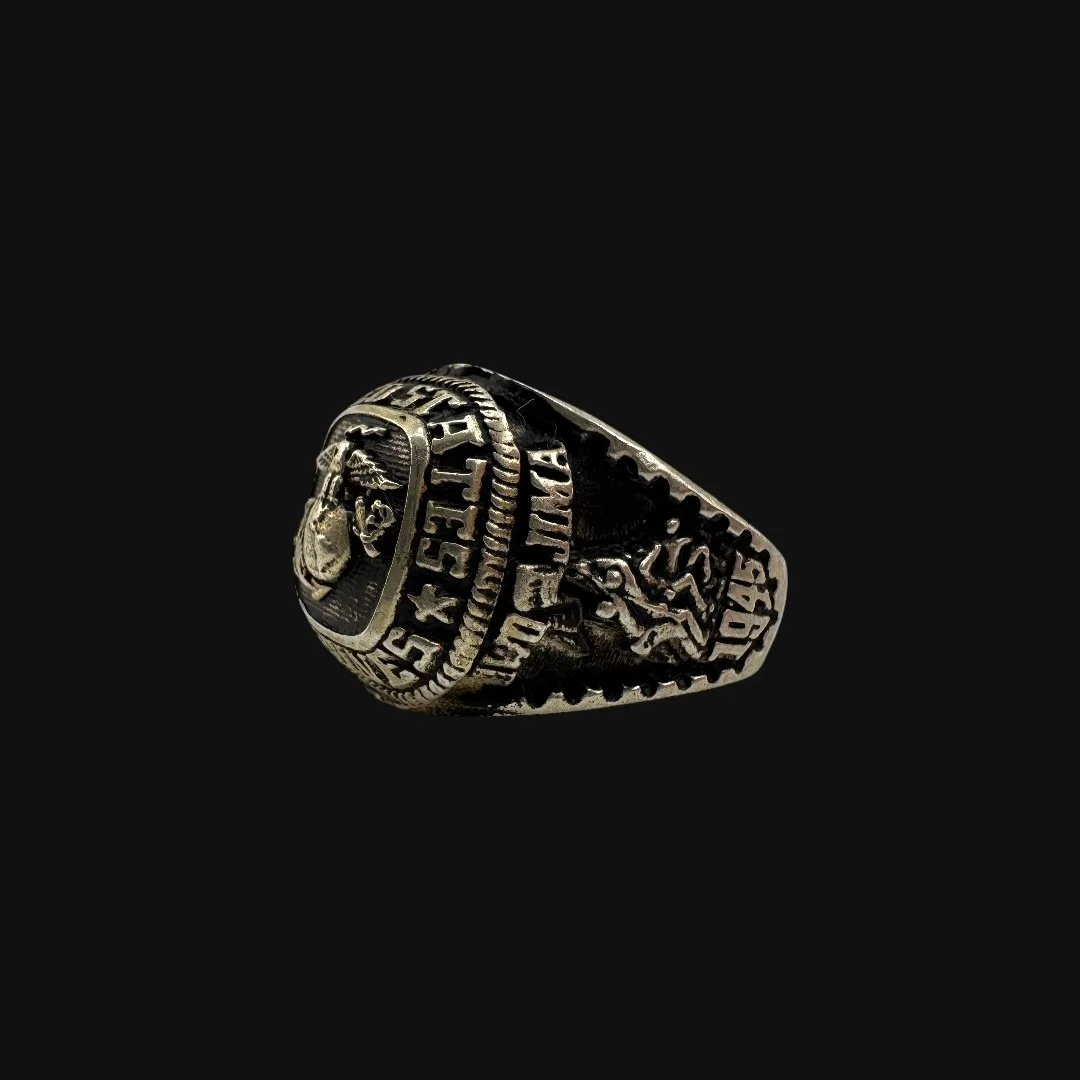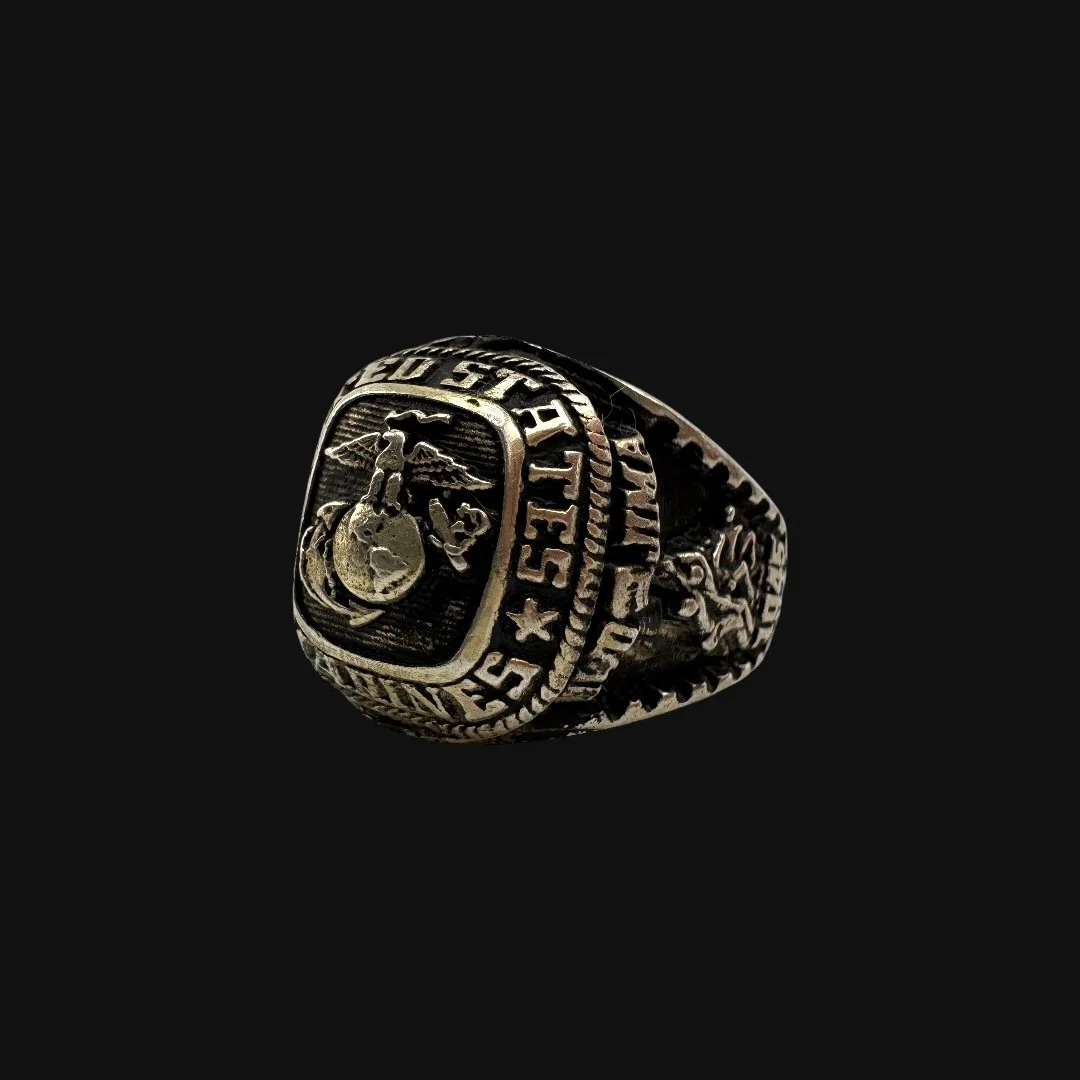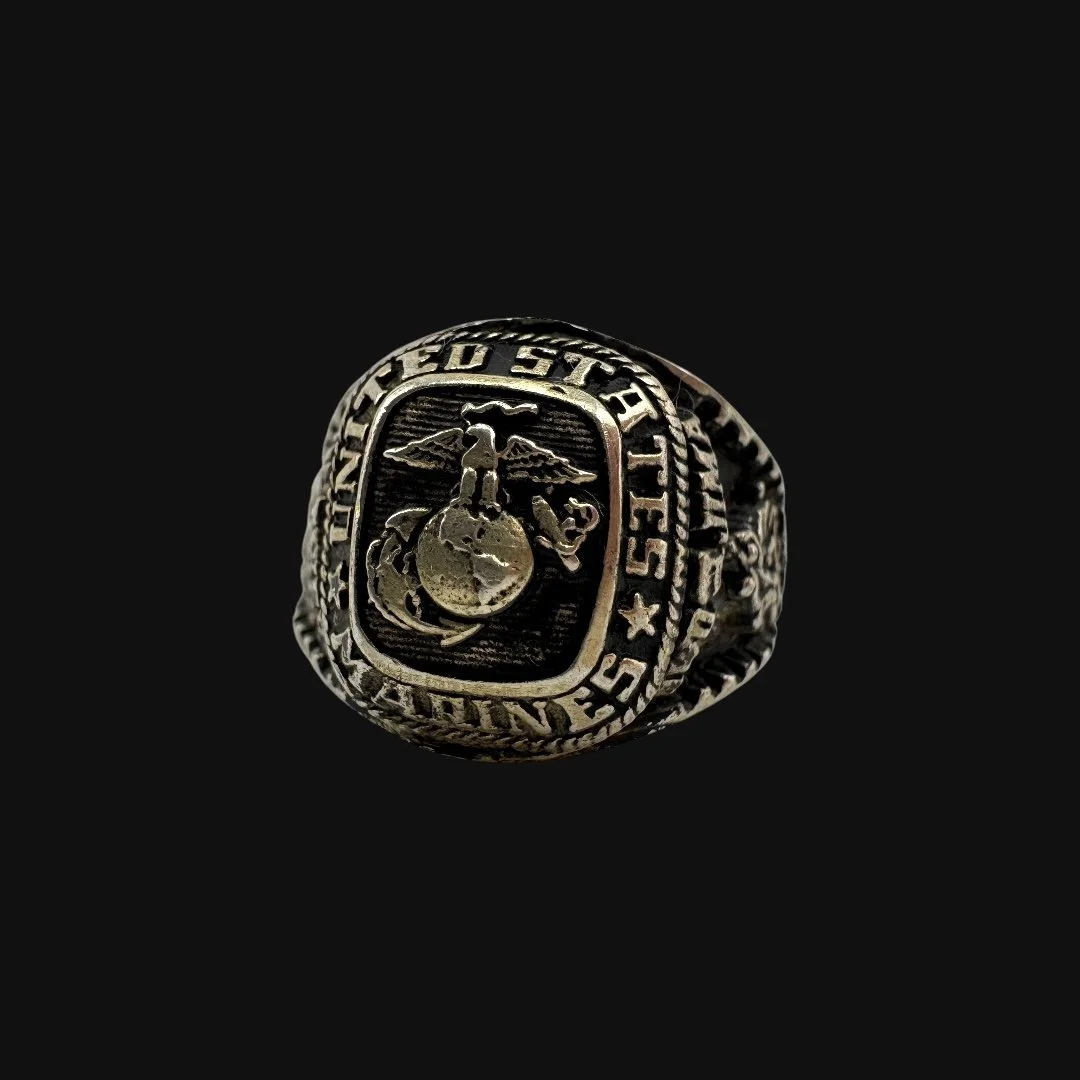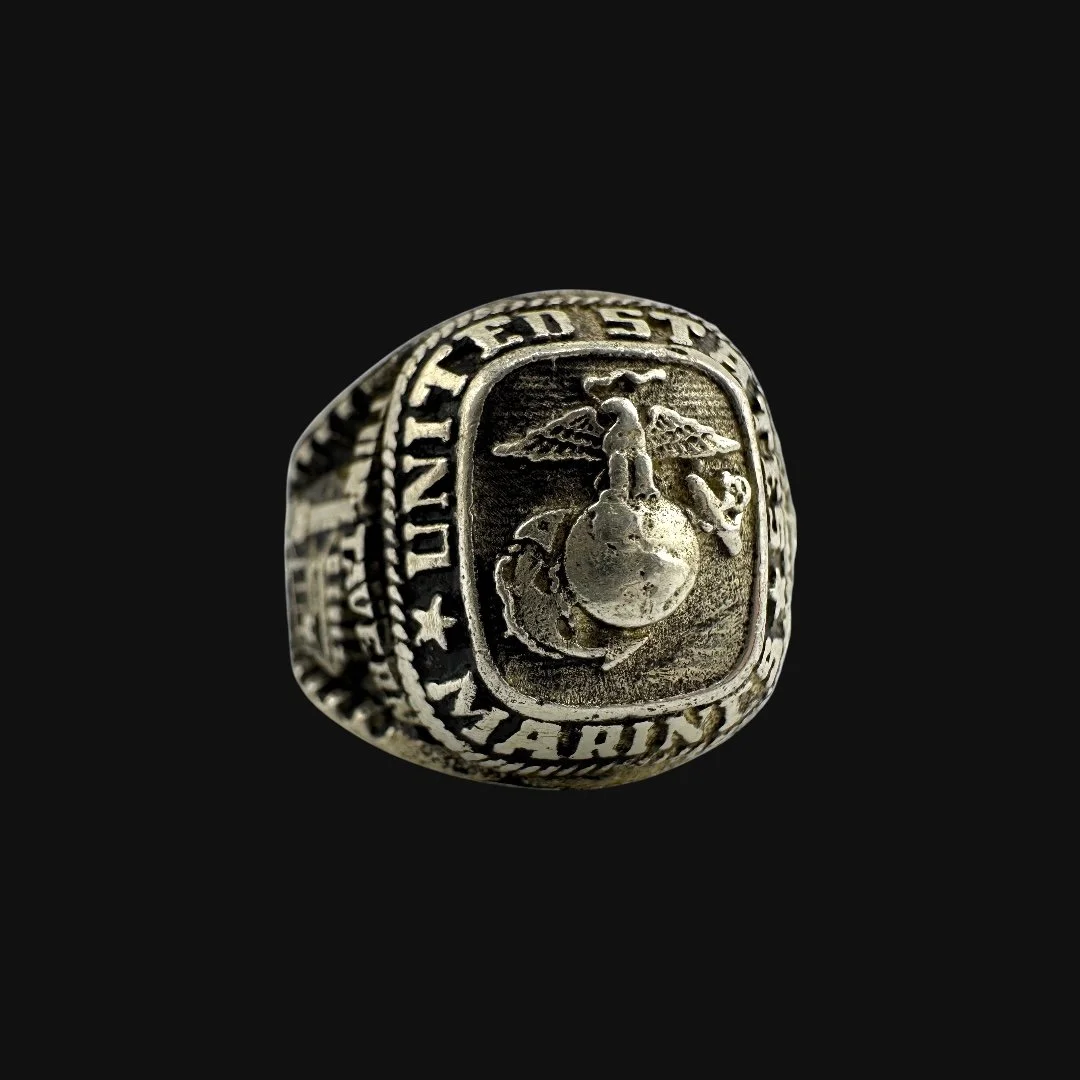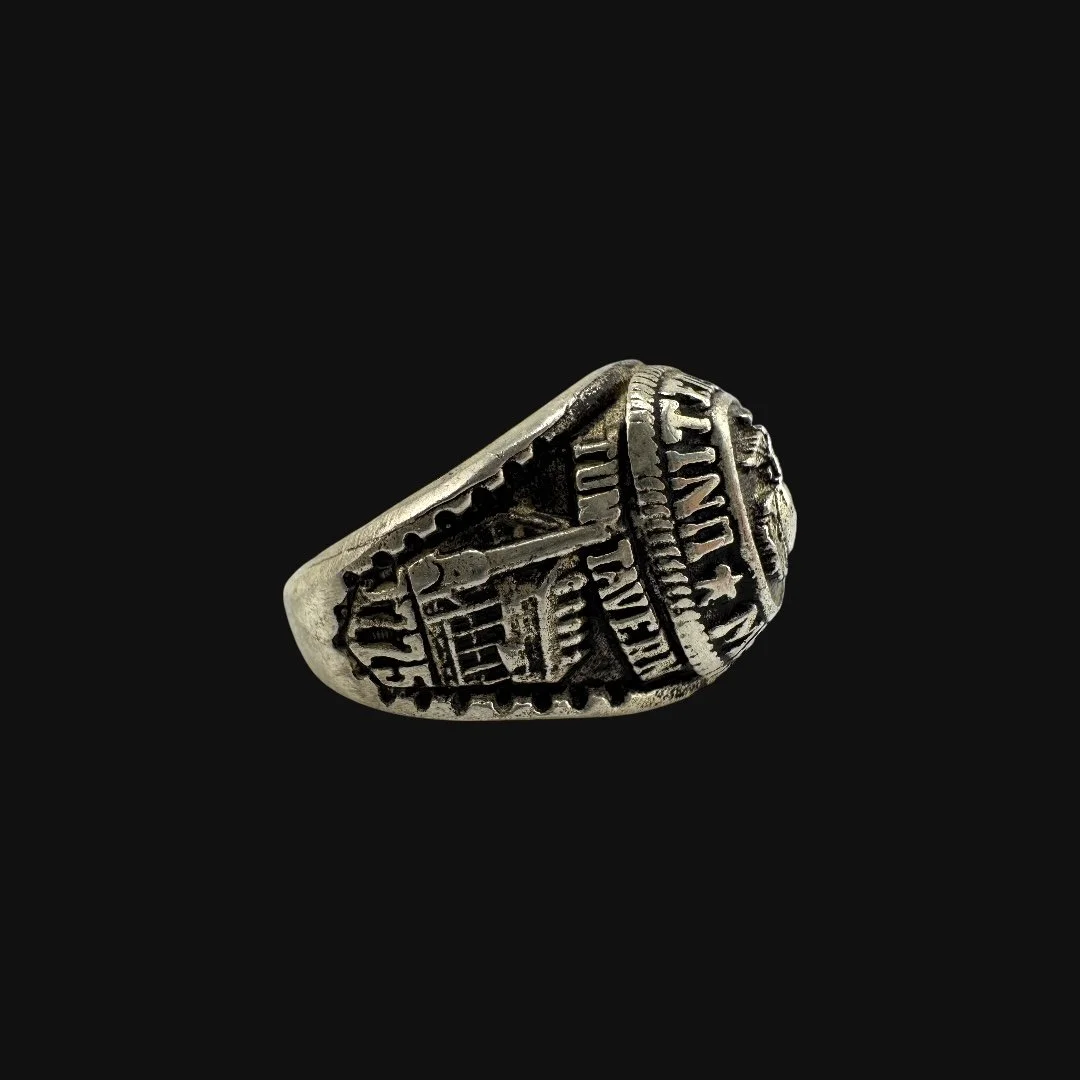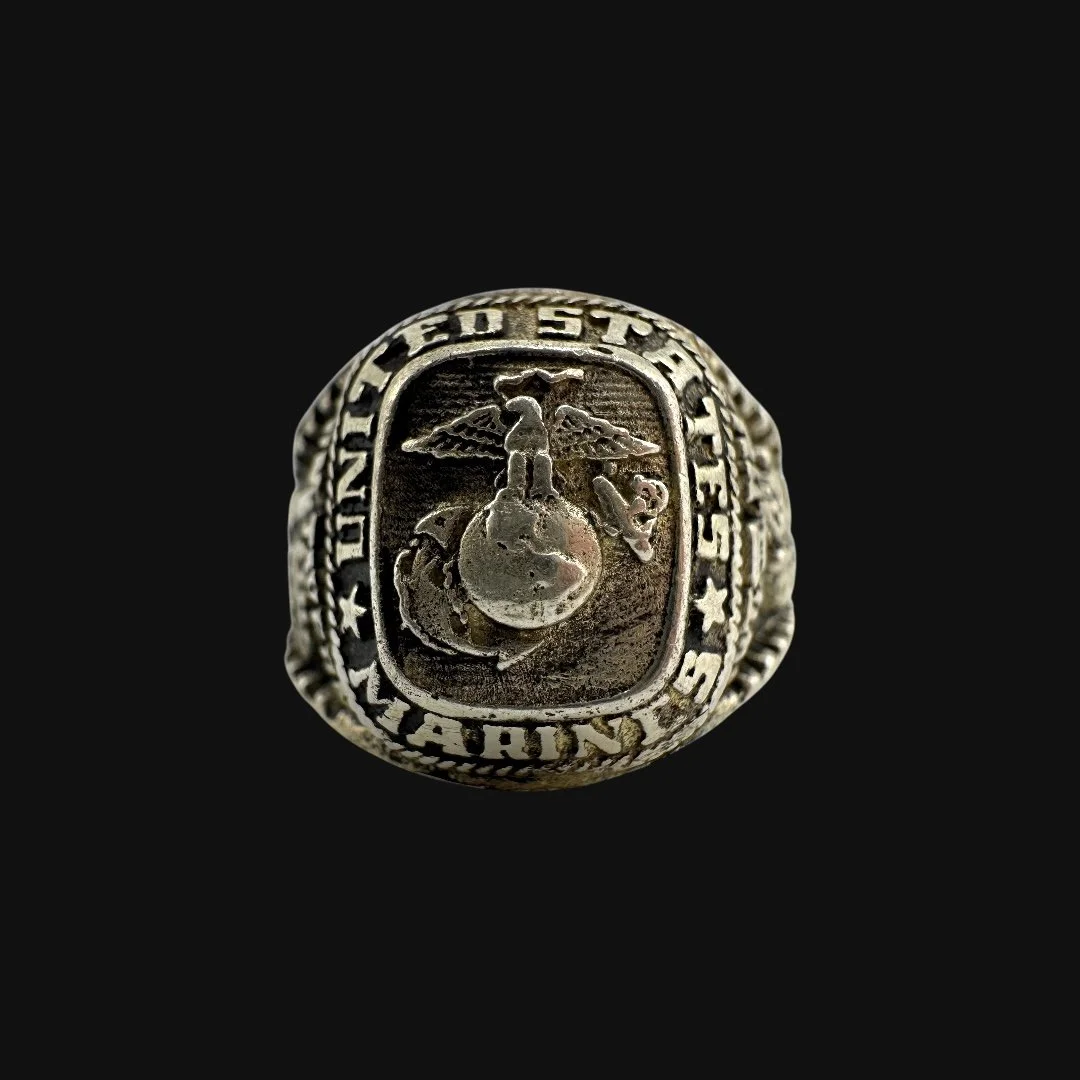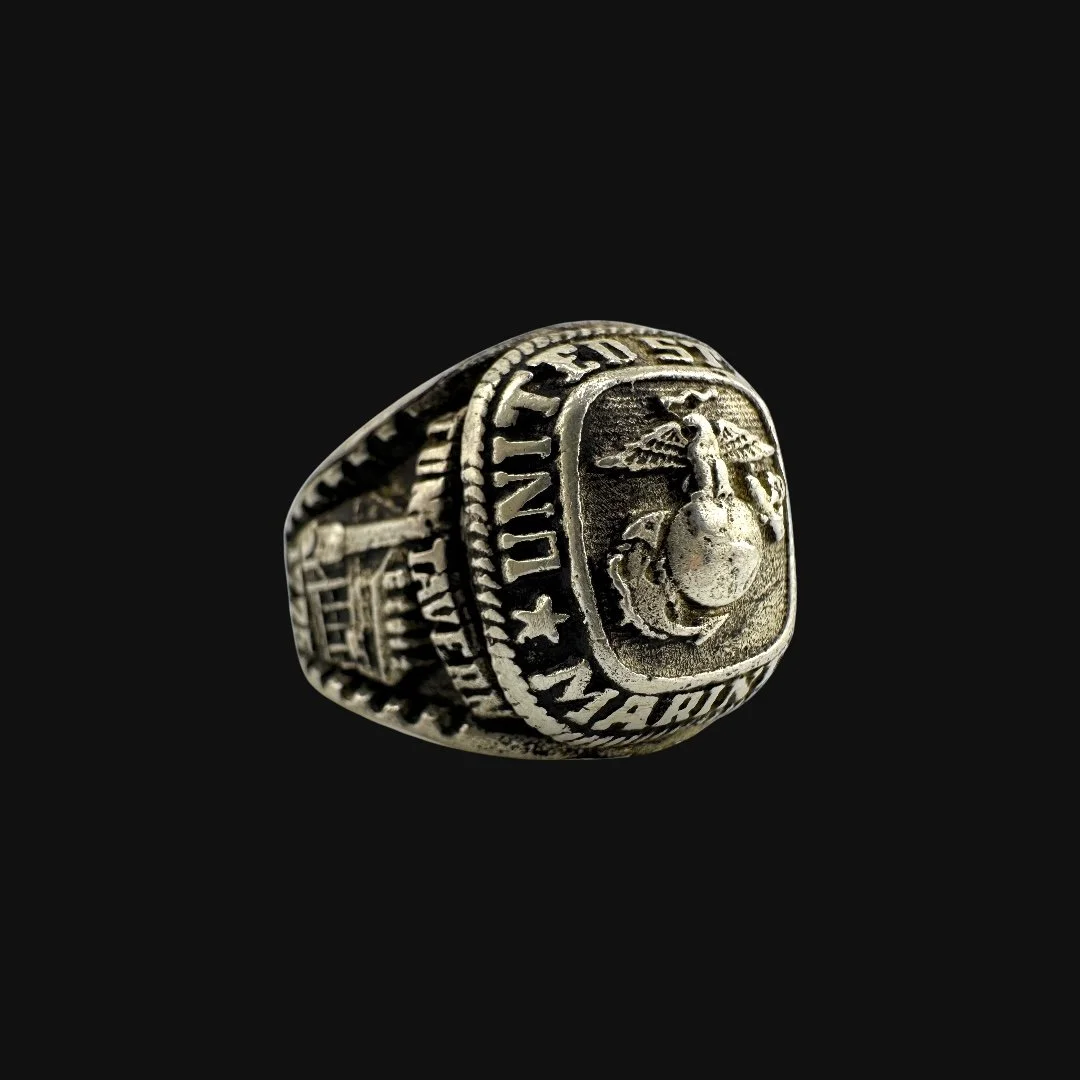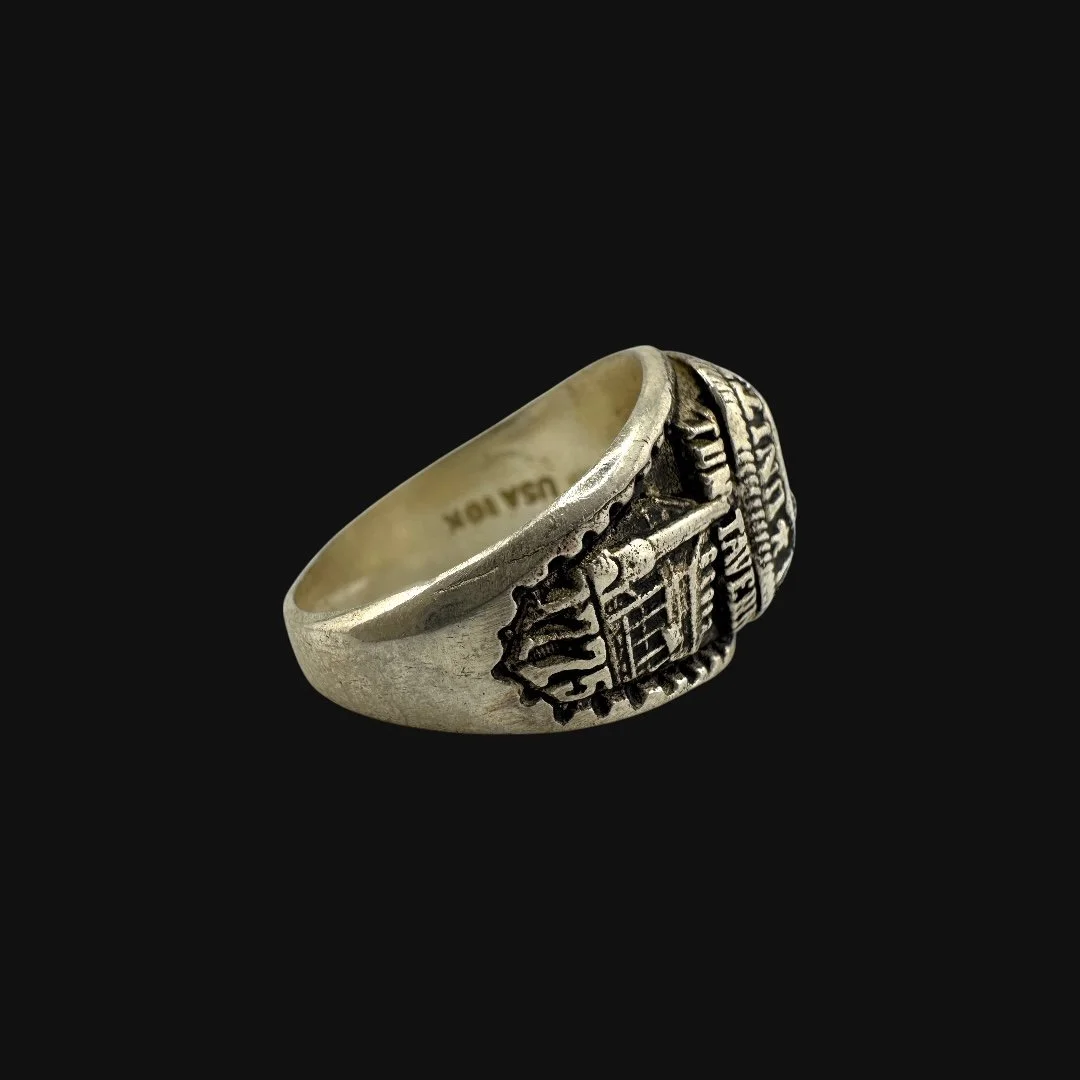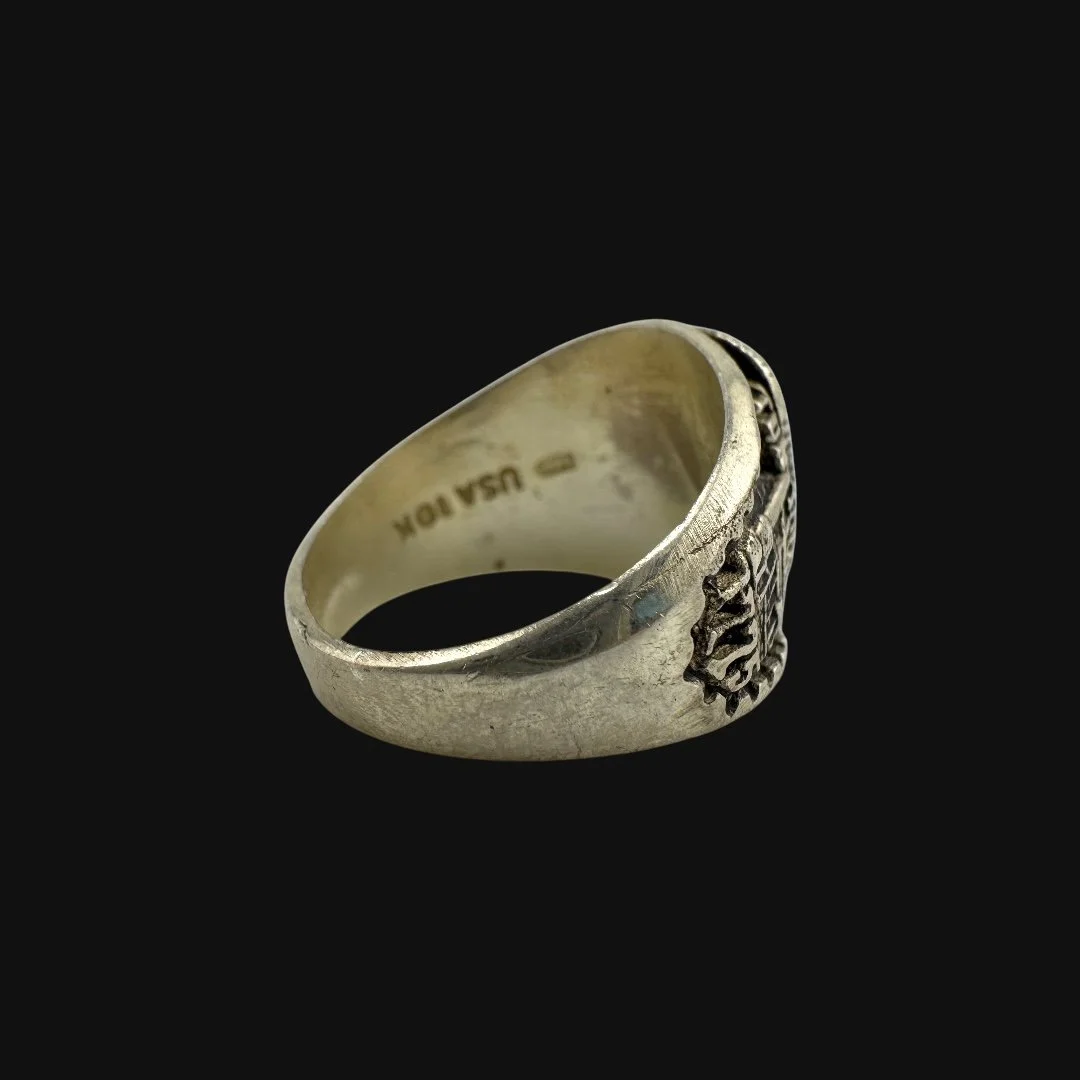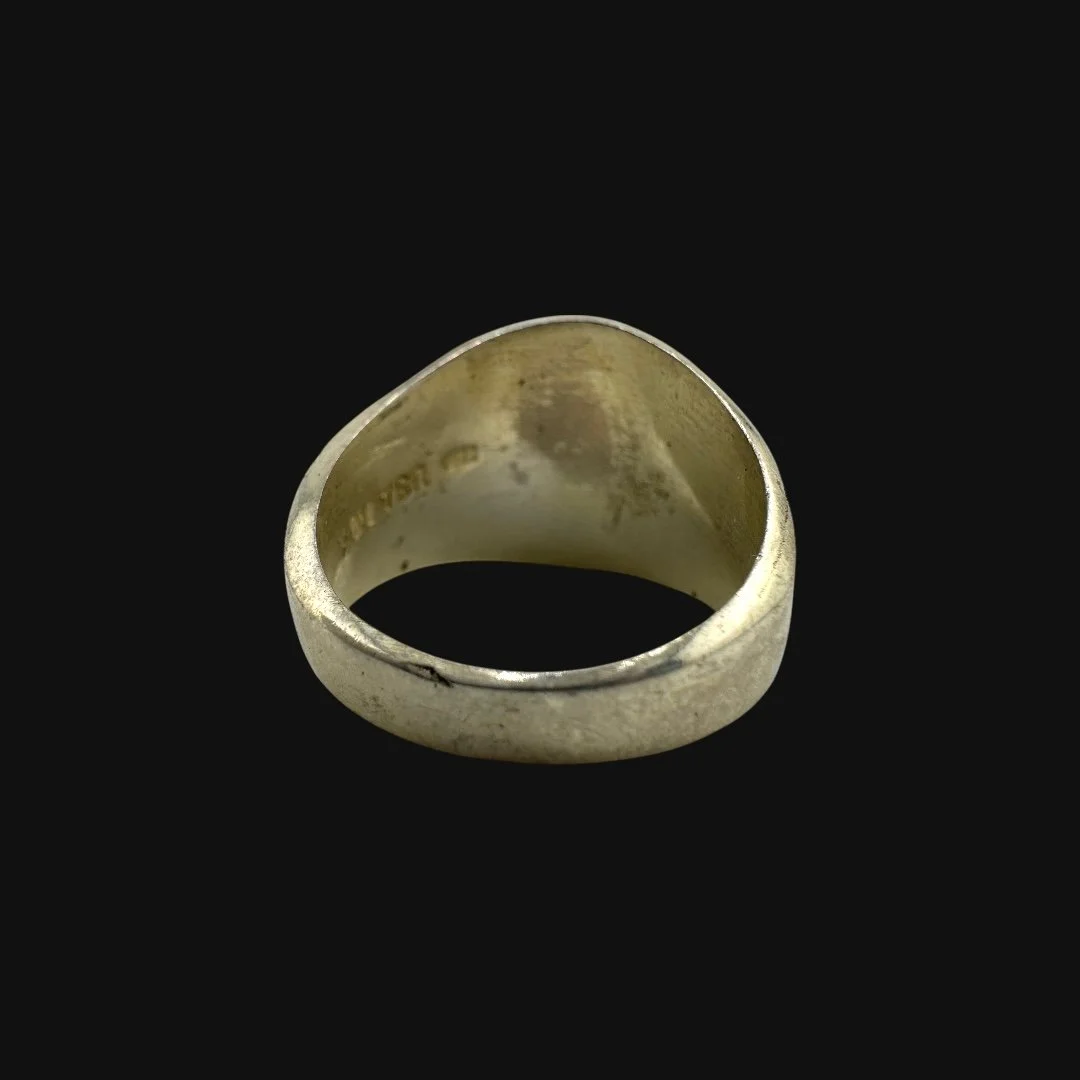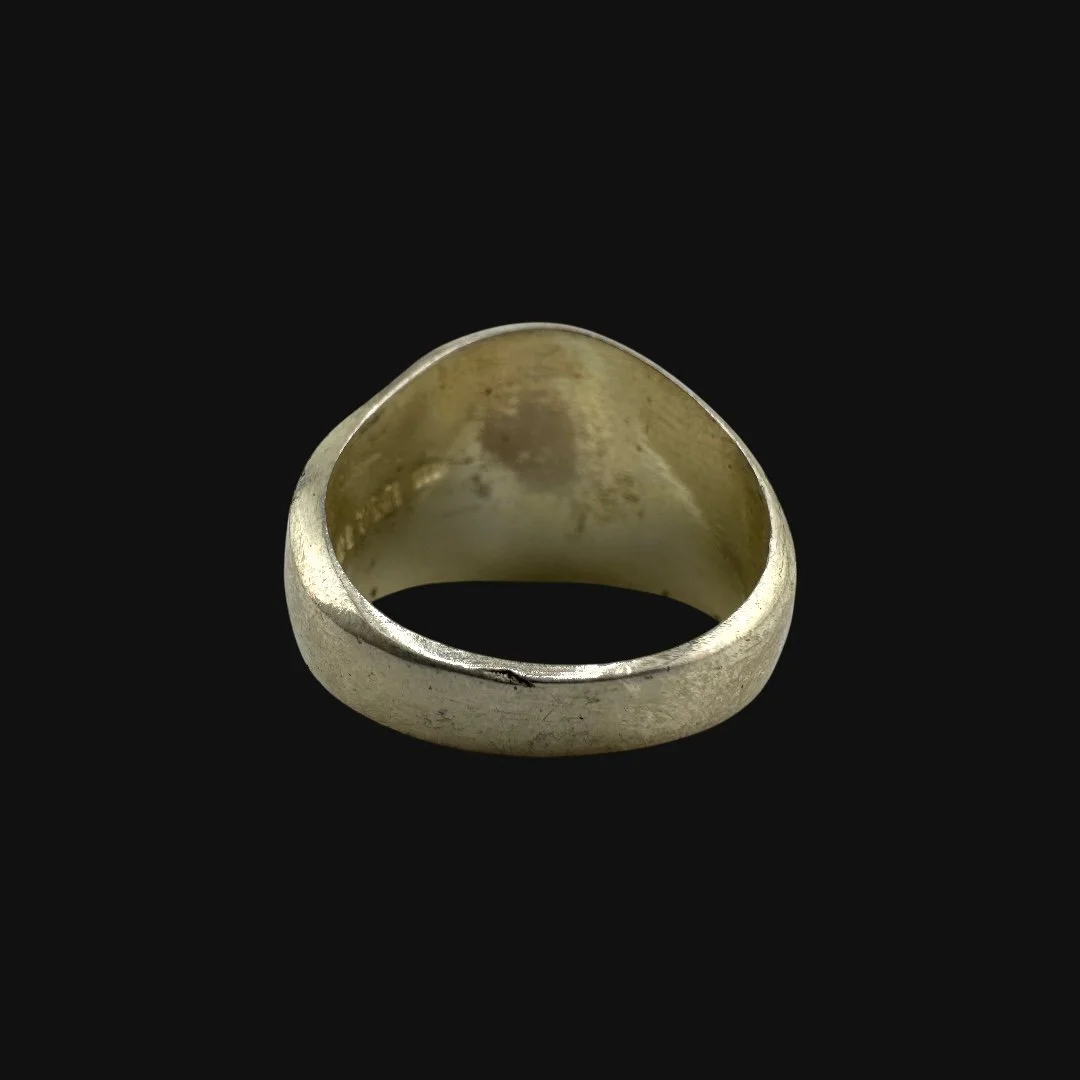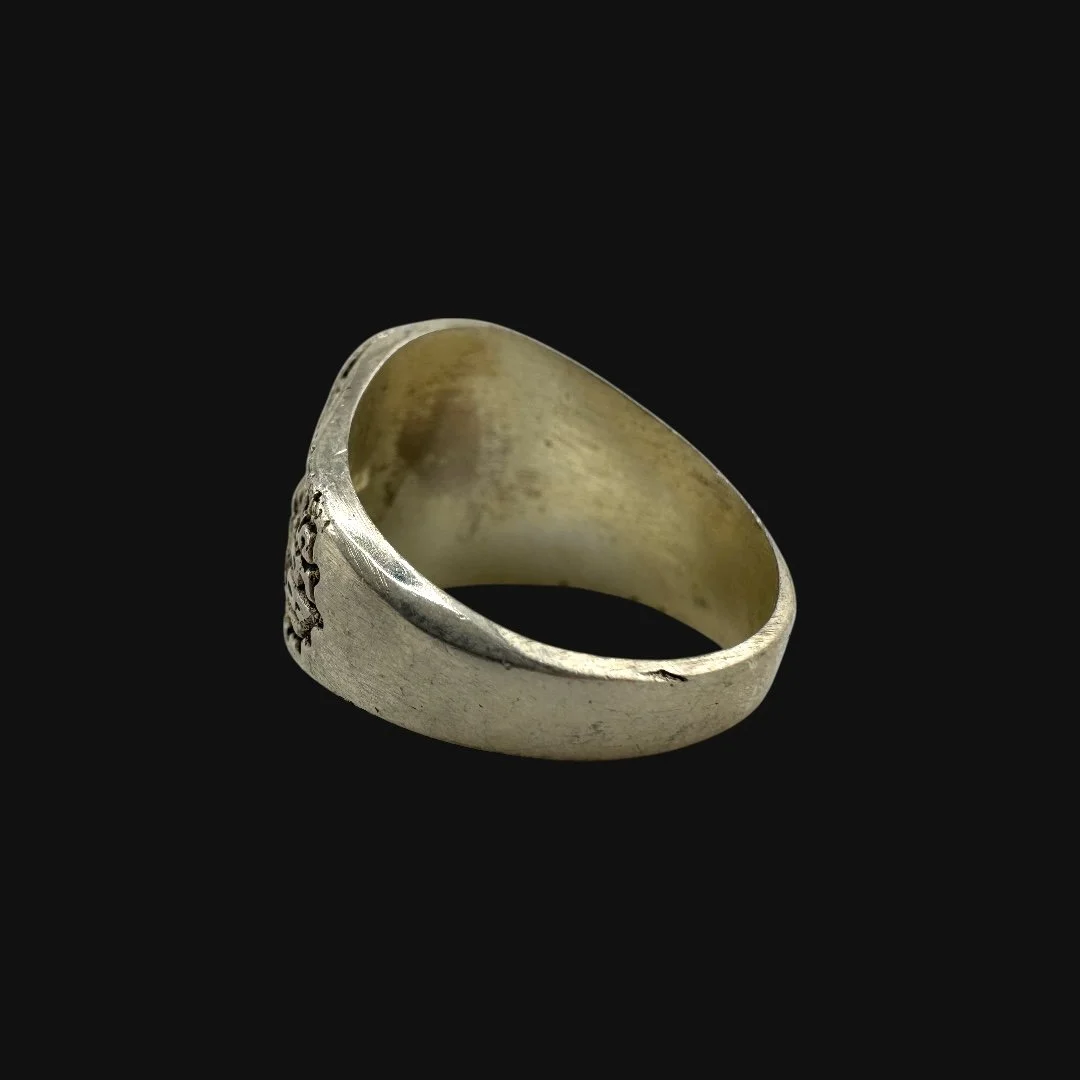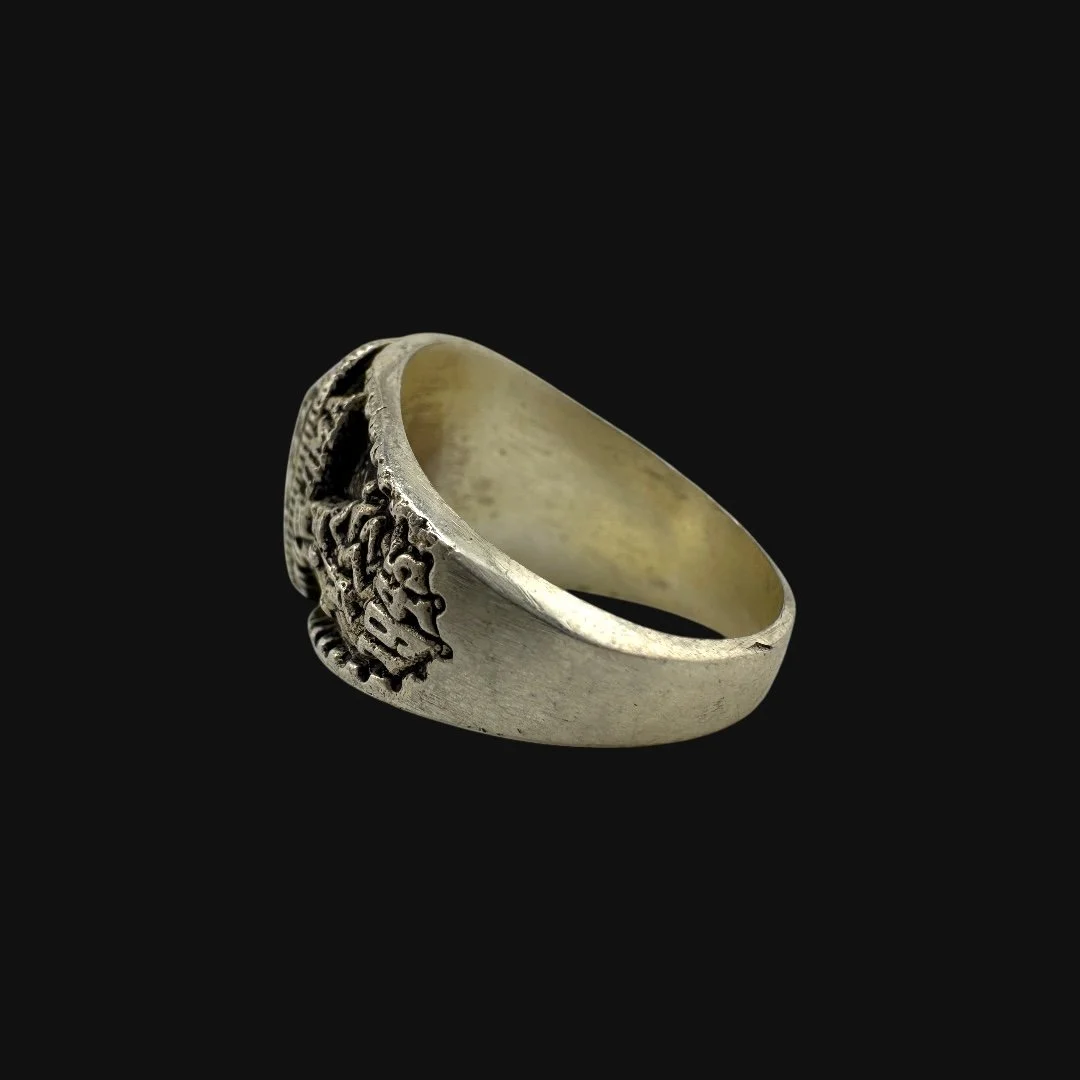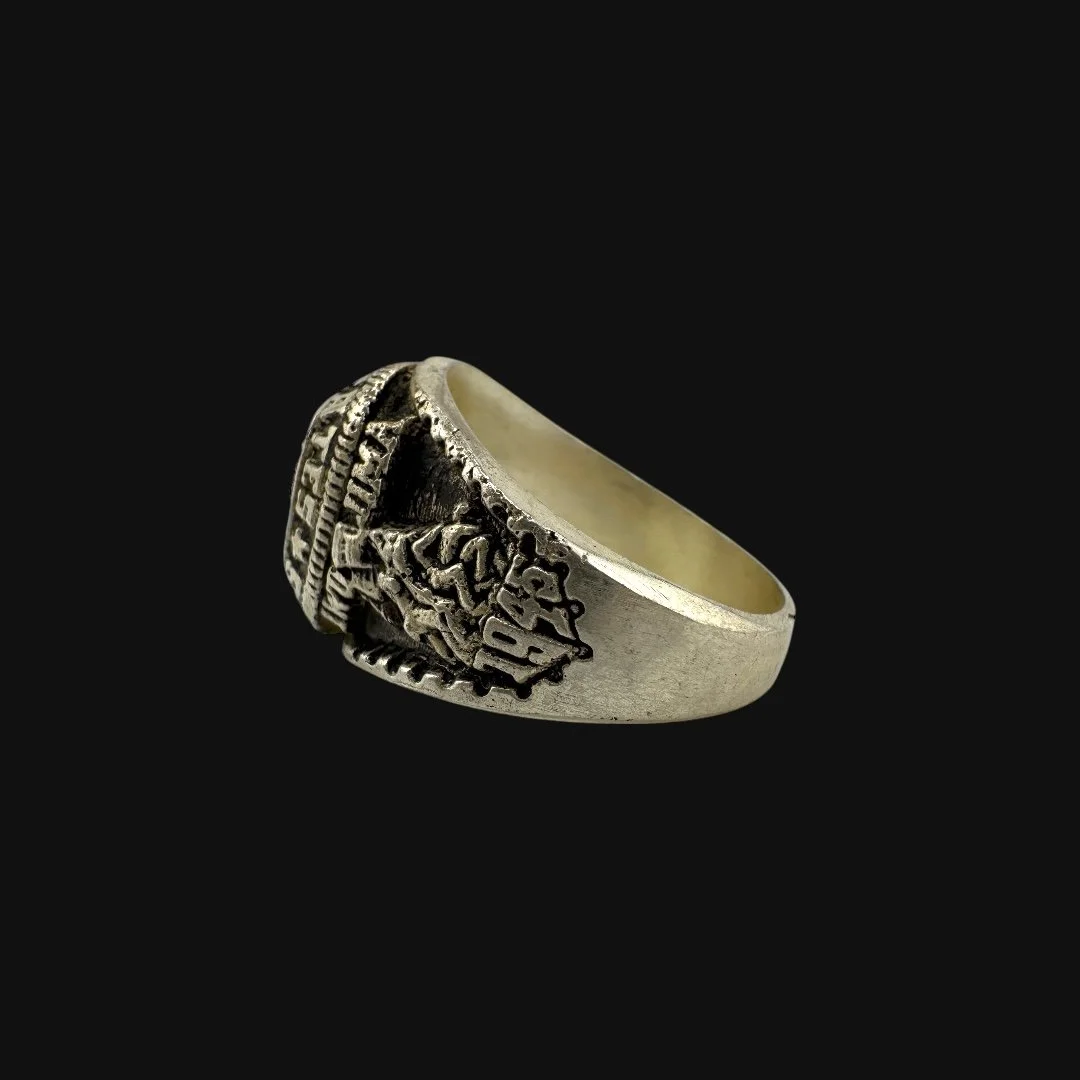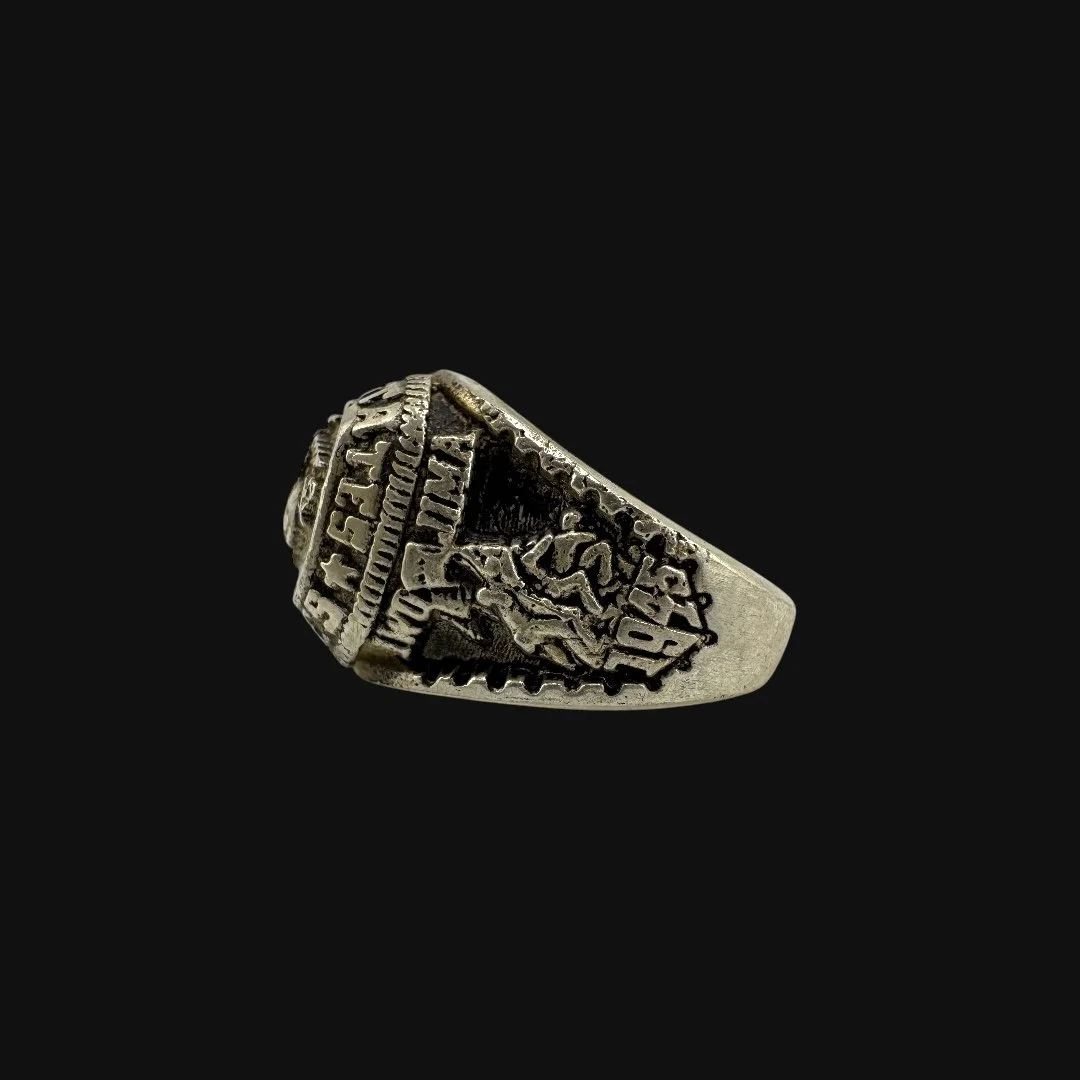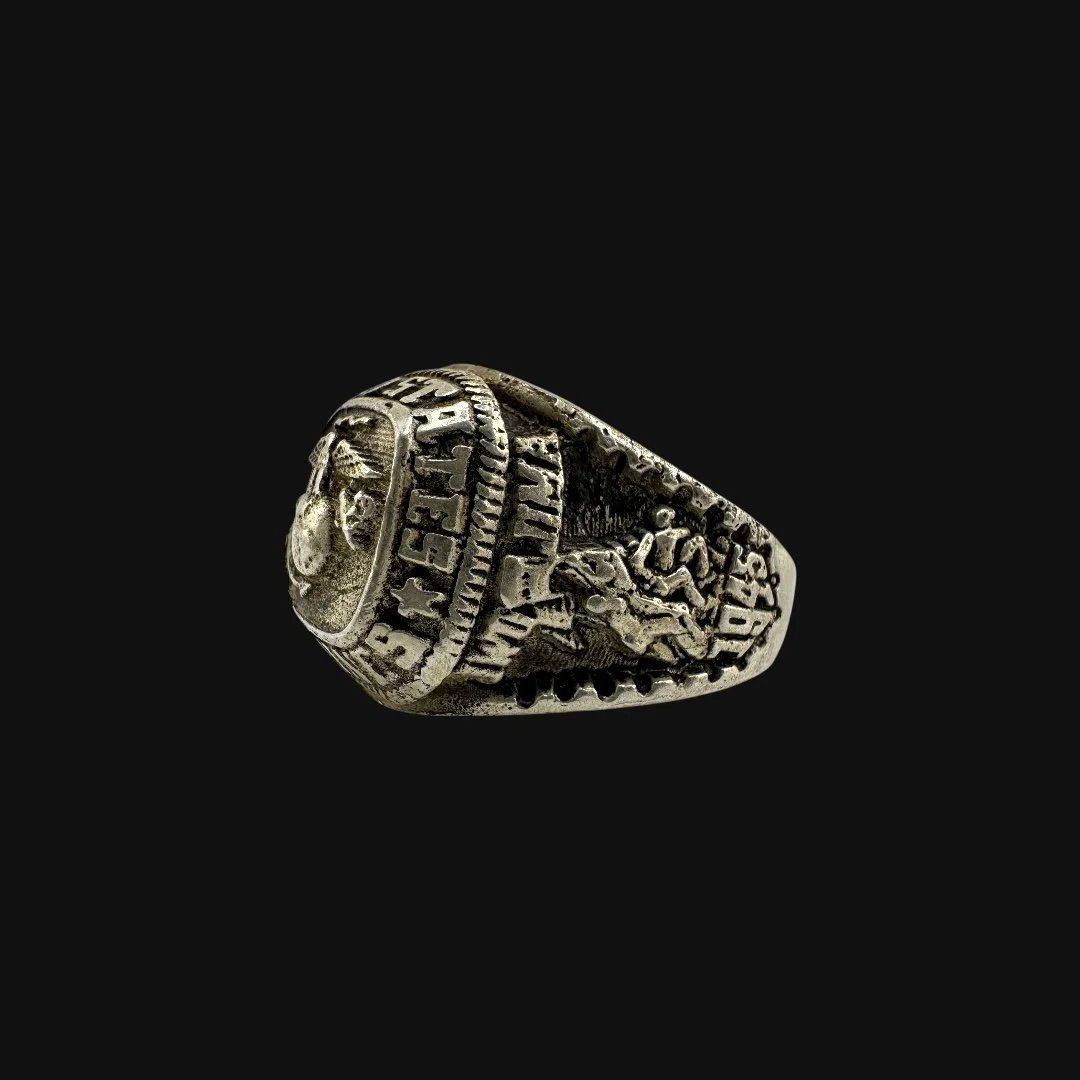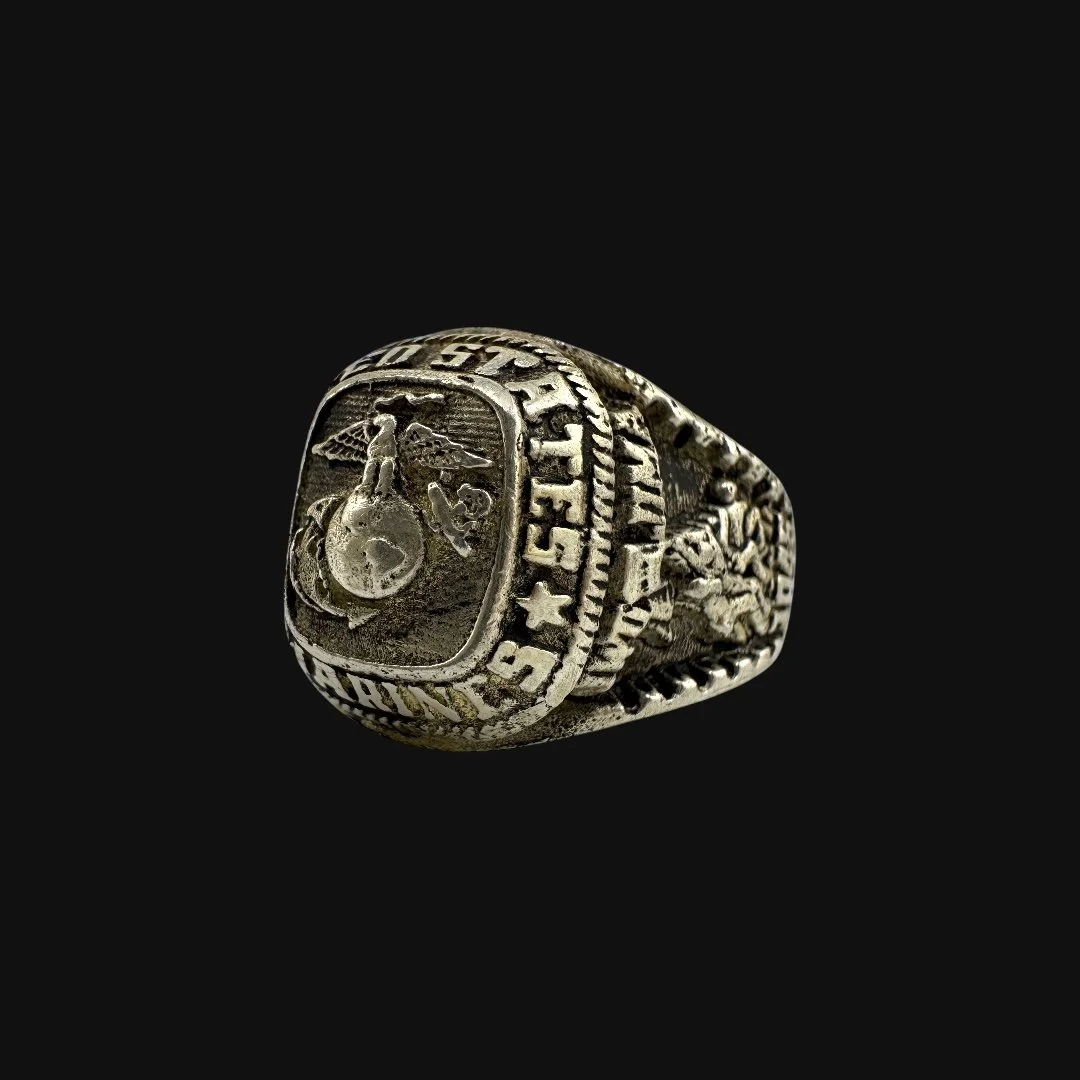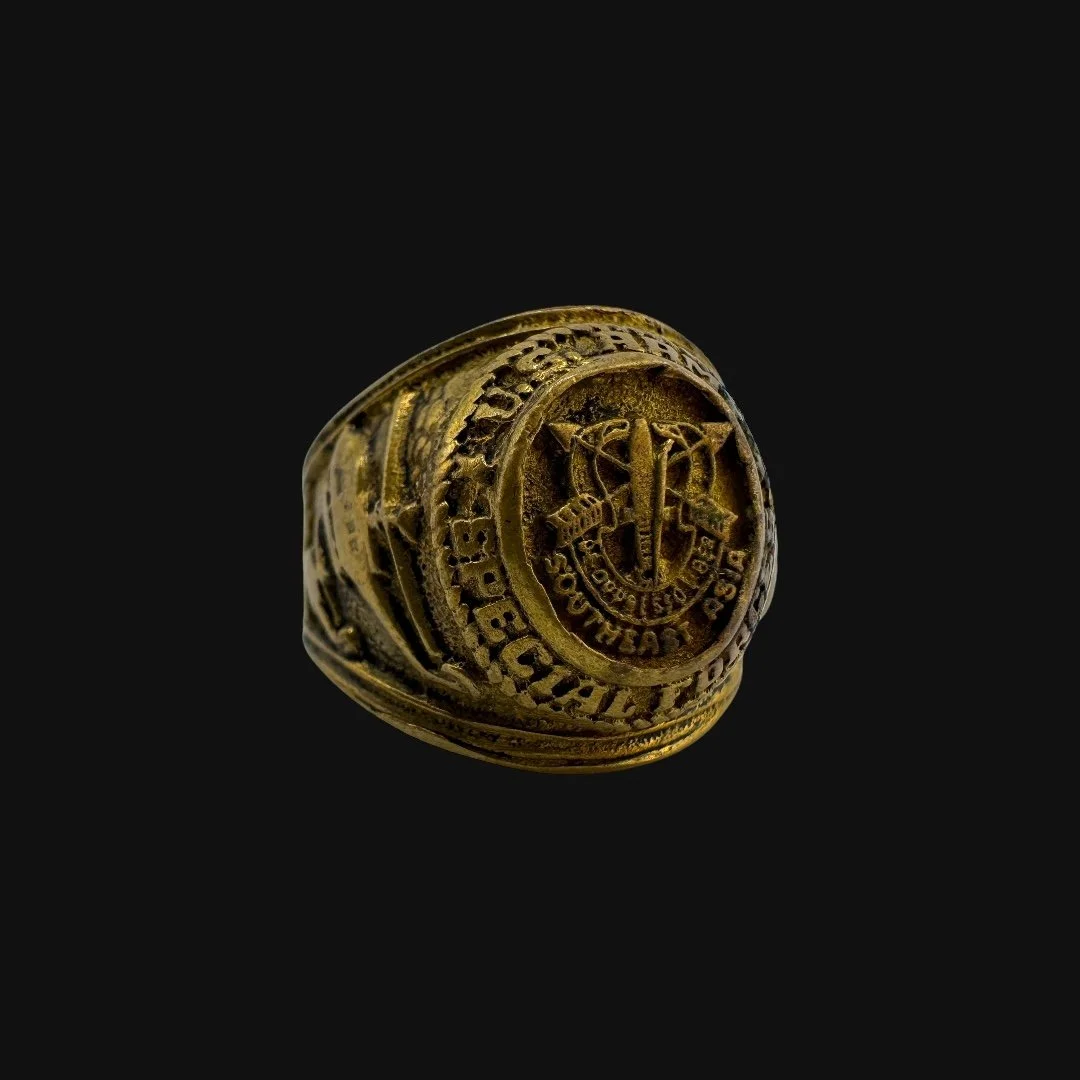 Image 1 of 14
Image 1 of 14

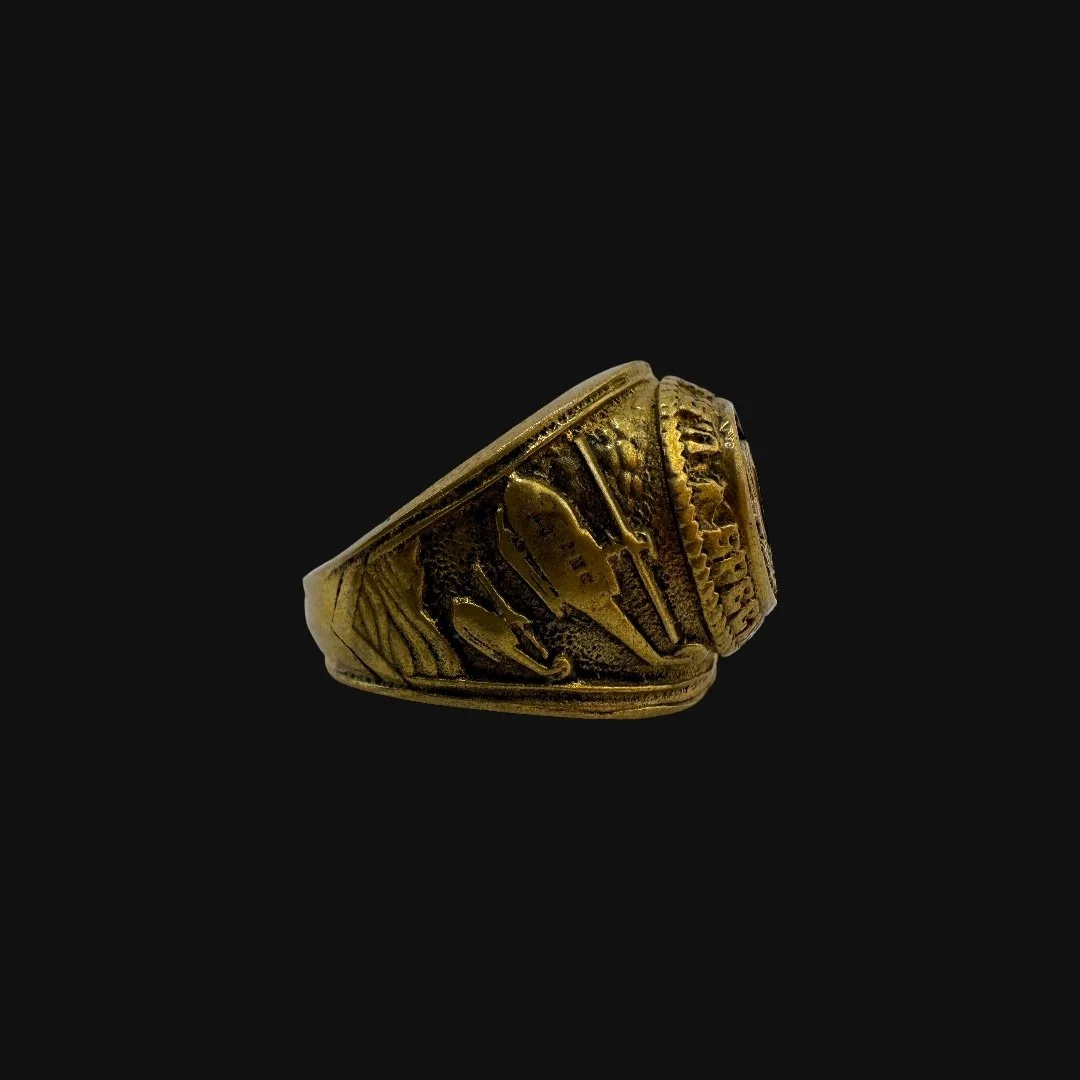 Image 2 of 14
Image 2 of 14

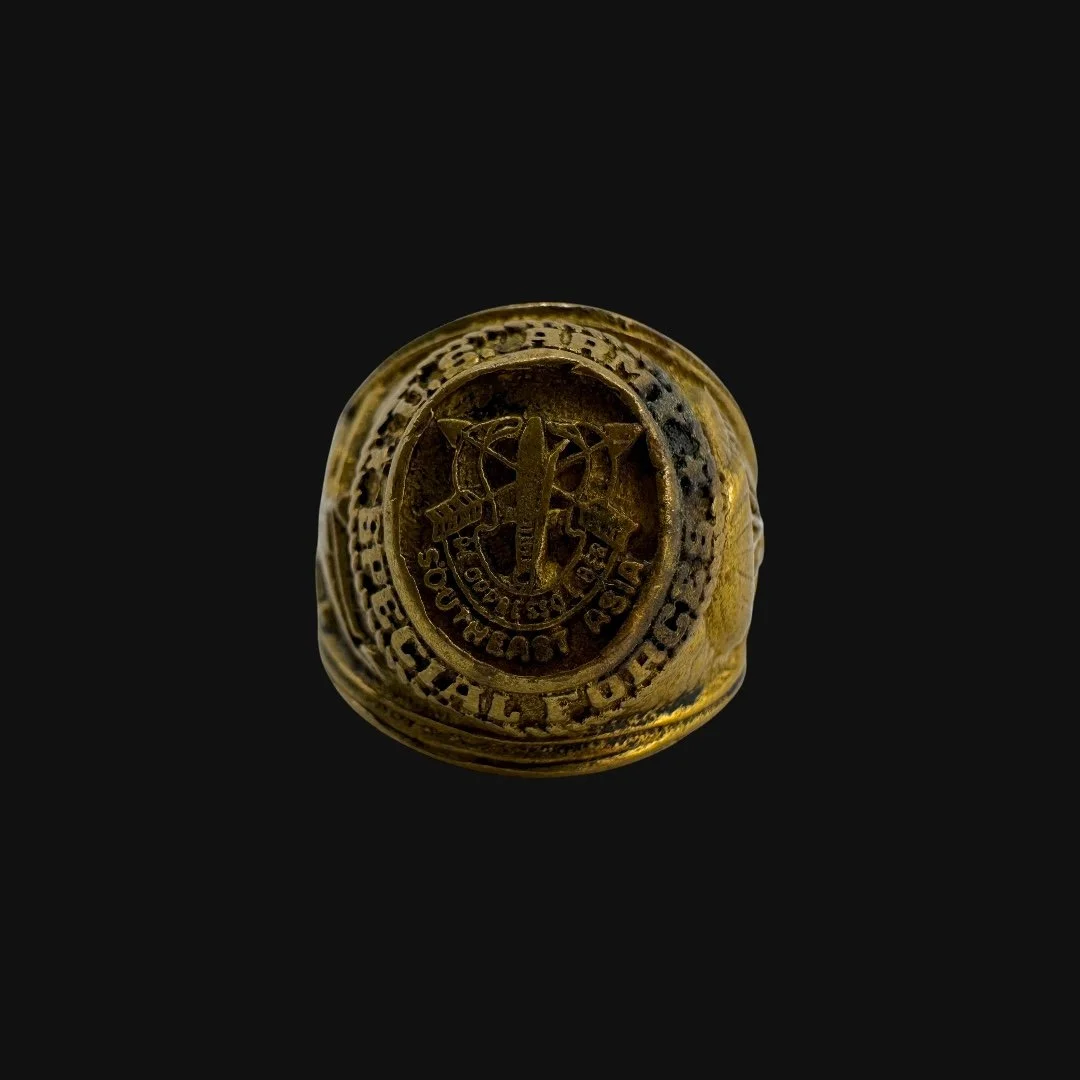 Image 3 of 14
Image 3 of 14

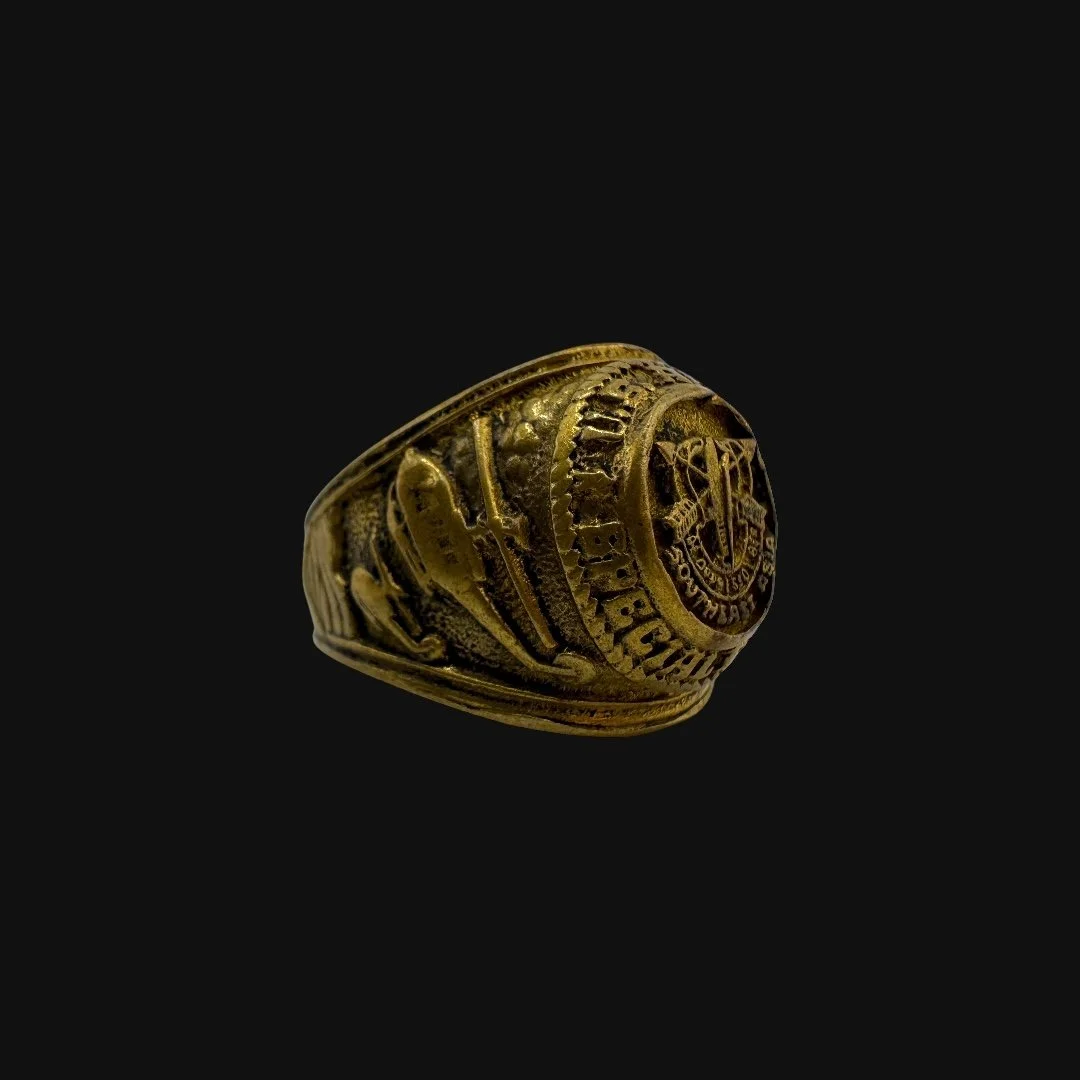 Image 4 of 14
Image 4 of 14

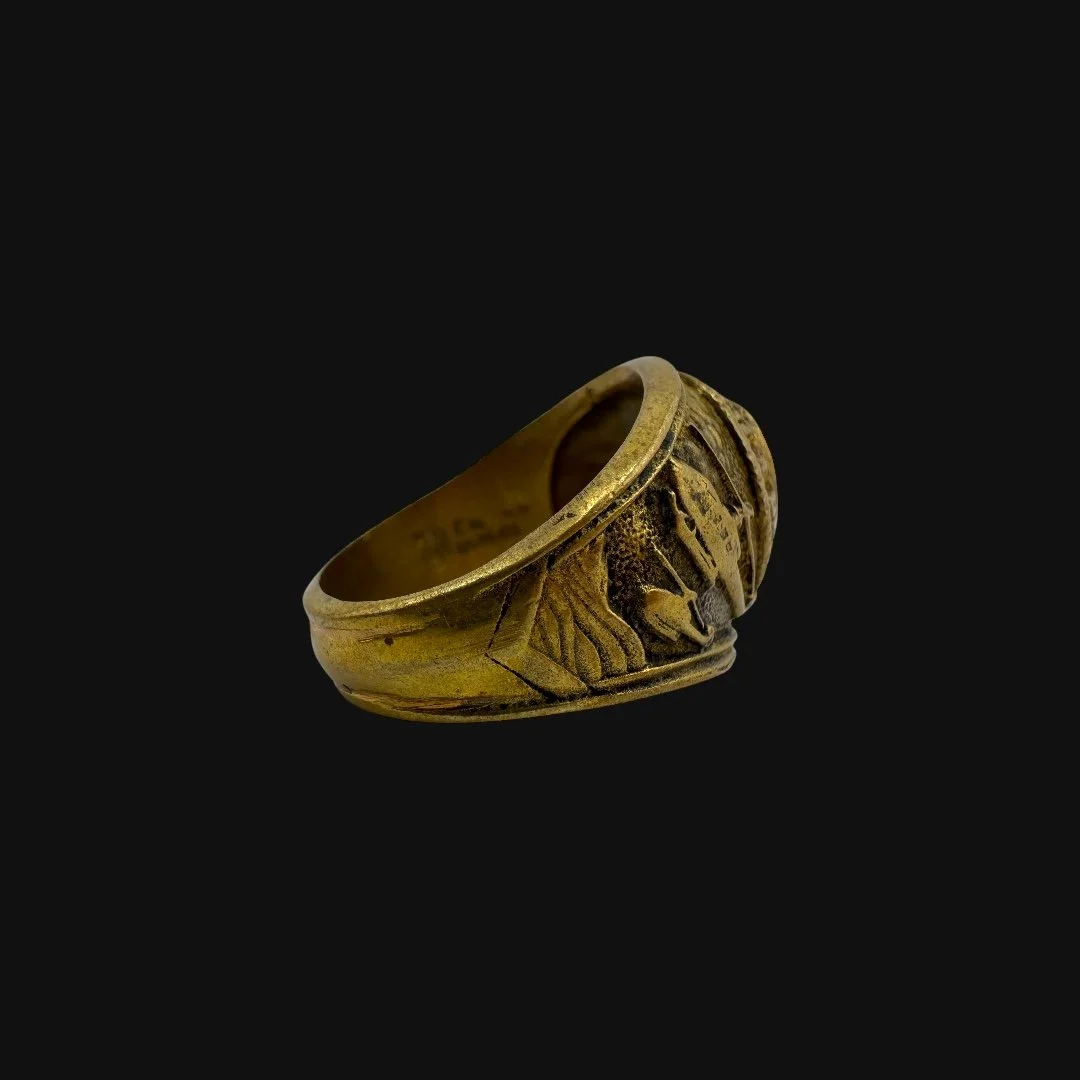 Image 5 of 14
Image 5 of 14

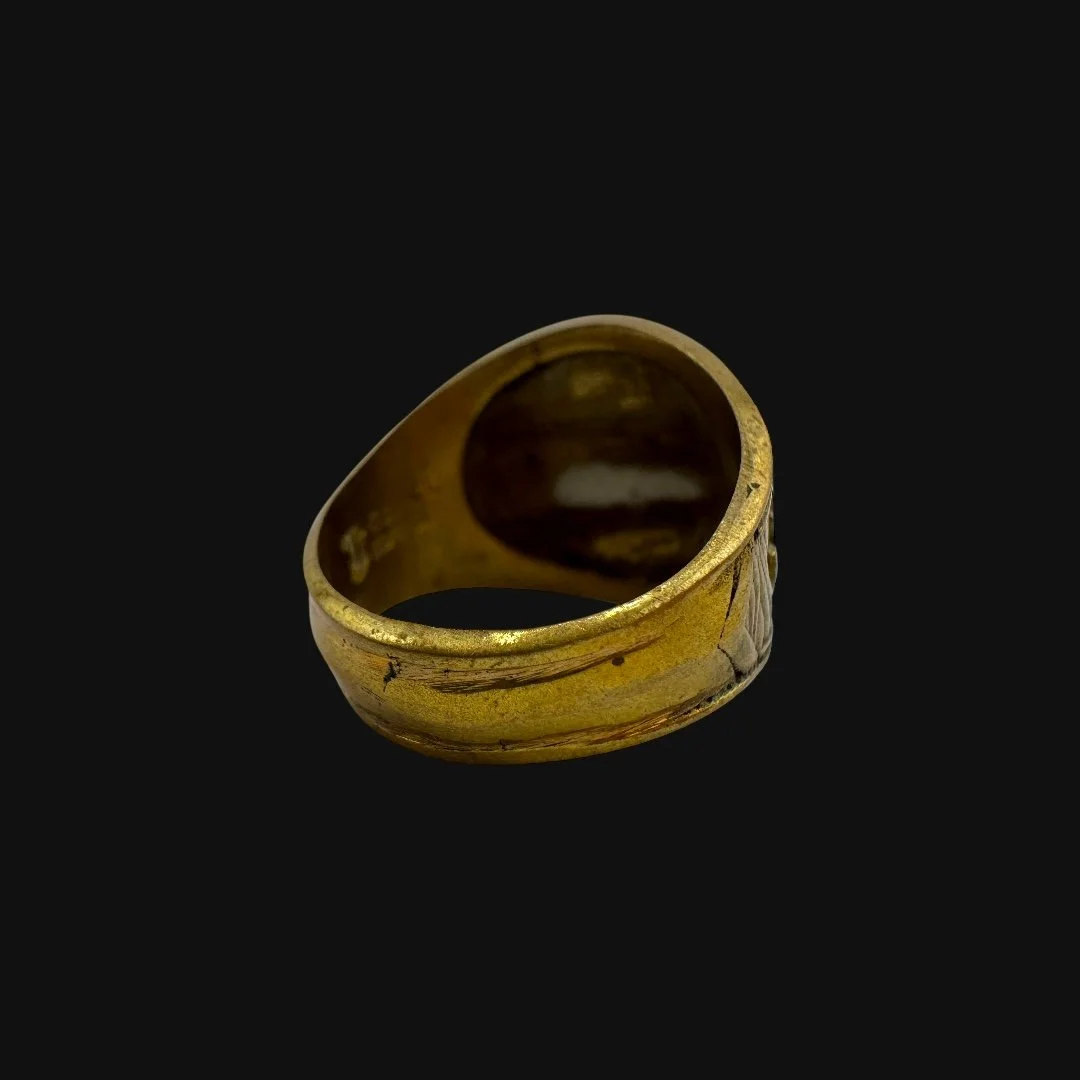 Image 6 of 14
Image 6 of 14

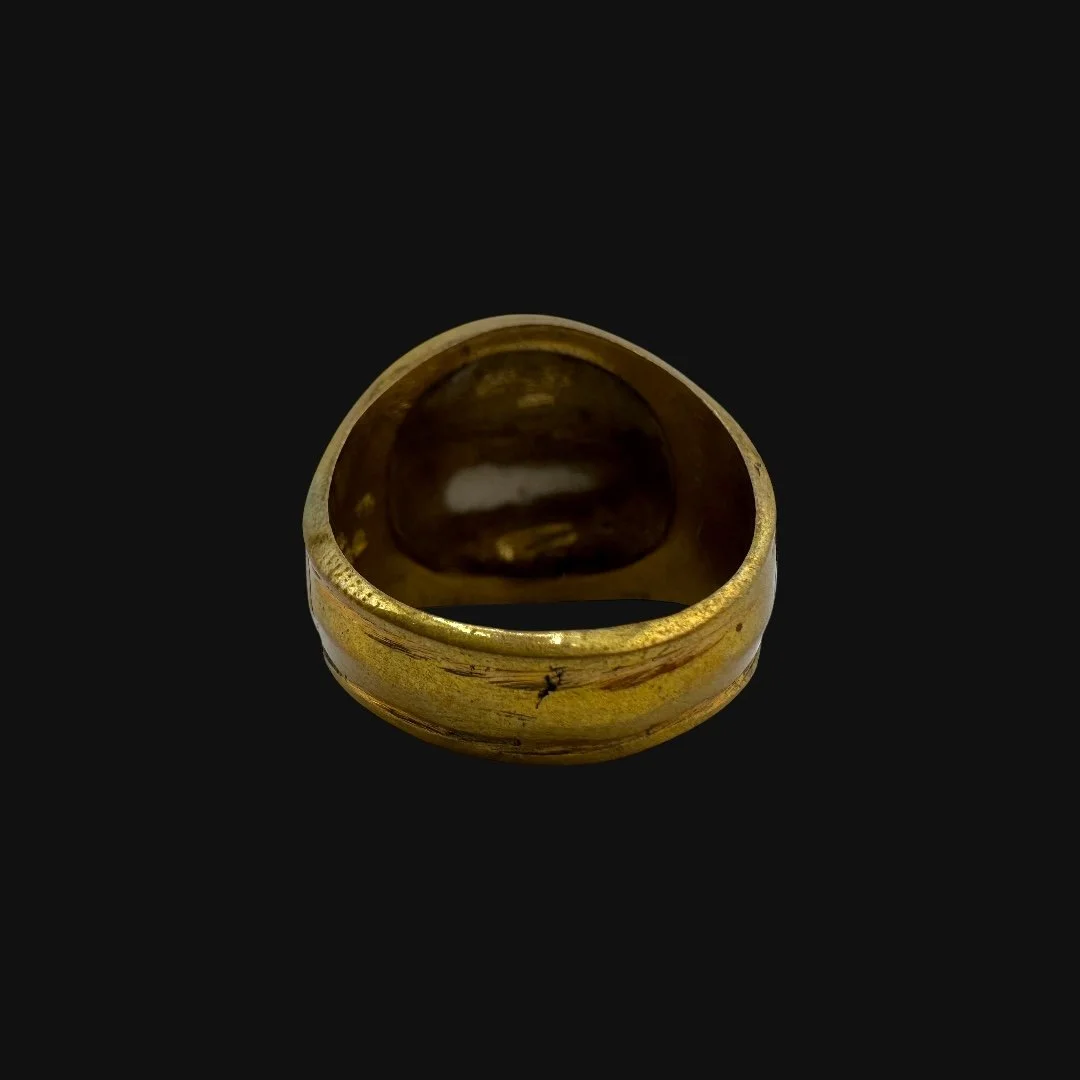 Image 7 of 14
Image 7 of 14

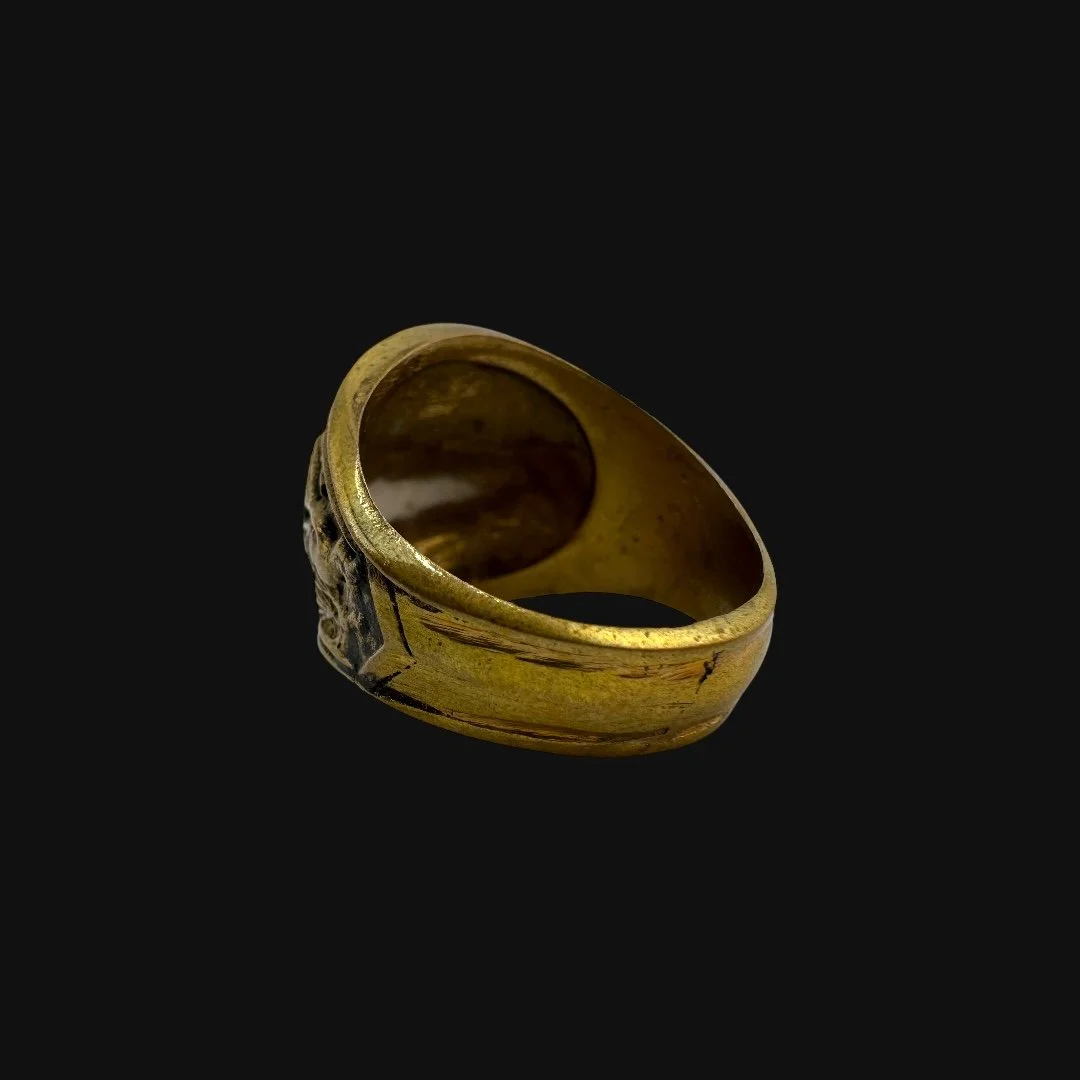 Image 8 of 14
Image 8 of 14

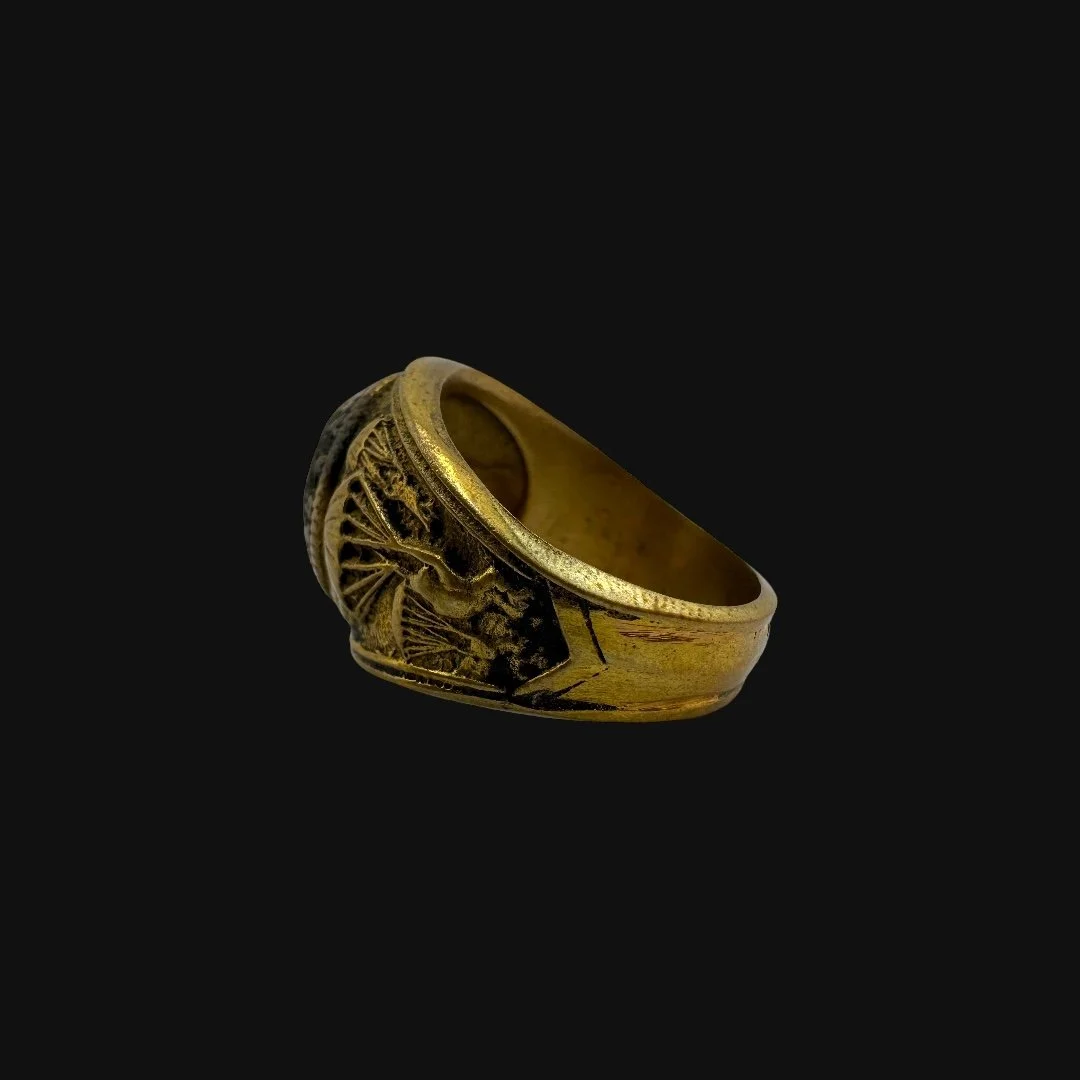 Image 9 of 14
Image 9 of 14

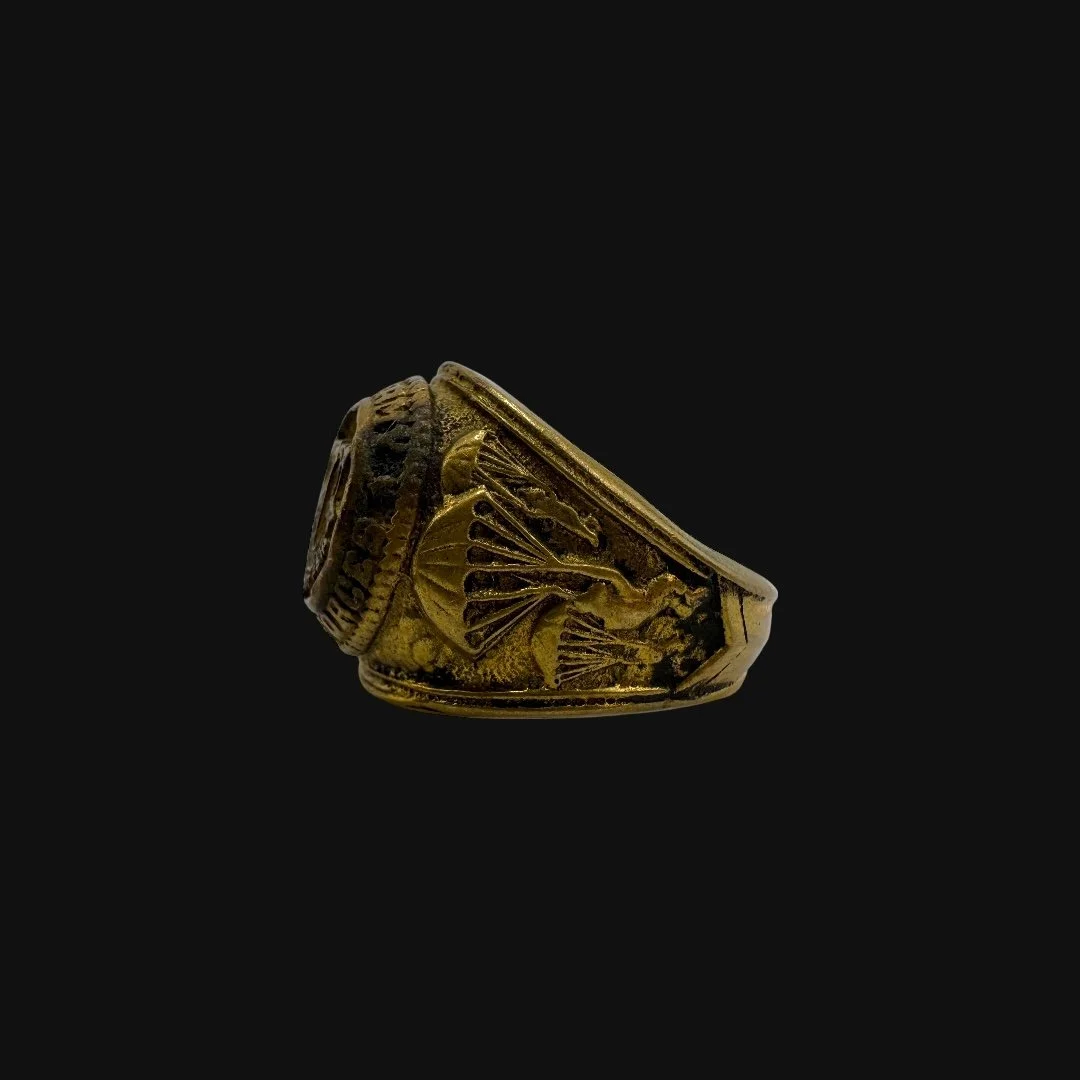 Image 10 of 14
Image 10 of 14

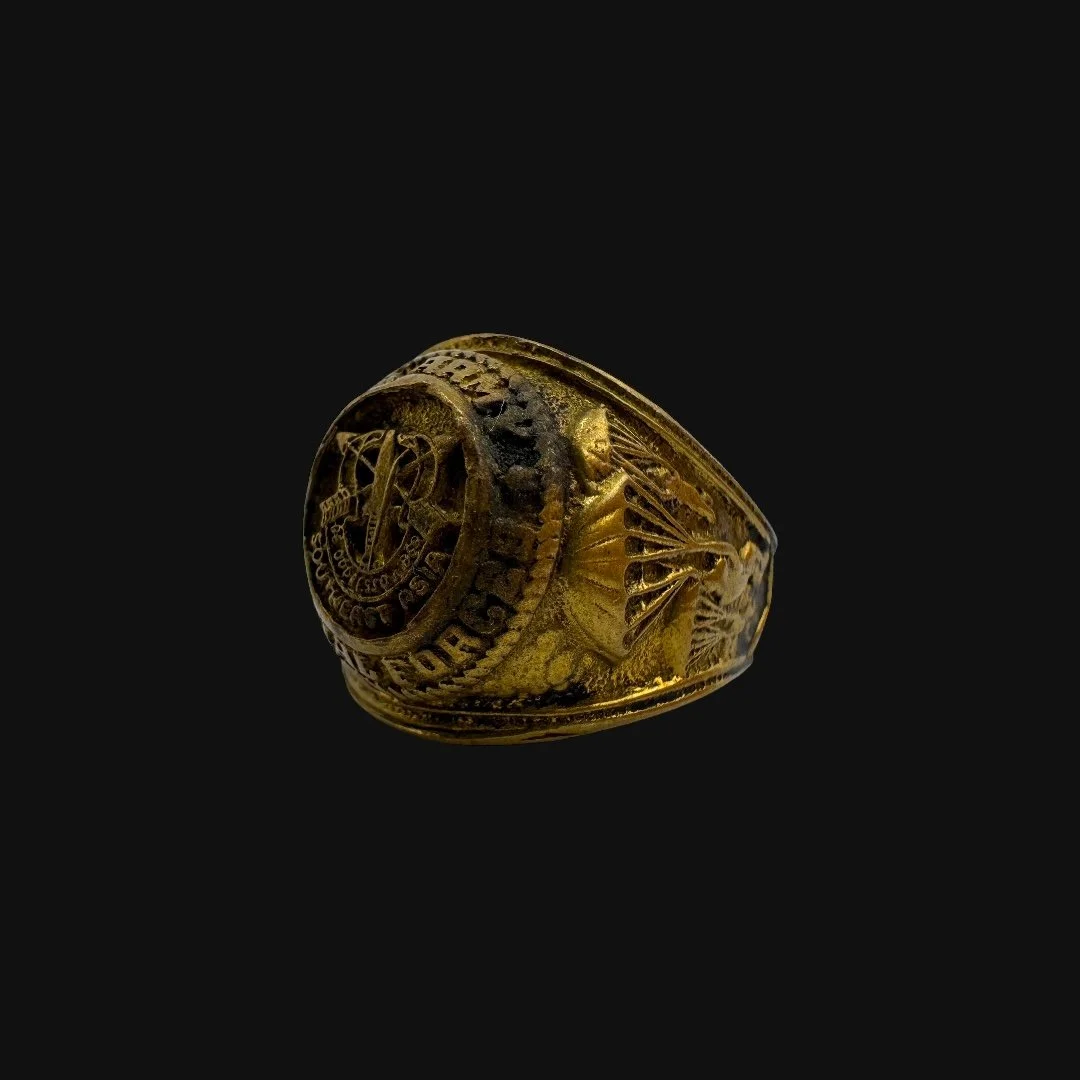 Image 11 of 14
Image 11 of 14

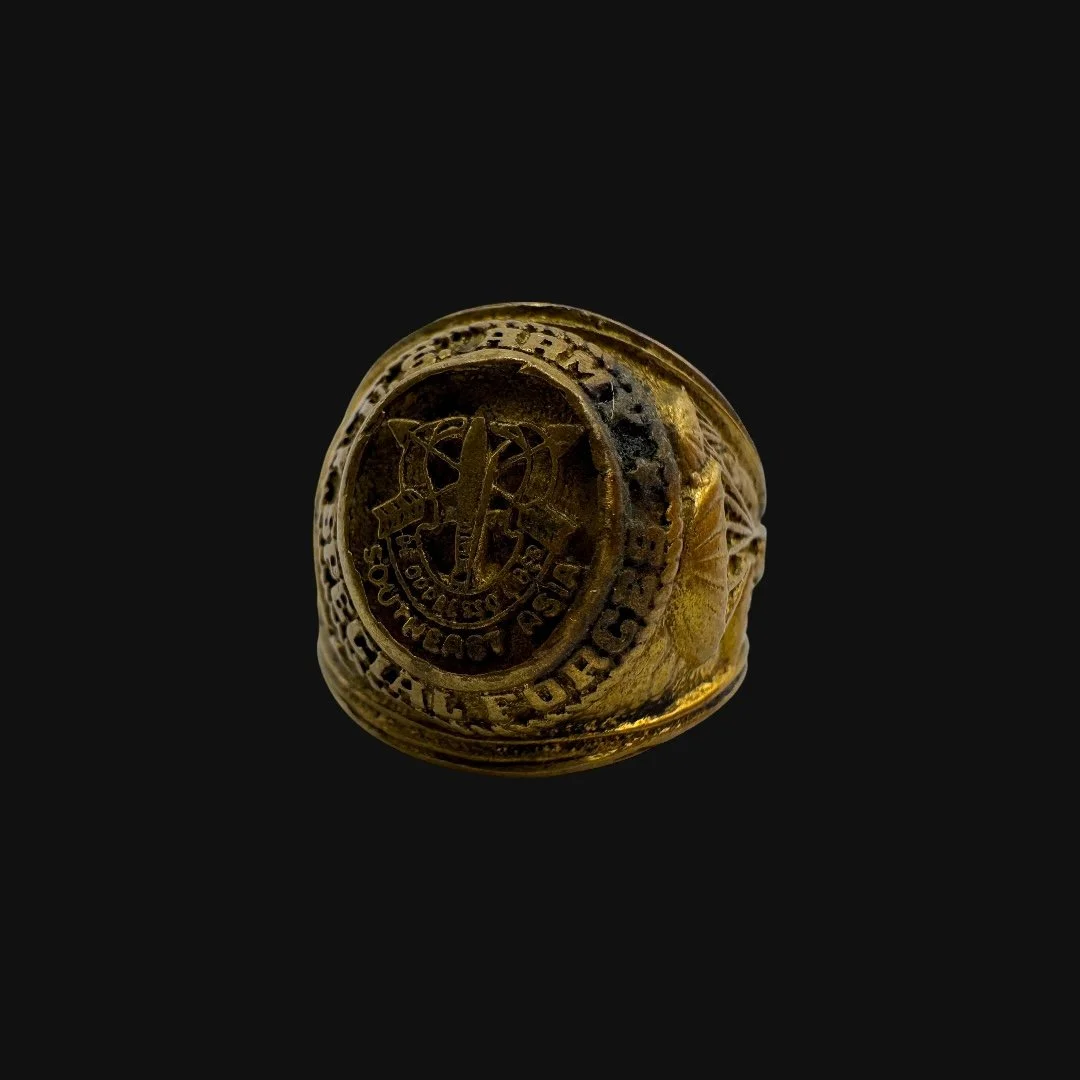 Image 12 of 14
Image 12 of 14

 Image 13 of 14
Image 13 of 14

 Image 14 of 14
Image 14 of 14















Original Vietnam War U.S. Army Special Forces Combat Soldier's Military Ring (Size 9.75)
Comes with a hand-signed C.O.A. and a full historical research write-up
From: Vietnam War
Branch: United States Army (Special Forces)
Dated: 1960’s-1970’s
Ring Size: 9.75 (US)
Wearable History Collection:
This authentic Vietnam War–era ring, preserved in its original and unaltered condition, reflects the craftsmanship and resilience of a generation that served in one of America’s most challenging conflicts. Forged during the turbulent years of the 1960s and 1970s, it carries the weight of history while remaining fully suitable for modern wear today. As part of our exclusive Vietnam War “Wearable History Ring Collection,” it offers a rare chance to own and wear a genuine artifact of the era. Both a timeless accessory and a direct link to the men who endured the jungles, firebases, and patrols of Vietnam, this one-of-a-kind ring stands as a wearable tribute to their courage, sacrifice, and brotherhood.
Historical Significance to the U.S. Army Special Forces in Vietnam:
The U.S. Army Special Forces, the famed Green Berets, played one of the most unique and historically significant roles of any American unit in the Vietnam War. Unlike conventional forces, they specialized in counterinsurgency, unconventional warfare, and training indigenous troops. Beginning in the late 1950s, Special Forces established theCivilian Irregular Defense Group (CIDG)program, embedding themselves in rural and border regions, especially among the Montagnards and other ethnic minorities. They not only trained local militias but also provided medical care, built schools, and introduced agricultural improvements. Living among the people they served, the Green Berets earned trust and created networks of resistance to Viet Cong influence. This blend of civic action and military training made them a cornerstone of the U.S. effort to win “hearts and minds.”
Their camps often became flashpoints of the war. AtA Shau Valley in 1966, a Special Forces camp was overrun after a fierce defense, showcasing the intensity of their frontline role. During theTet Offensive of 1968, many camps were attacked, most famously atLang Vei, where Green Berets and Montagnard allies fought against a North Vietnamese tank assault. In addition to these defensive battles, Special Forces were central to deep reconnaissance and covert missions. The highly secretiveStudies and Observations Group (SOG), composed heavily of Green Berets, conducted daring cross-border raids into Laos and Cambodia to interdict theHo Chi Minh Trail, sabotage supply lines, and gather intelligence. These operations were extraordinarily dangerous, yet they provided critical insights that shaped American strategy.
By the time of U.S. withdrawal, the Green Berets had trained tens of thousands of irregular fighters, fought in some of the war’s most desperate battles, and pioneered methods of unconventional warfare that remain central to modern special operations. More than 800 Special Forces soldiers were killed in Vietnam, a testament to the risks they faced and the sacrifices they made. Their legacy lies not only in their combat achievements but also in their ability to combine cultural understanding, civic engagement, and military skill into a single approach. Vietnam became a defining chapter in the history of the Green Berets, solidifying their reputation as America’s premier unconventional warriors and leaving an enduring mark on U.S. military doctrine.
The Legacy Within This Ring:
This Vietnam War U.S. Army Special Forces ring carries the legacy of a Green Beret who served in one of the most demanding and unconventional roles of the war. For Special Forces, Vietnam was a proving ground where every mission required ingenuity, endurance, and trust forged with allies in the field. From remote mountain camps in the Central Highlands to covert operations along the Ho Chi Minh Trail, these soldiers lived and fought in the harshest conditions, often cut off from larger support. The ring became a personal emblem of that service, etched with the memory of sacrifice, brotherhood, and the relentless drive to persevere. Today, this ring endures as more than a piece of jewelry. It is a tangible relic of the Special Forces legacy in Vietnam, preserving the story of the soldier who wore it and honoring the broader sacrifices of America’s elite warriors who carried the fight into the heart of Southeast Asia.
Comes with a hand-signed C.O.A. and a full historical research write-up
From: Vietnam War
Branch: United States Army (Special Forces)
Dated: 1960’s-1970’s
Ring Size: 9.75 (US)
Wearable History Collection:
This authentic Vietnam War–era ring, preserved in its original and unaltered condition, reflects the craftsmanship and resilience of a generation that served in one of America’s most challenging conflicts. Forged during the turbulent years of the 1960s and 1970s, it carries the weight of history while remaining fully suitable for modern wear today. As part of our exclusive Vietnam War “Wearable History Ring Collection,” it offers a rare chance to own and wear a genuine artifact of the era. Both a timeless accessory and a direct link to the men who endured the jungles, firebases, and patrols of Vietnam, this one-of-a-kind ring stands as a wearable tribute to their courage, sacrifice, and brotherhood.
Historical Significance to the U.S. Army Special Forces in Vietnam:
The U.S. Army Special Forces, the famed Green Berets, played one of the most unique and historically significant roles of any American unit in the Vietnam War. Unlike conventional forces, they specialized in counterinsurgency, unconventional warfare, and training indigenous troops. Beginning in the late 1950s, Special Forces established theCivilian Irregular Defense Group (CIDG)program, embedding themselves in rural and border regions, especially among the Montagnards and other ethnic minorities. They not only trained local militias but also provided medical care, built schools, and introduced agricultural improvements. Living among the people they served, the Green Berets earned trust and created networks of resistance to Viet Cong influence. This blend of civic action and military training made them a cornerstone of the U.S. effort to win “hearts and minds.”
Their camps often became flashpoints of the war. AtA Shau Valley in 1966, a Special Forces camp was overrun after a fierce defense, showcasing the intensity of their frontline role. During theTet Offensive of 1968, many camps were attacked, most famously atLang Vei, where Green Berets and Montagnard allies fought against a North Vietnamese tank assault. In addition to these defensive battles, Special Forces were central to deep reconnaissance and covert missions. The highly secretiveStudies and Observations Group (SOG), composed heavily of Green Berets, conducted daring cross-border raids into Laos and Cambodia to interdict theHo Chi Minh Trail, sabotage supply lines, and gather intelligence. These operations were extraordinarily dangerous, yet they provided critical insights that shaped American strategy.
By the time of U.S. withdrawal, the Green Berets had trained tens of thousands of irregular fighters, fought in some of the war’s most desperate battles, and pioneered methods of unconventional warfare that remain central to modern special operations. More than 800 Special Forces soldiers were killed in Vietnam, a testament to the risks they faced and the sacrifices they made. Their legacy lies not only in their combat achievements but also in their ability to combine cultural understanding, civic engagement, and military skill into a single approach. Vietnam became a defining chapter in the history of the Green Berets, solidifying their reputation as America’s premier unconventional warriors and leaving an enduring mark on U.S. military doctrine.
The Legacy Within This Ring:
This Vietnam War U.S. Army Special Forces ring carries the legacy of a Green Beret who served in one of the most demanding and unconventional roles of the war. For Special Forces, Vietnam was a proving ground where every mission required ingenuity, endurance, and trust forged with allies in the field. From remote mountain camps in the Central Highlands to covert operations along the Ho Chi Minh Trail, these soldiers lived and fought in the harshest conditions, often cut off from larger support. The ring became a personal emblem of that service, etched with the memory of sacrifice, brotherhood, and the relentless drive to persevere. Today, this ring endures as more than a piece of jewelry. It is a tangible relic of the Special Forces legacy in Vietnam, preserving the story of the soldier who wore it and honoring the broader sacrifices of America’s elite warriors who carried the fight into the heart of Southeast Asia.
